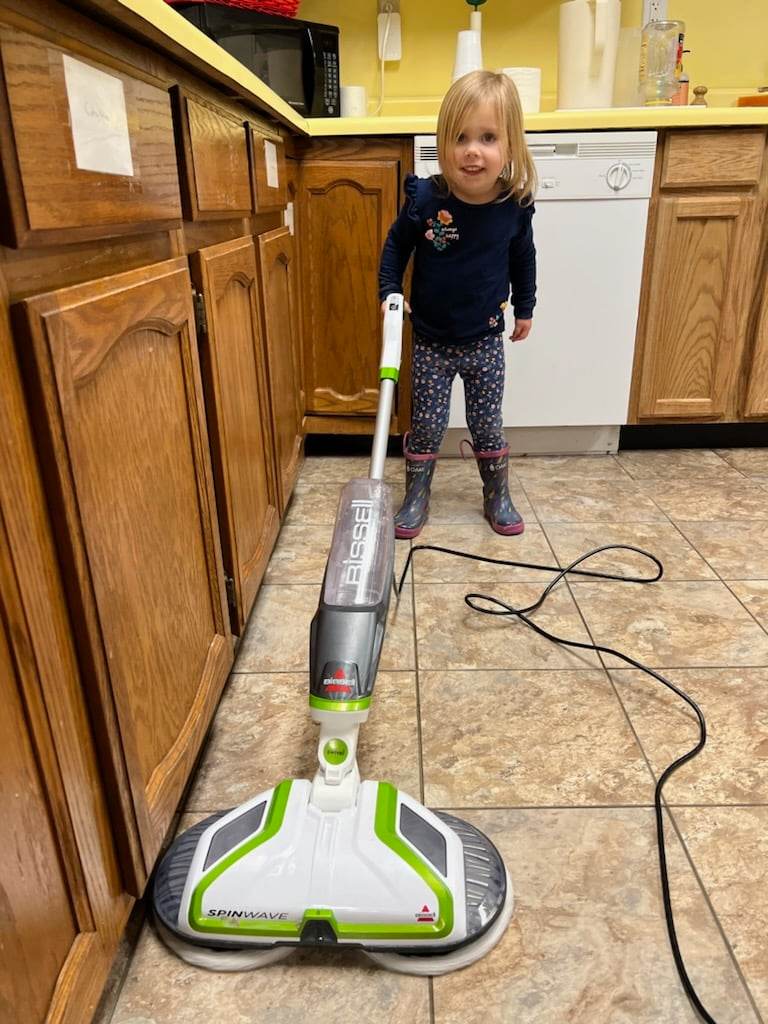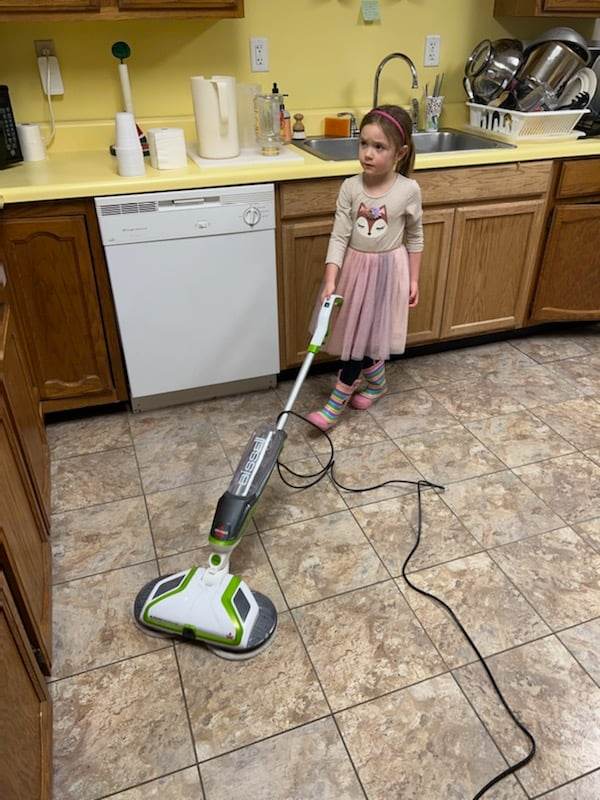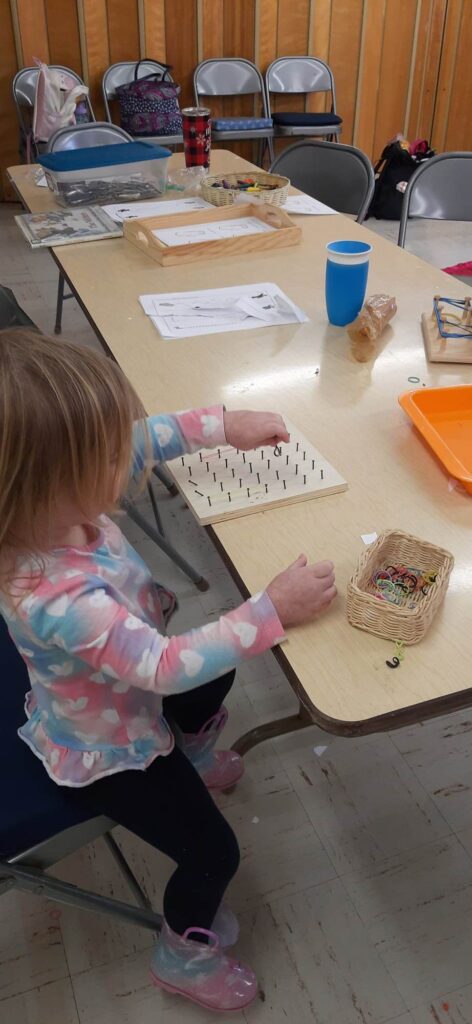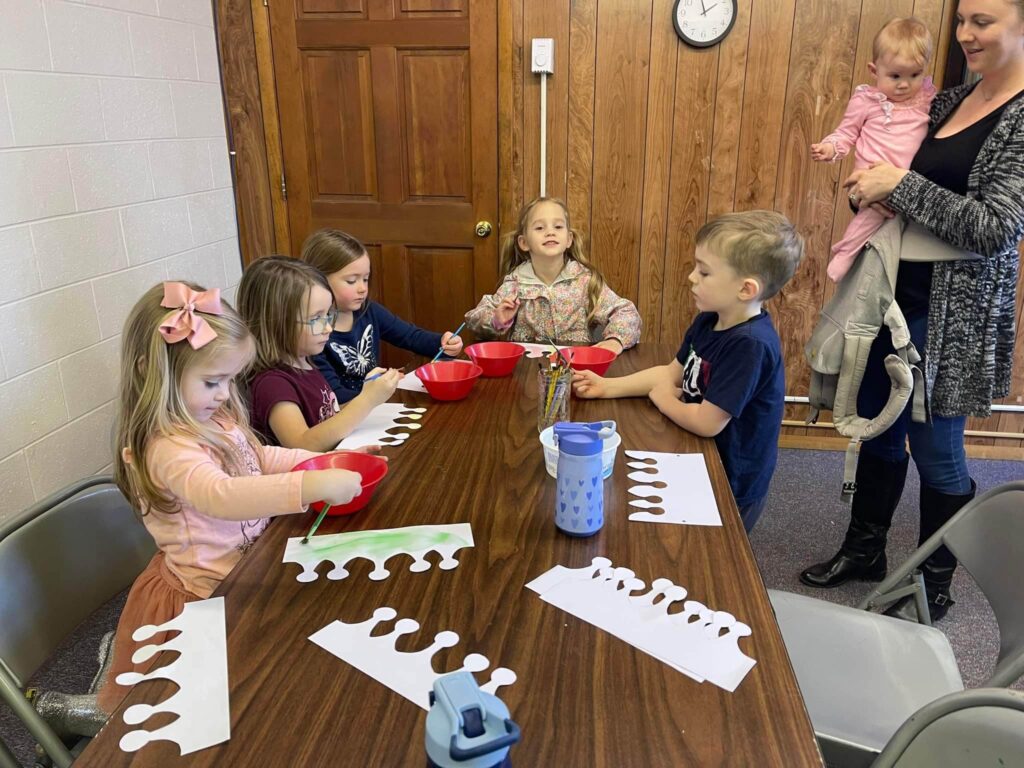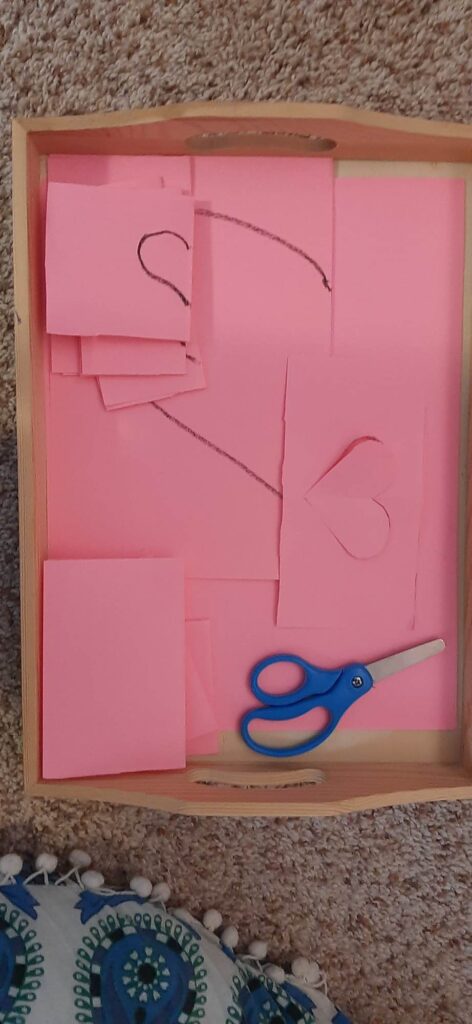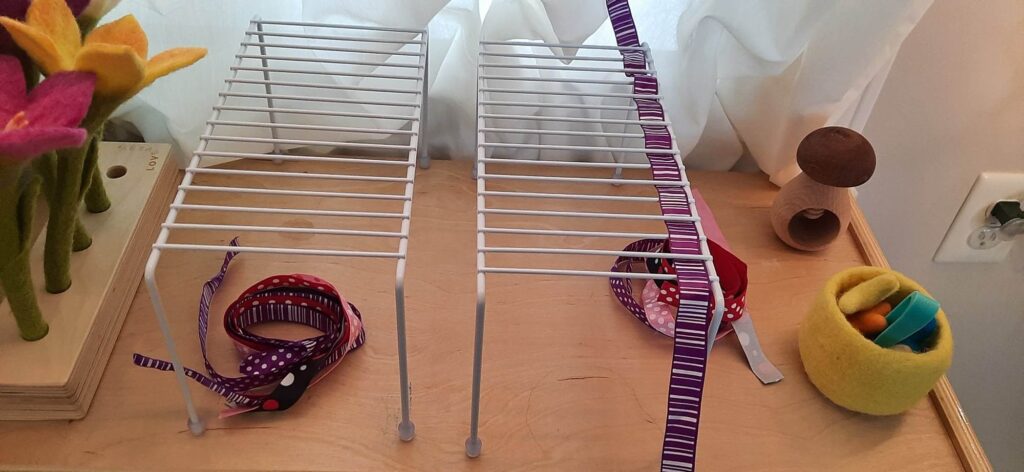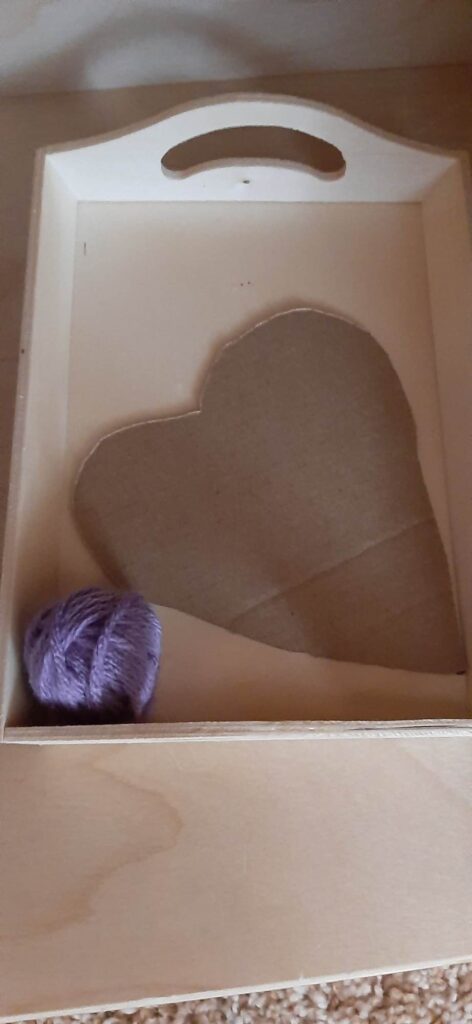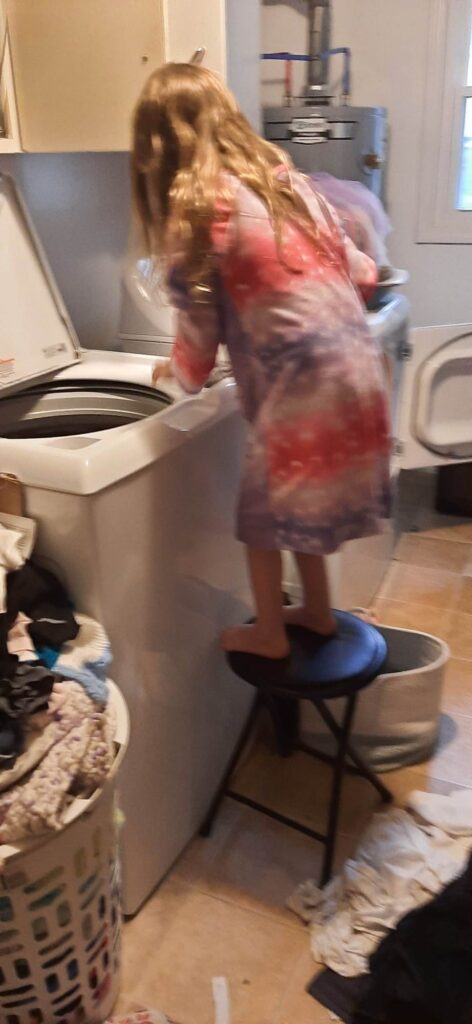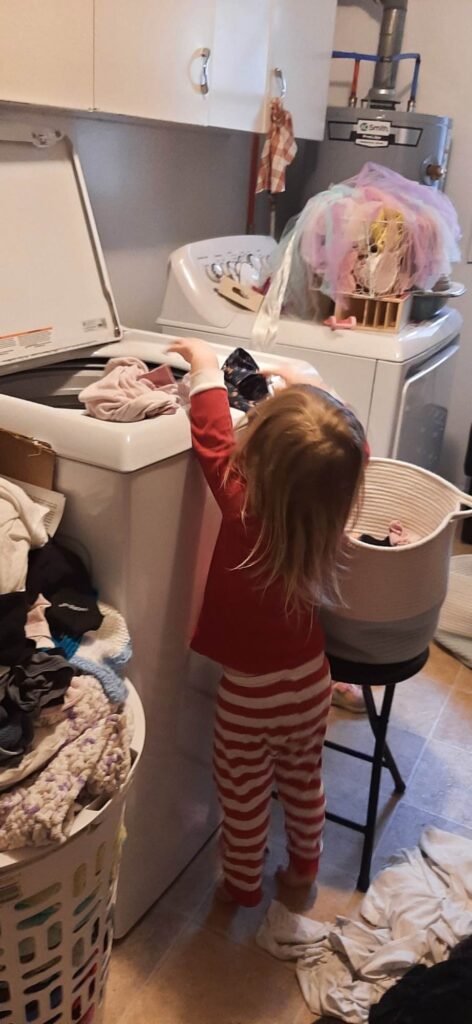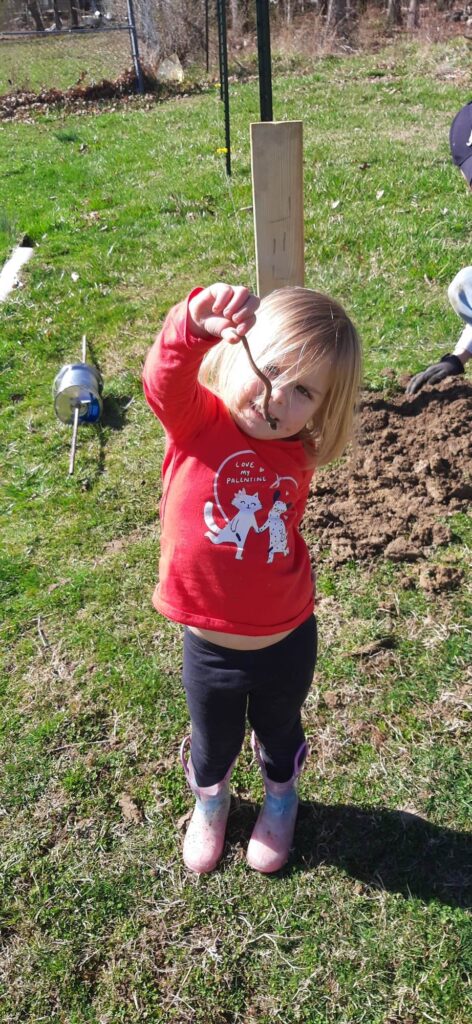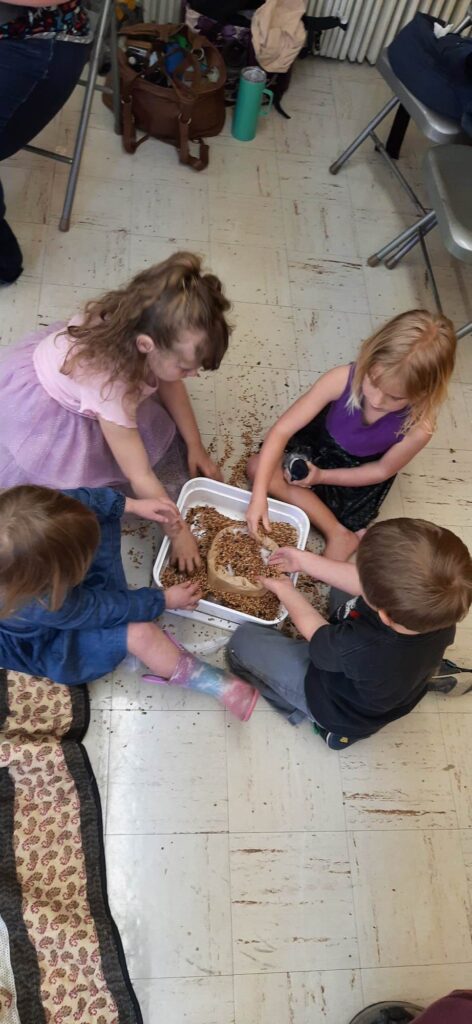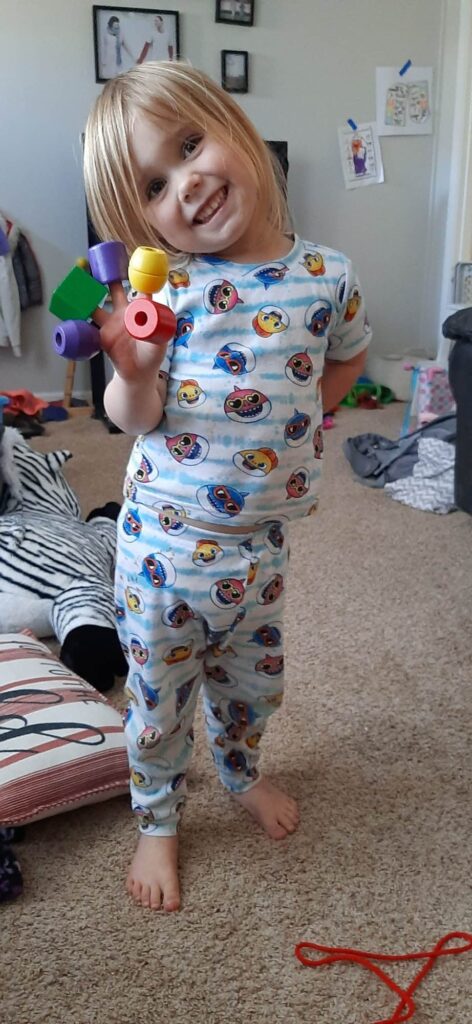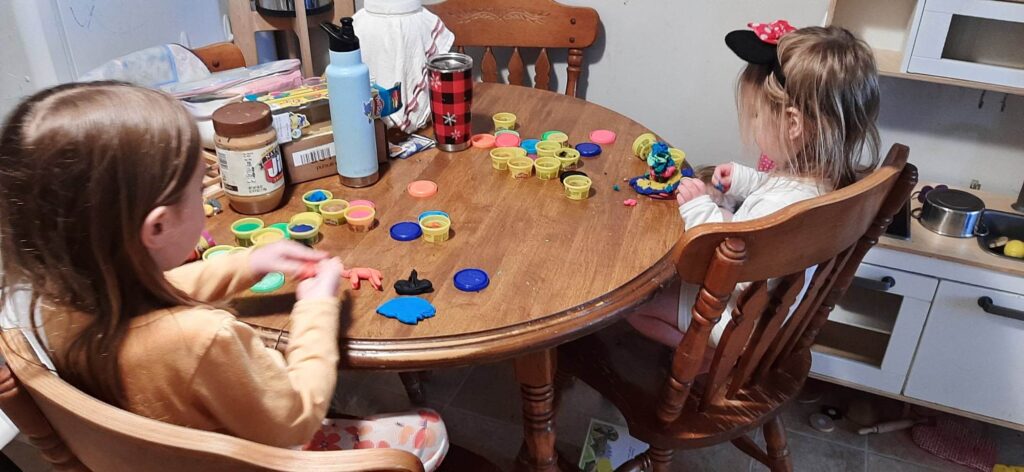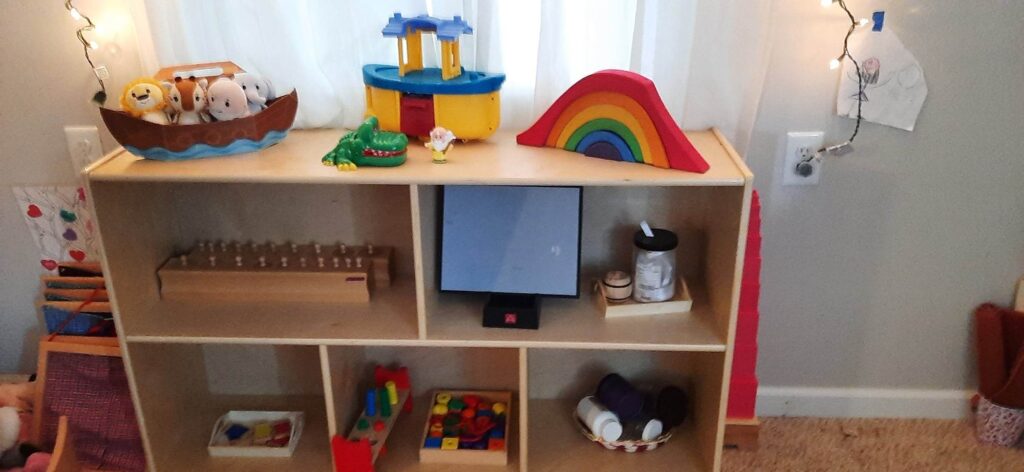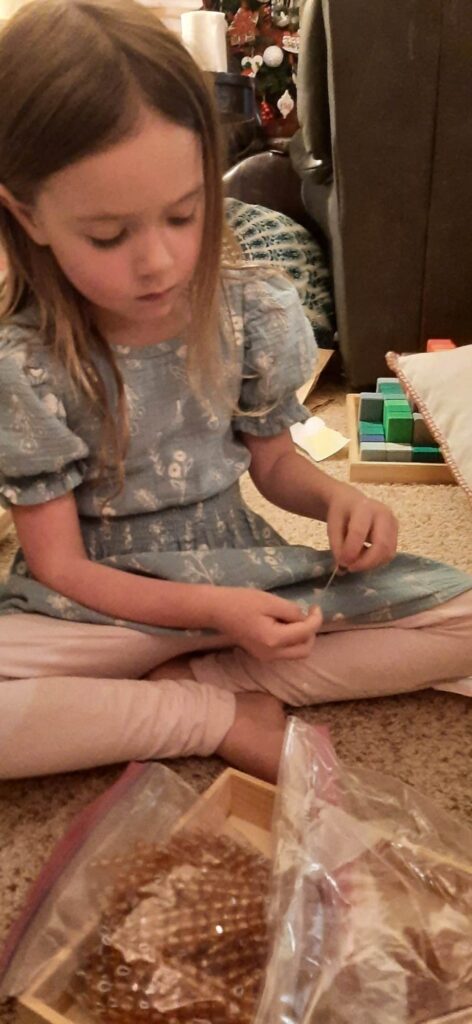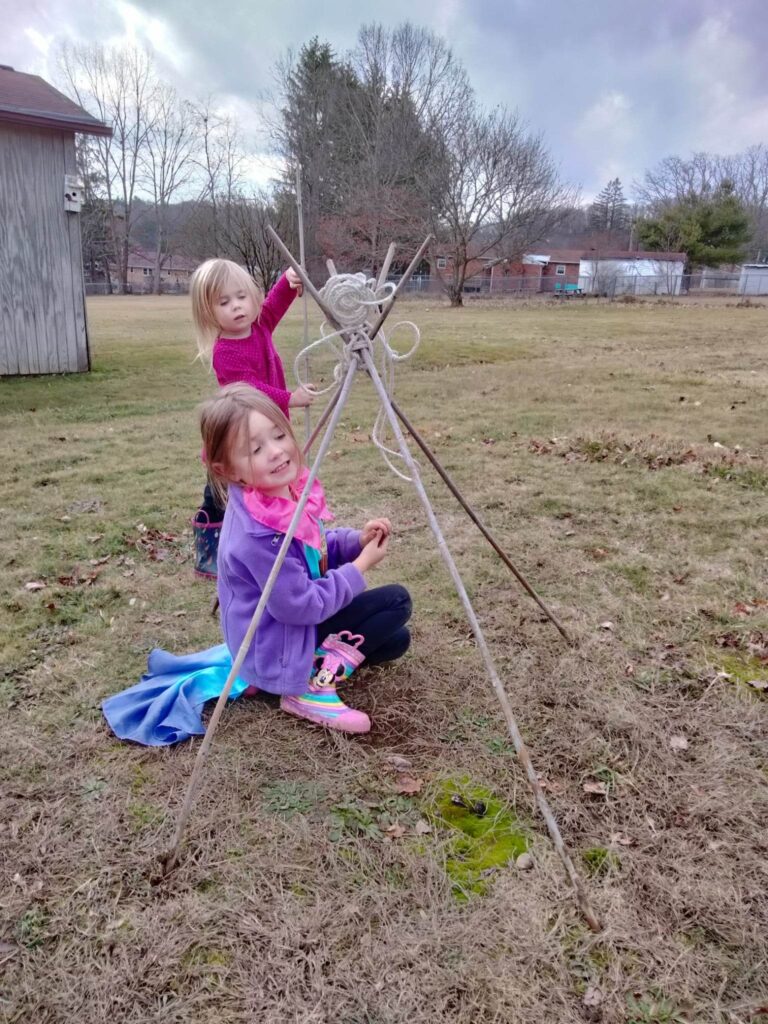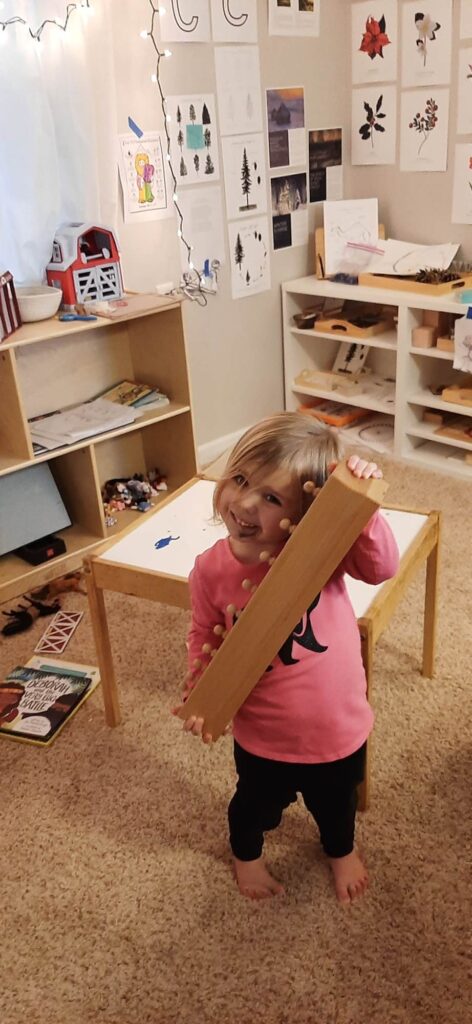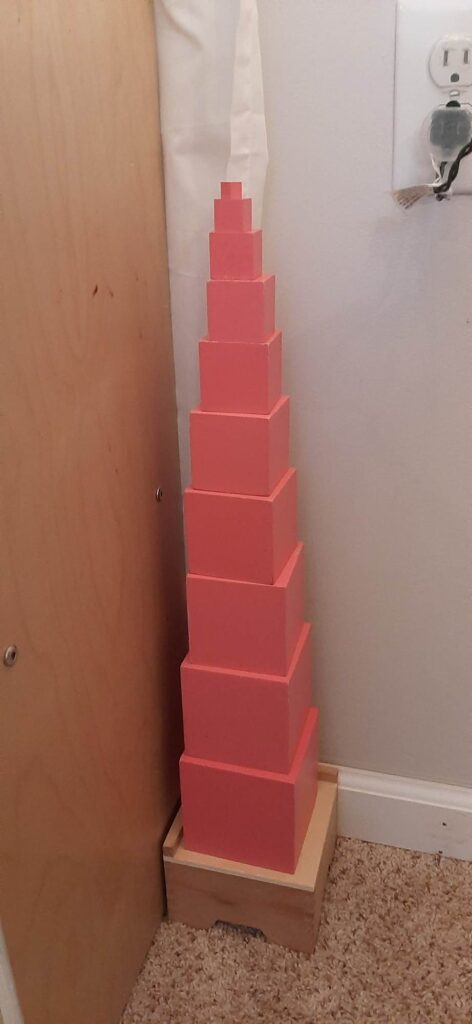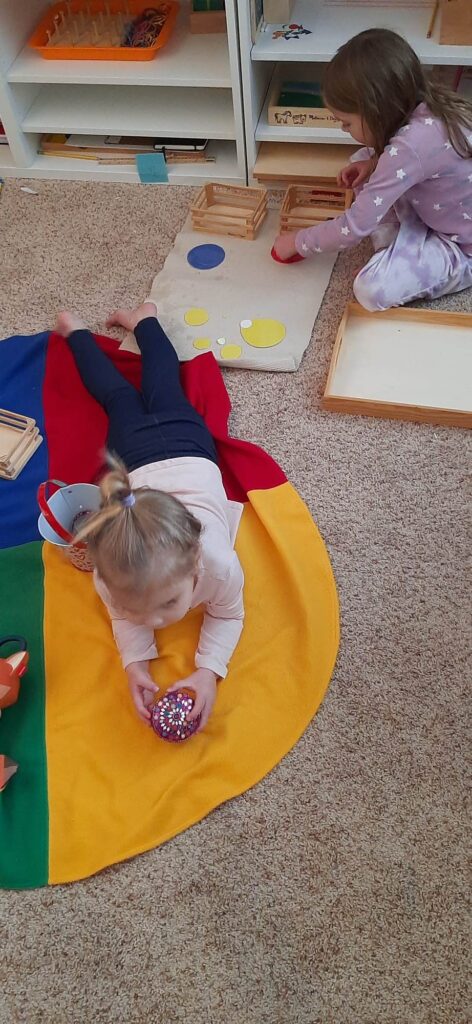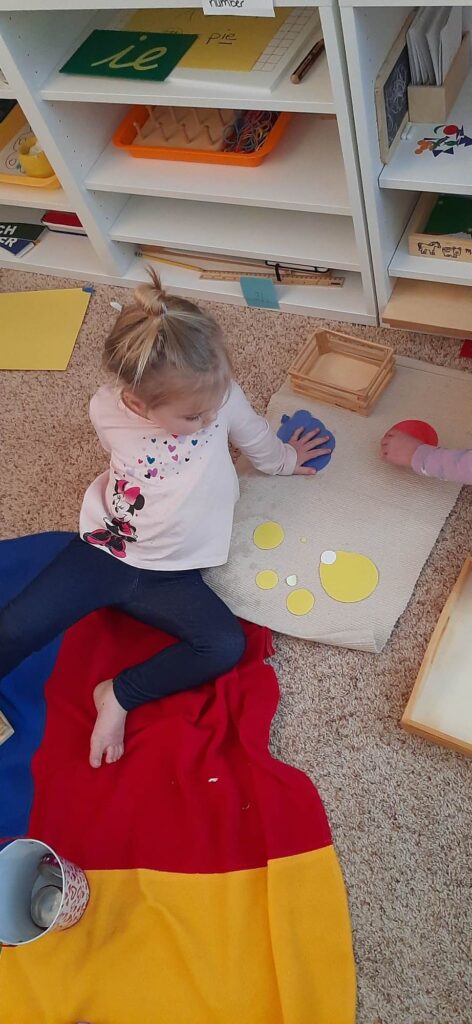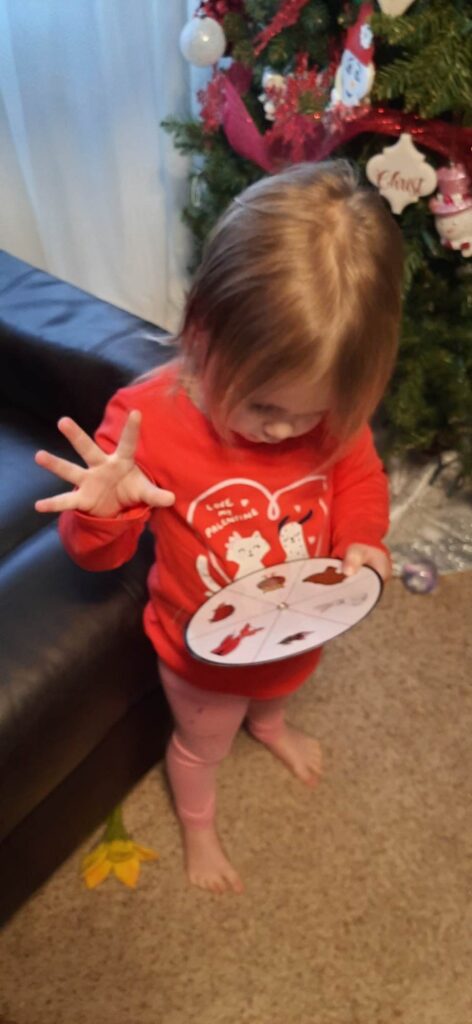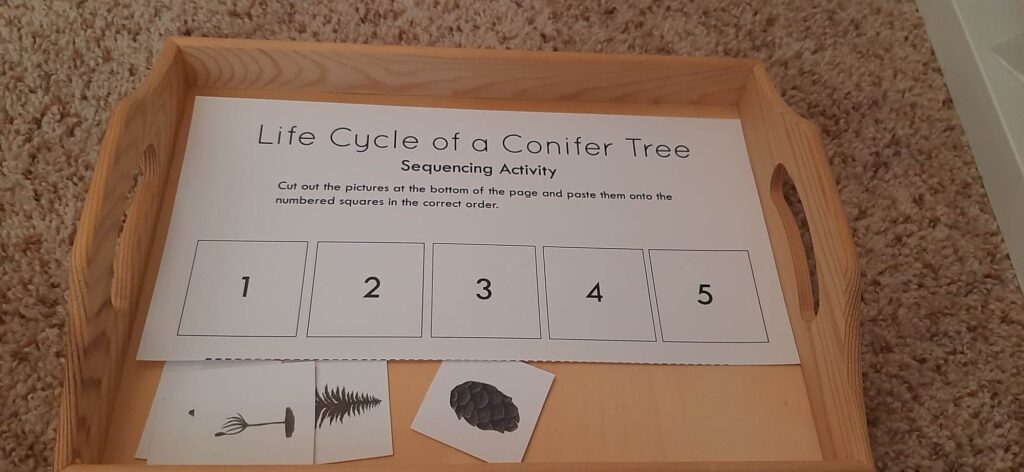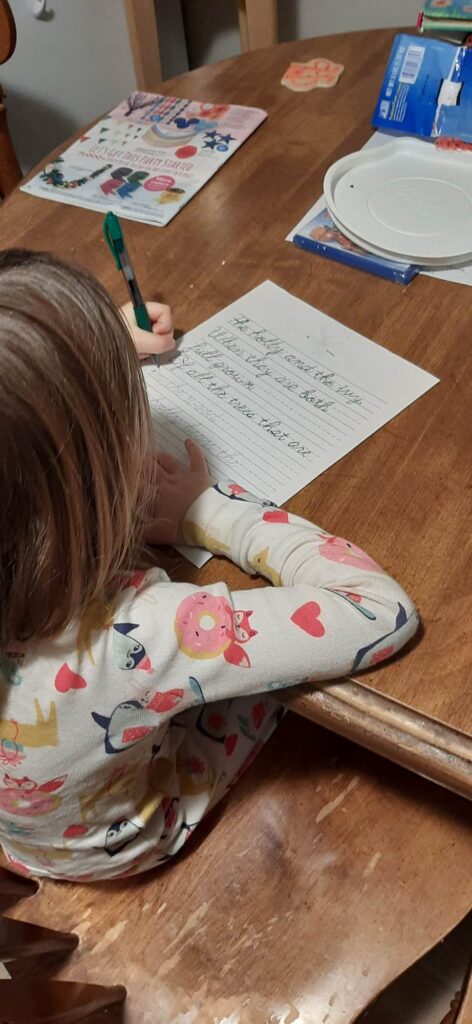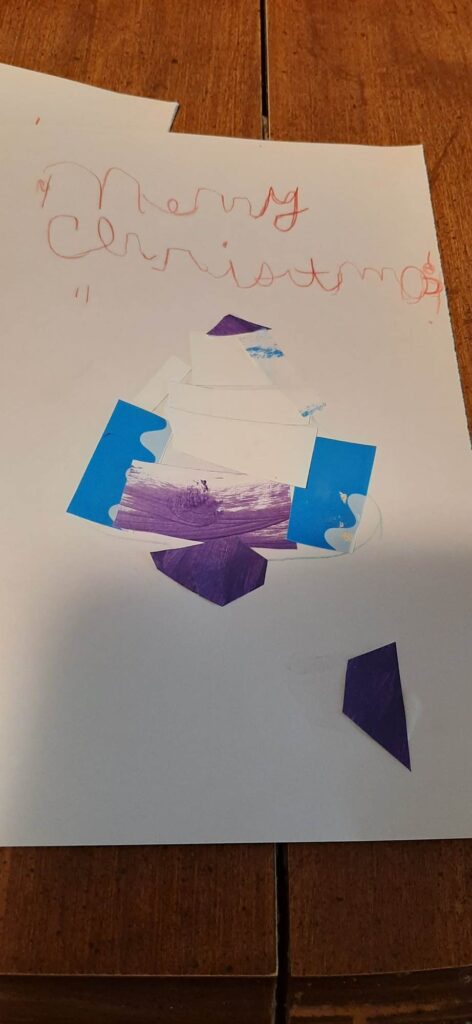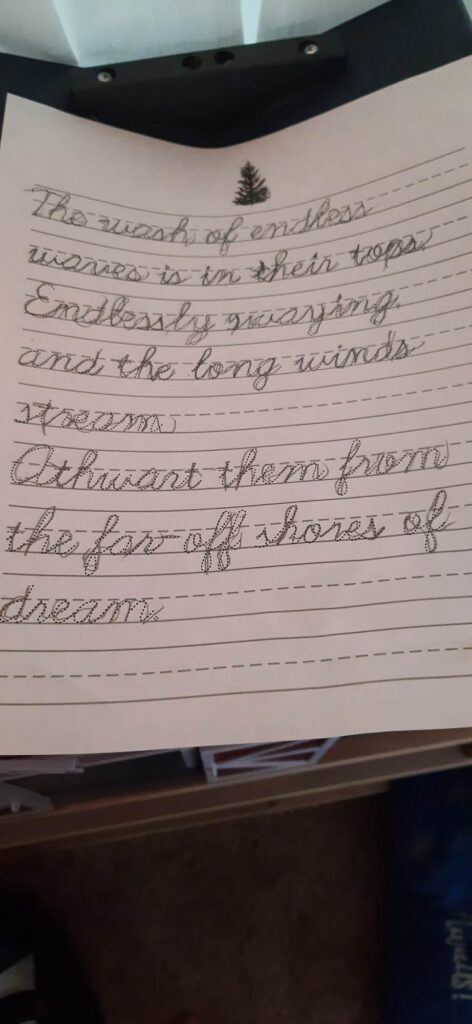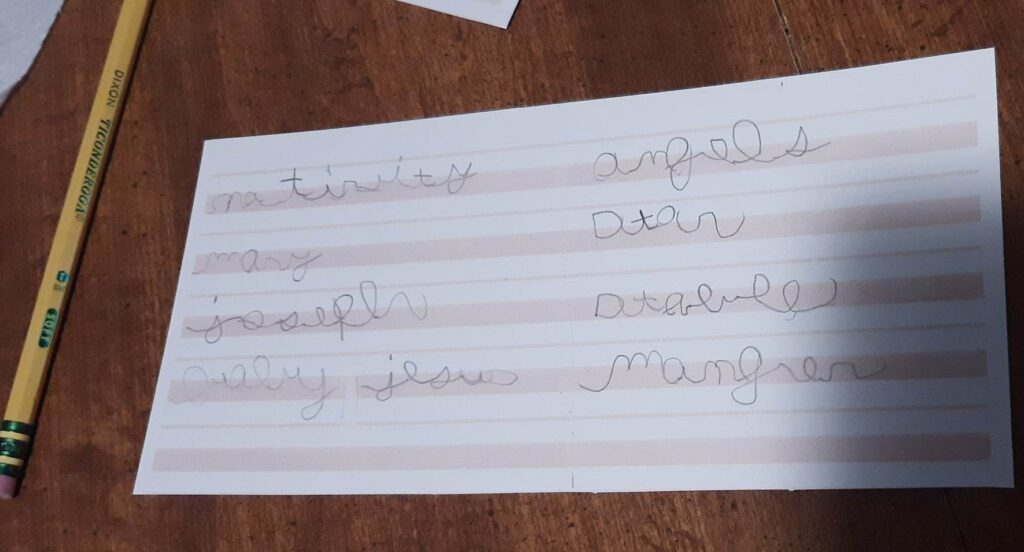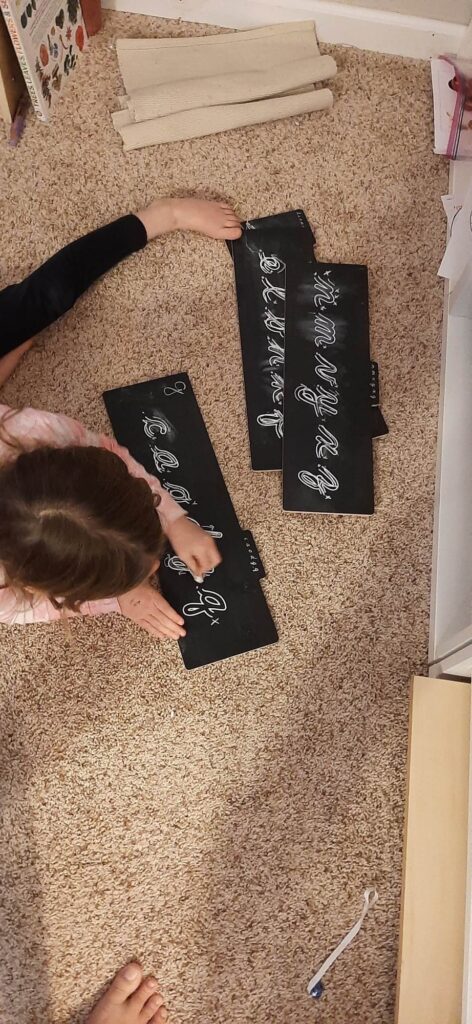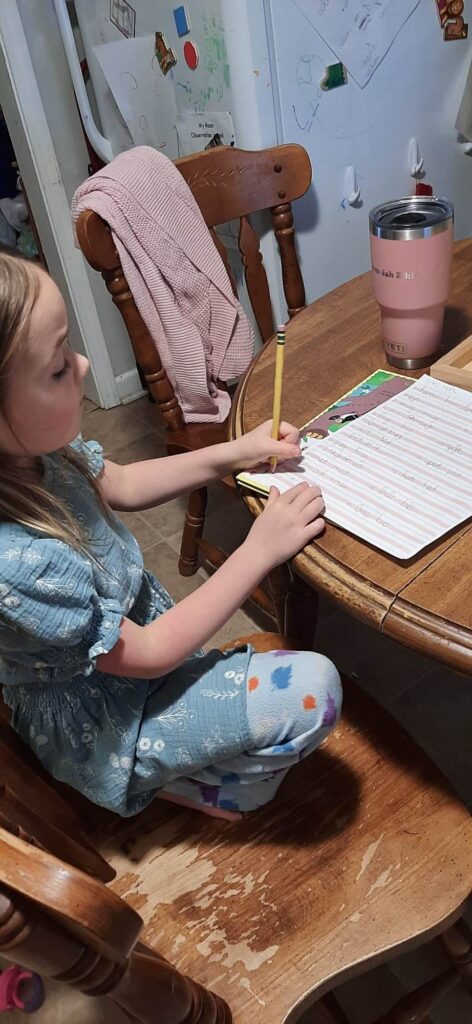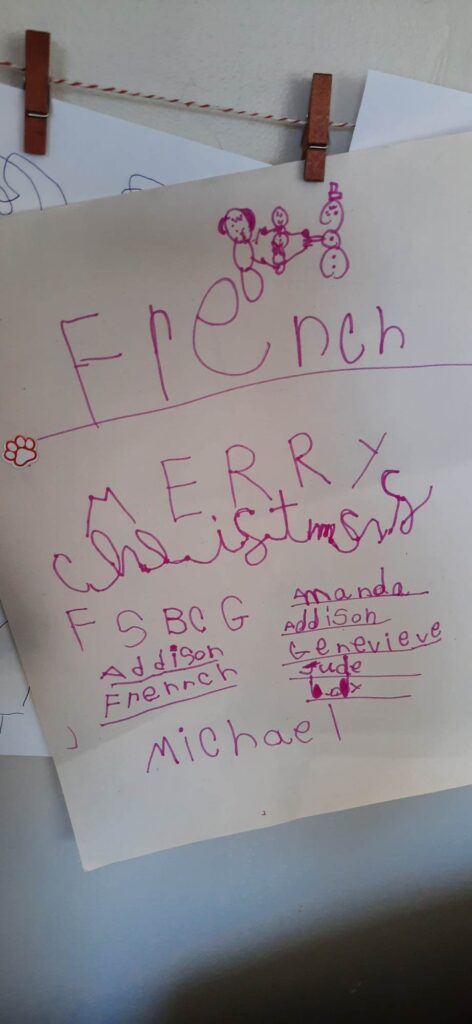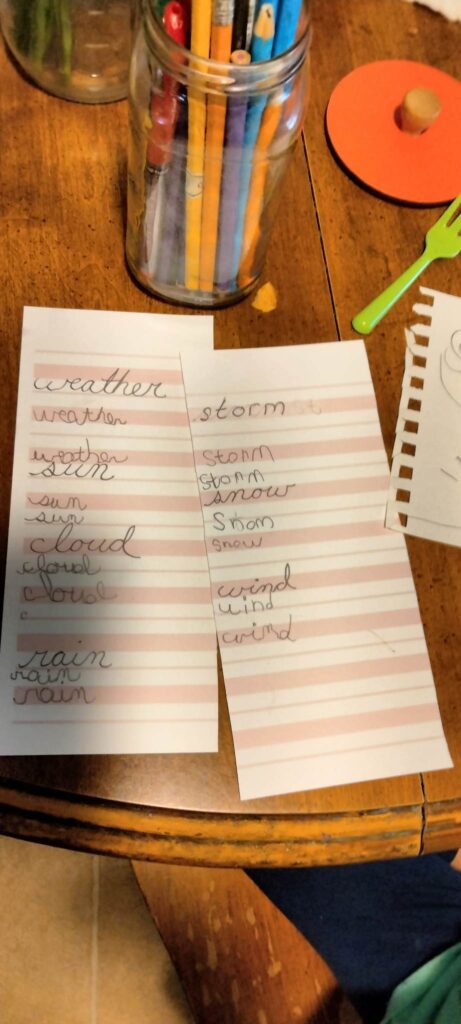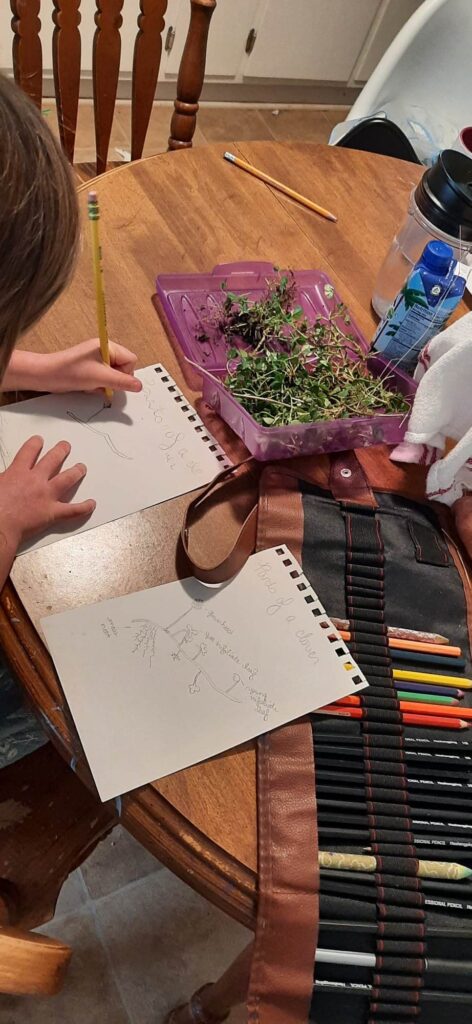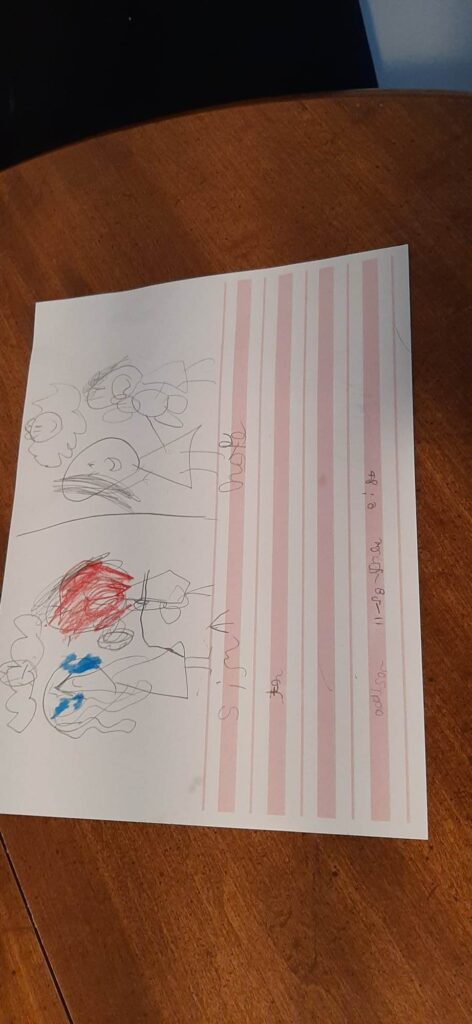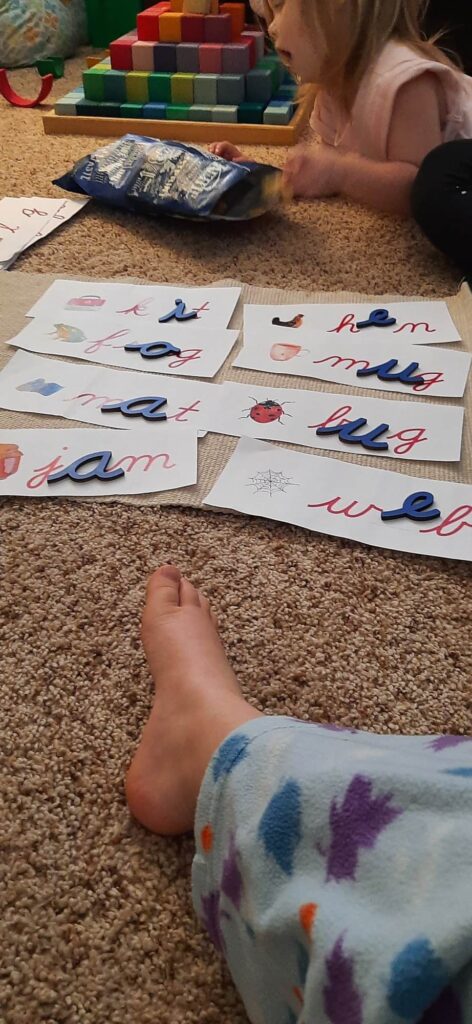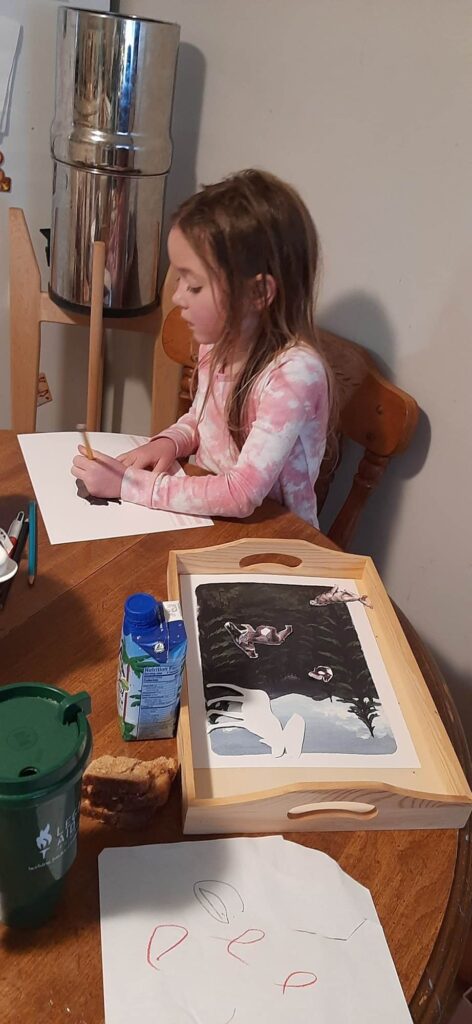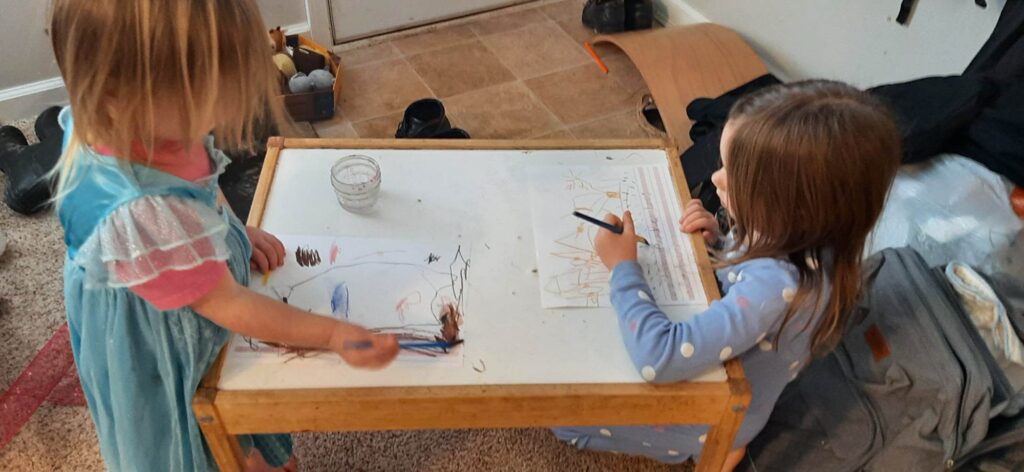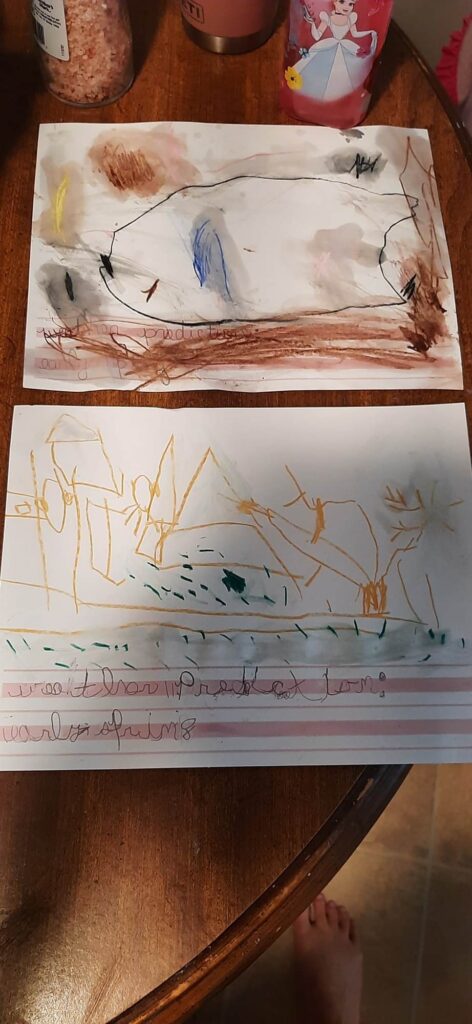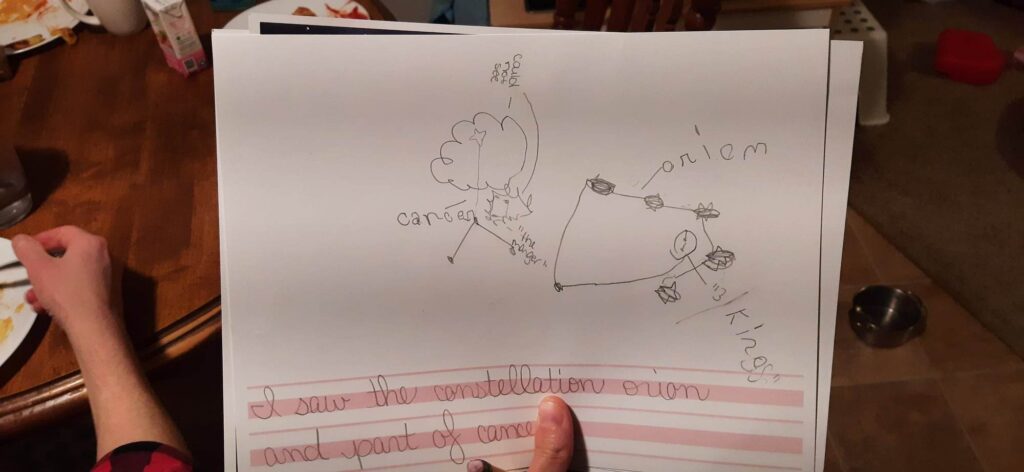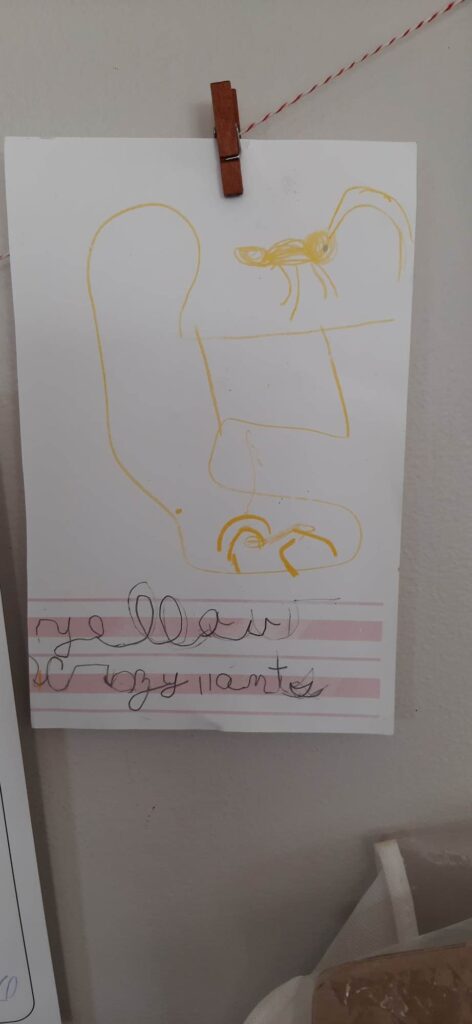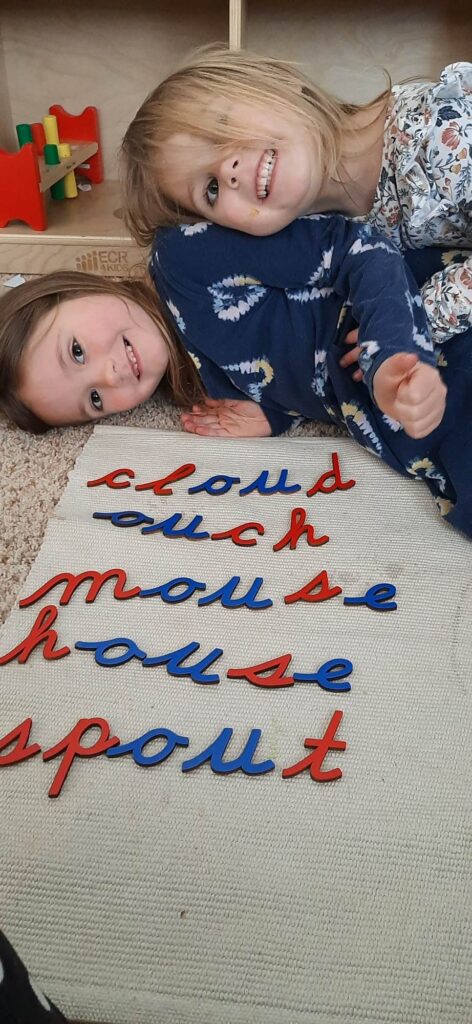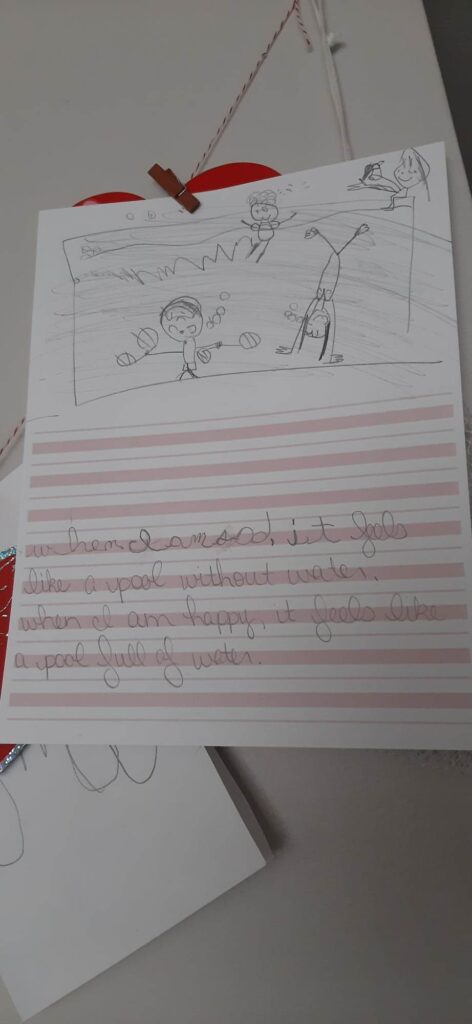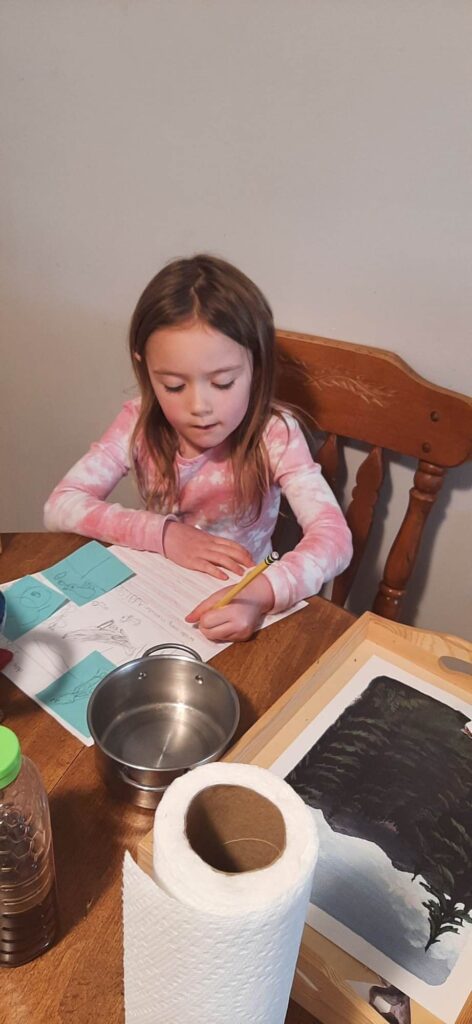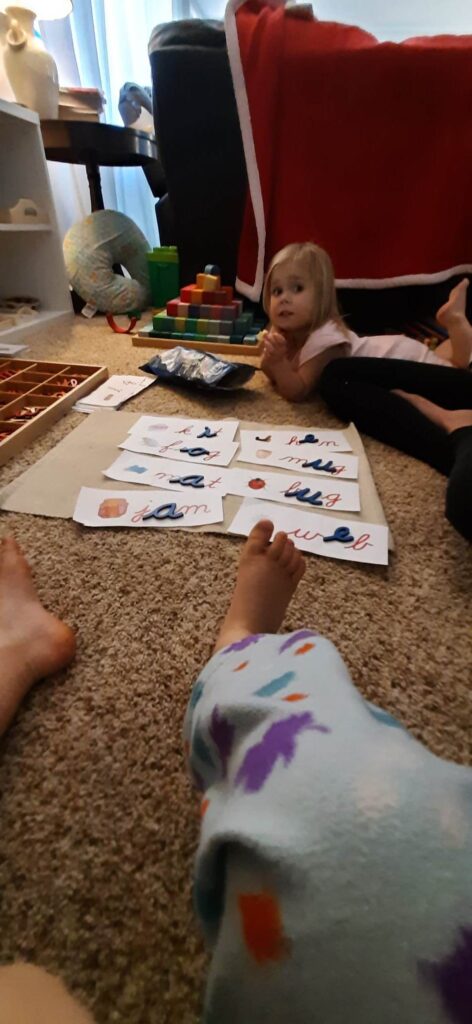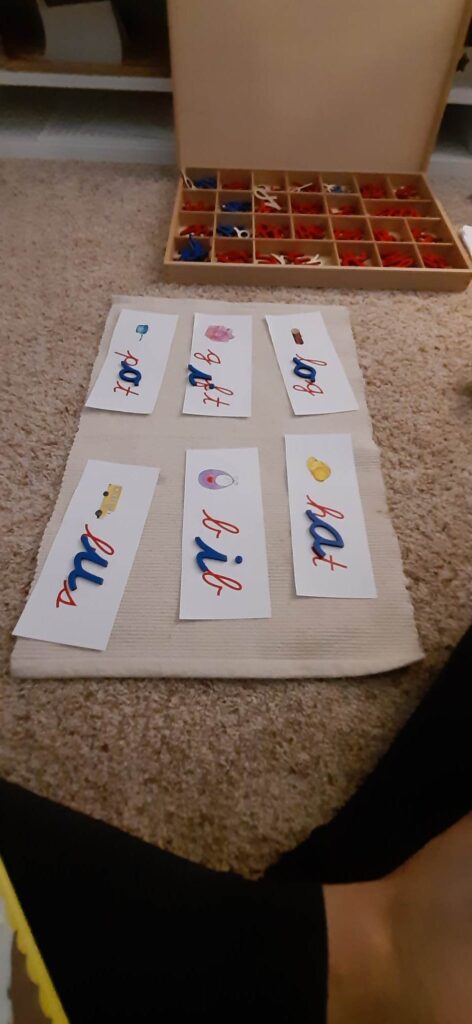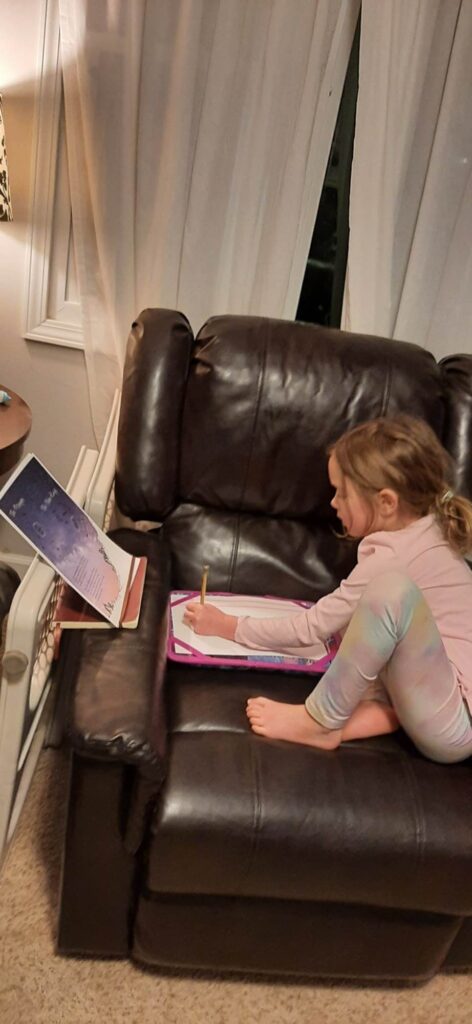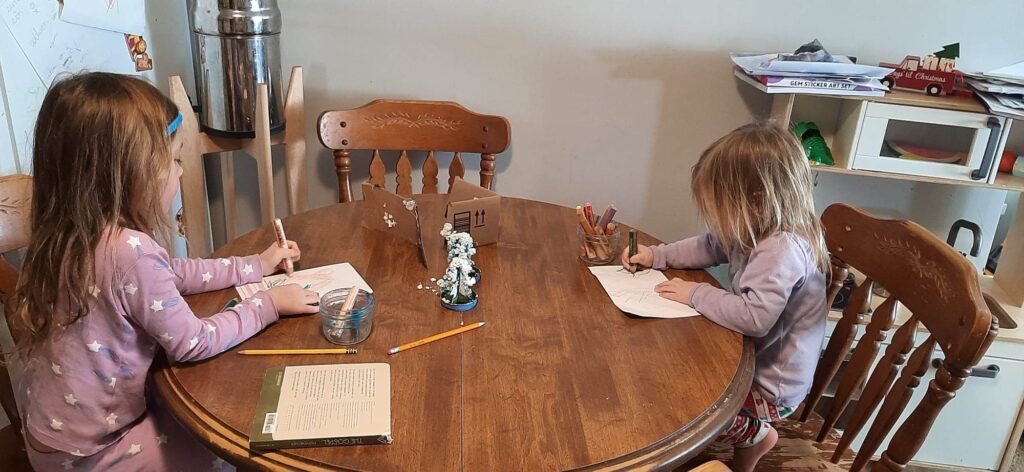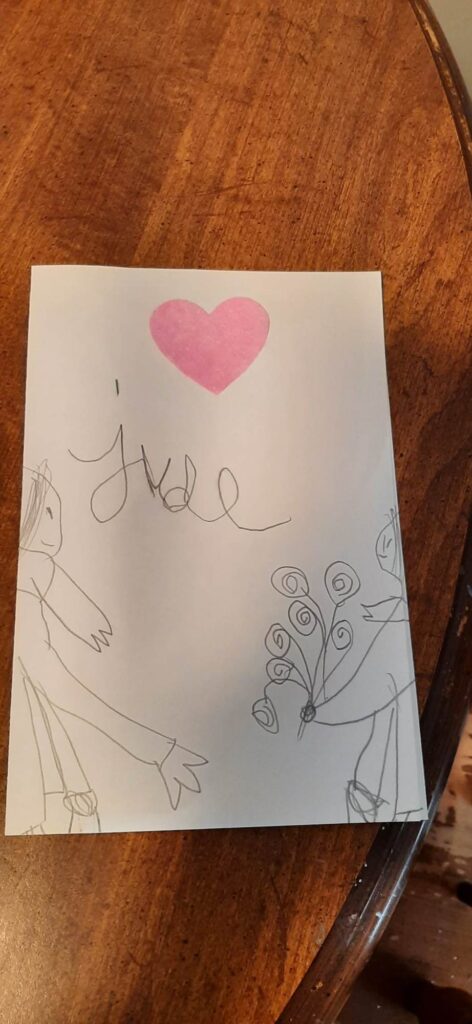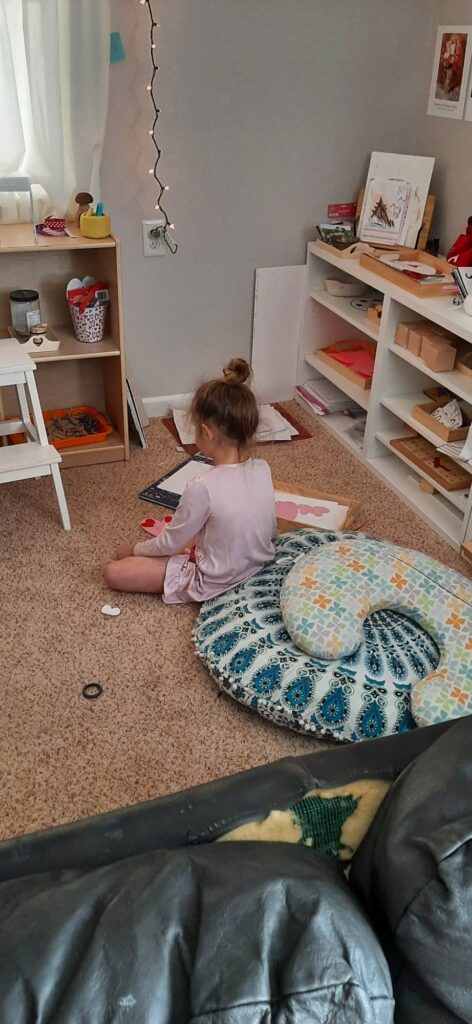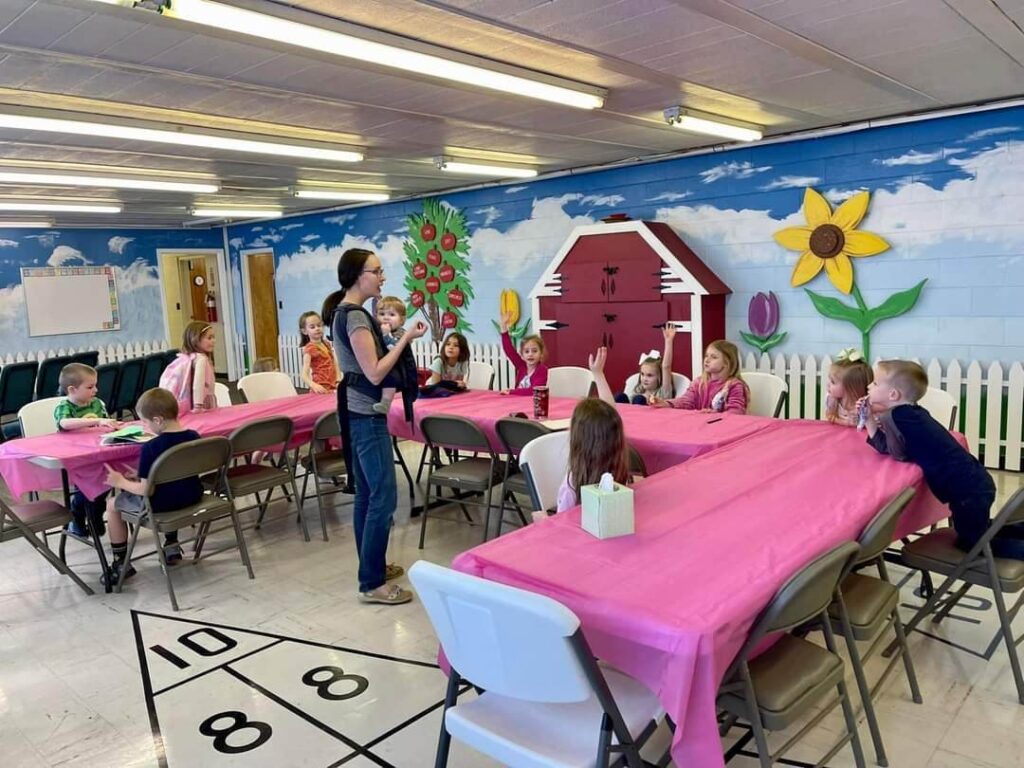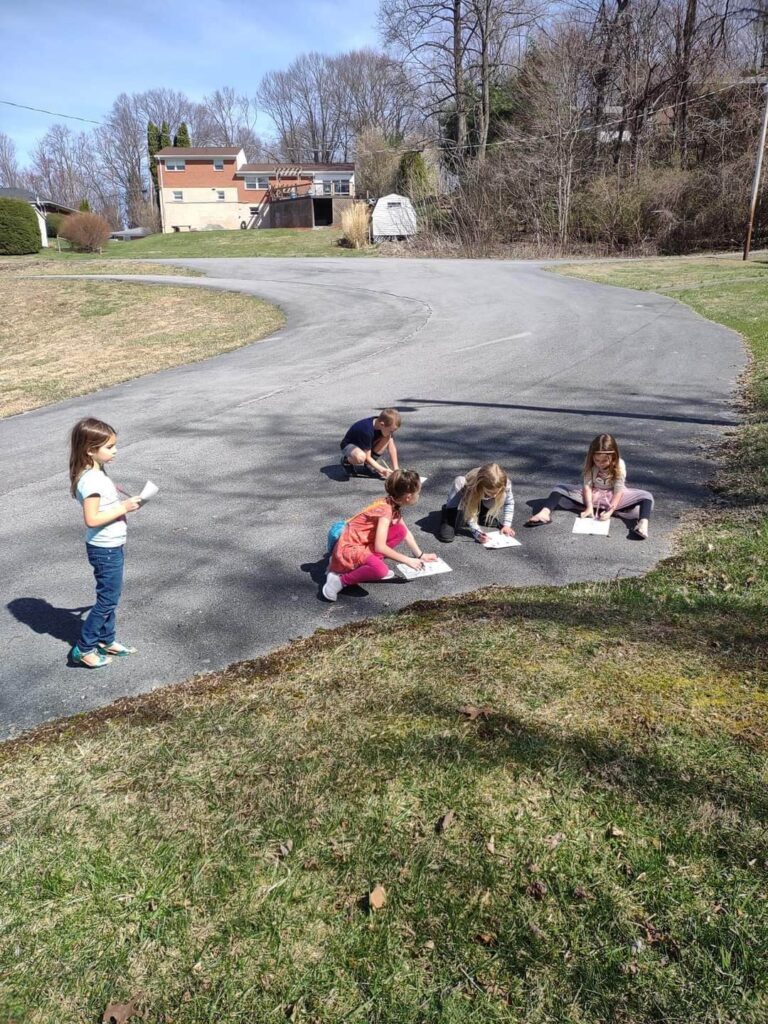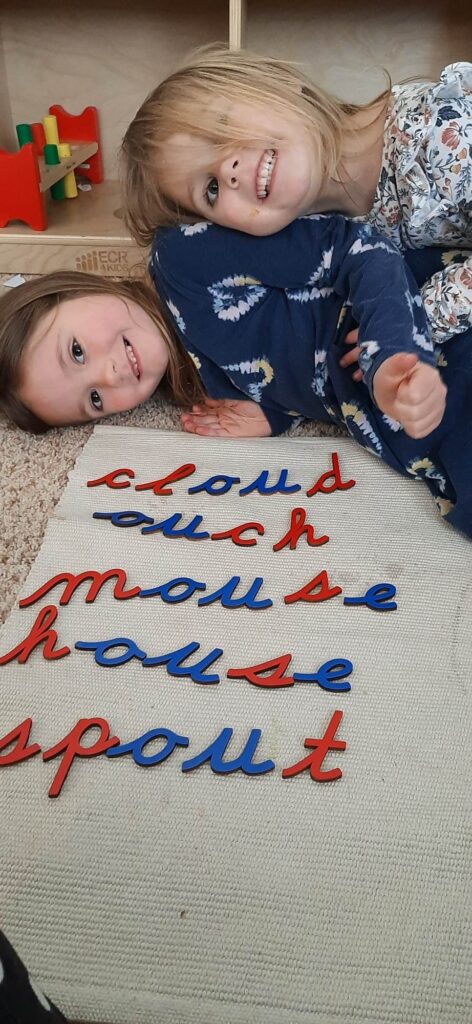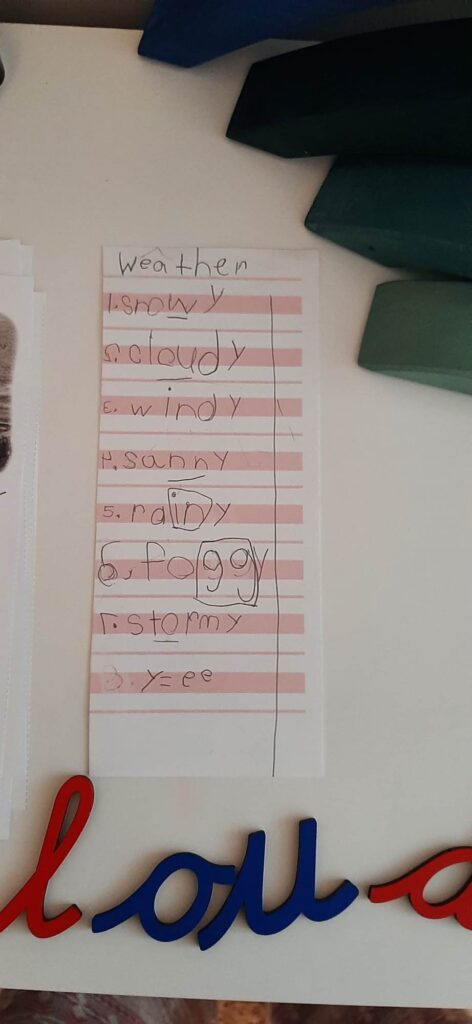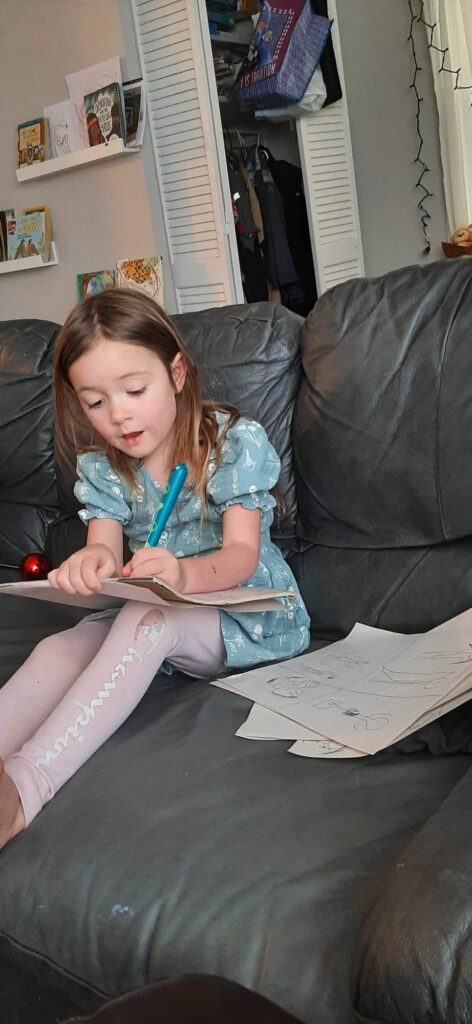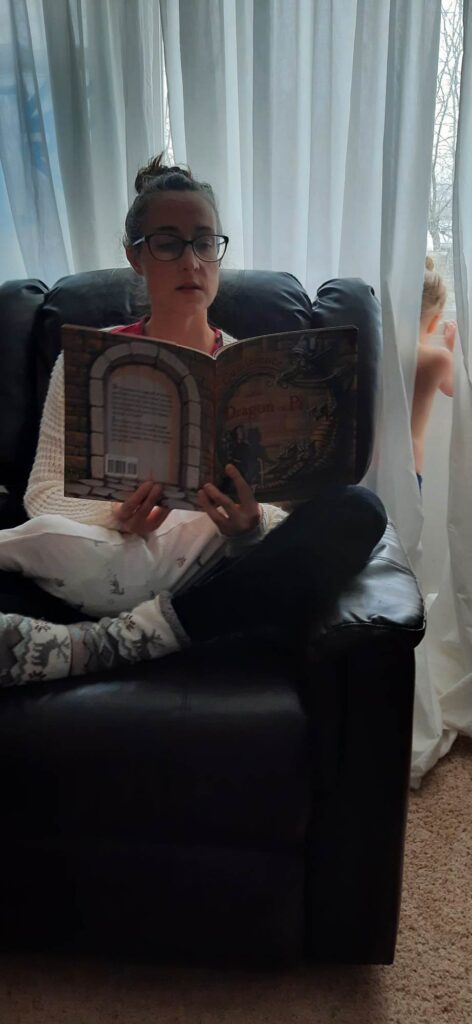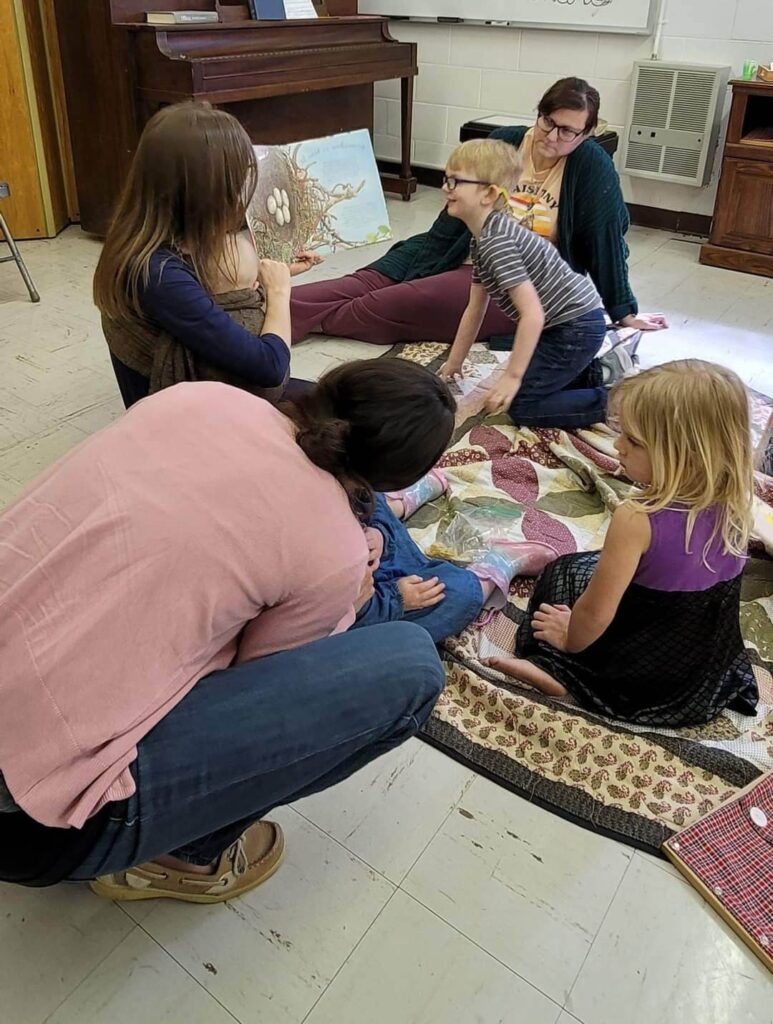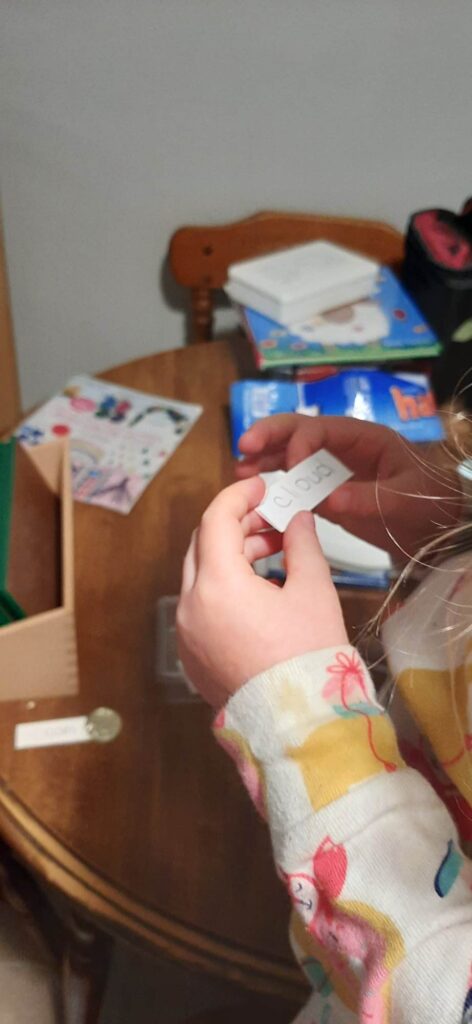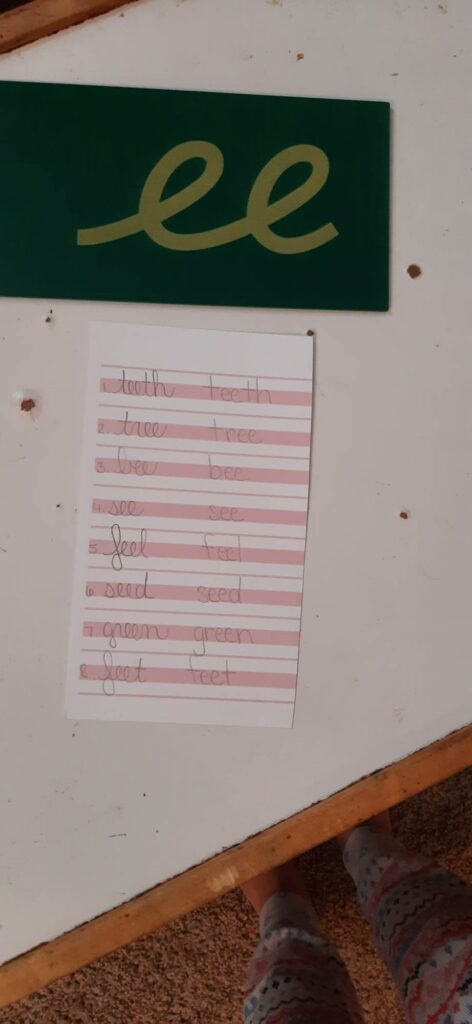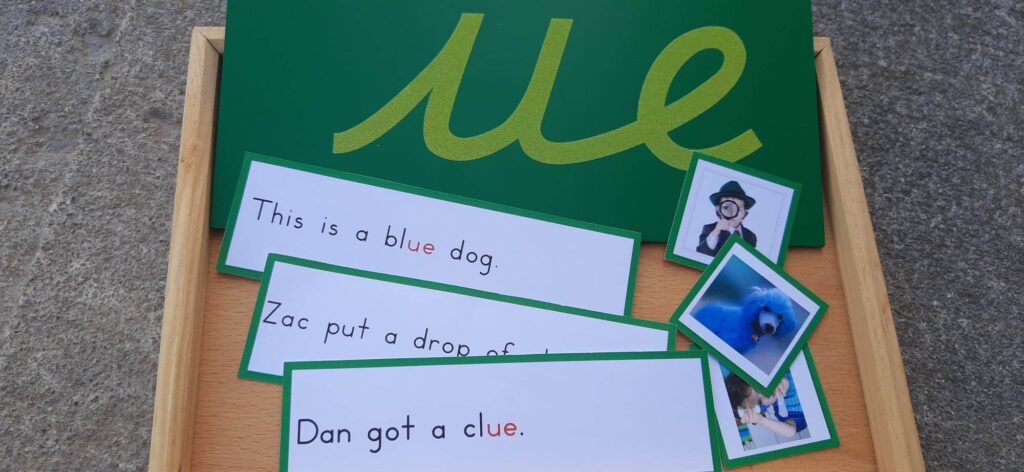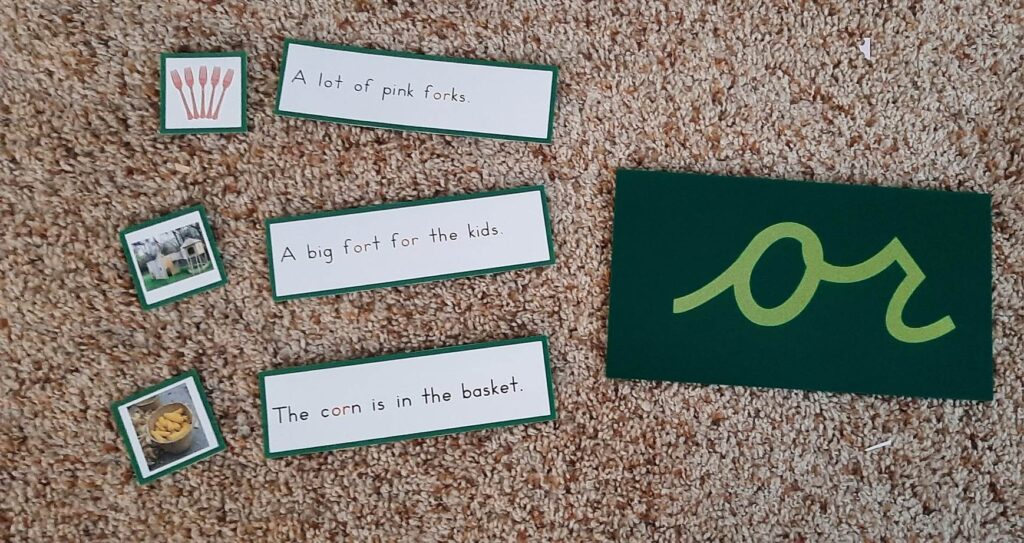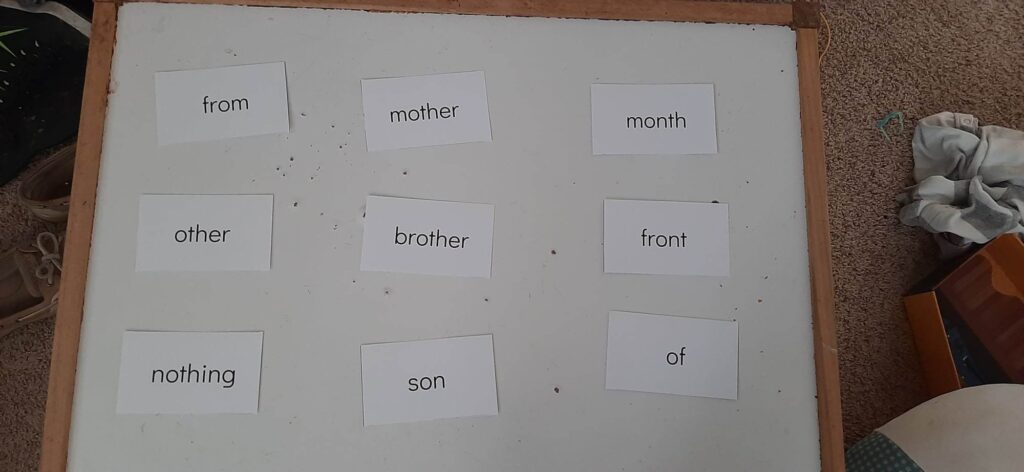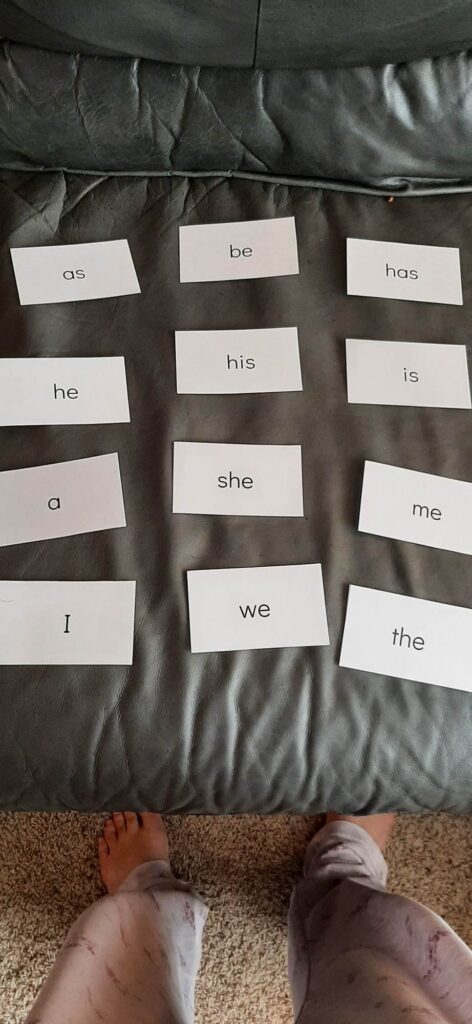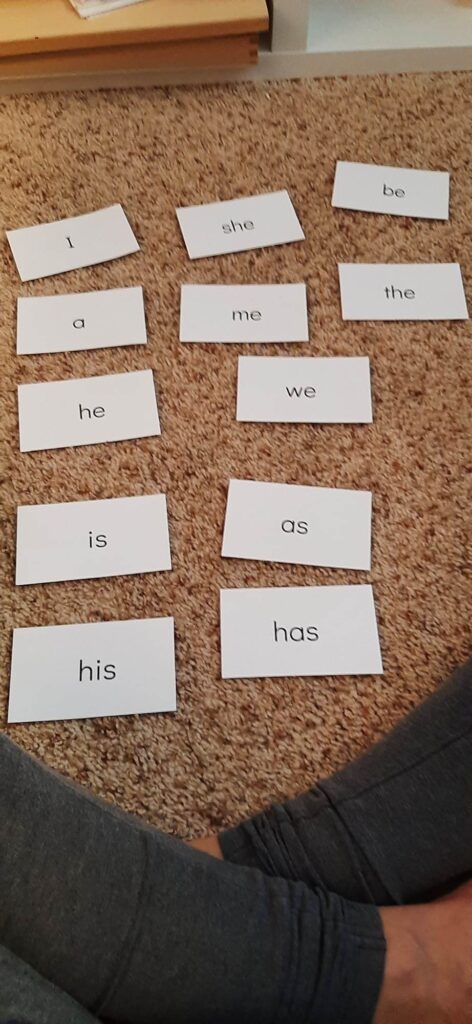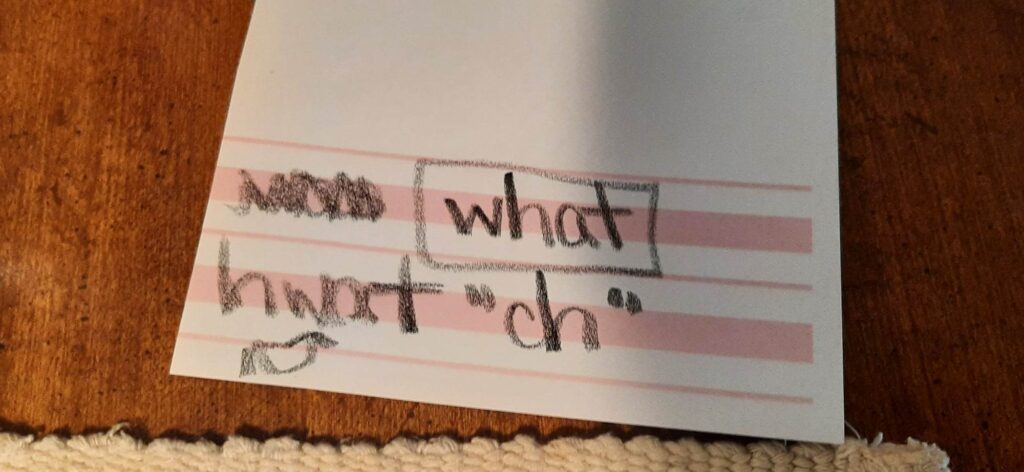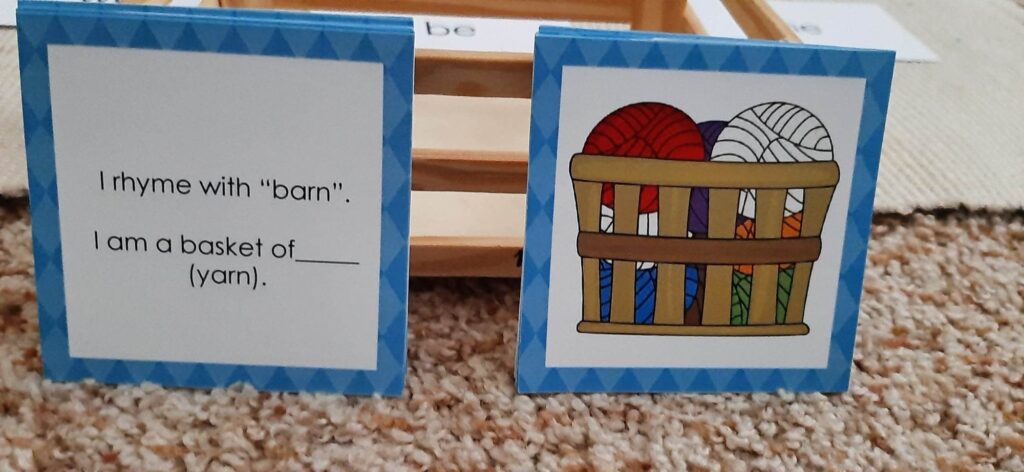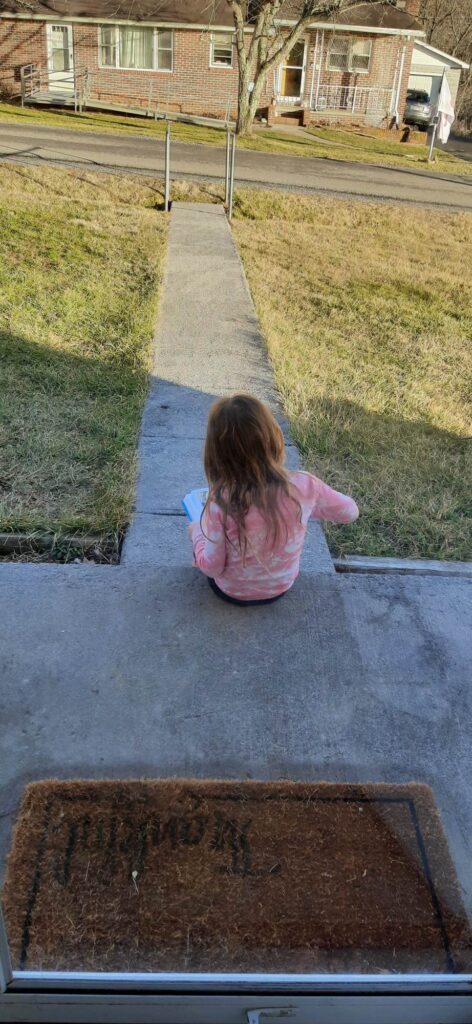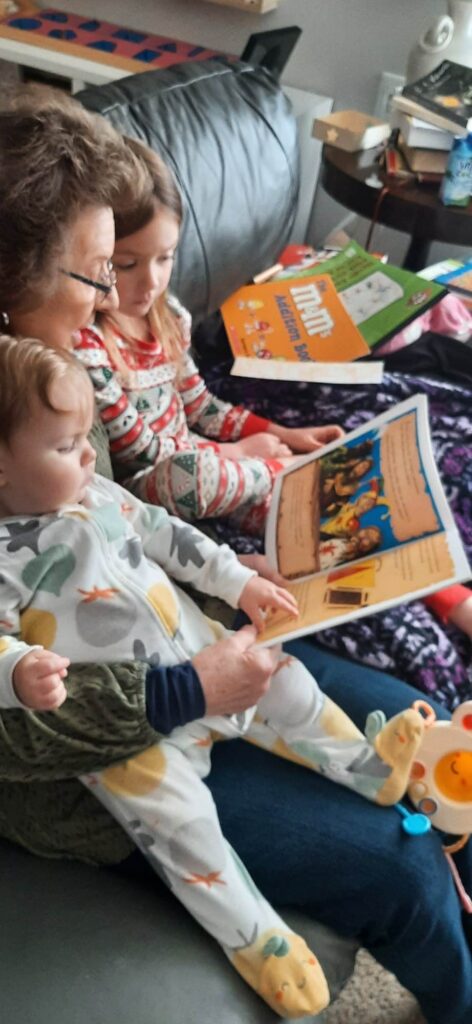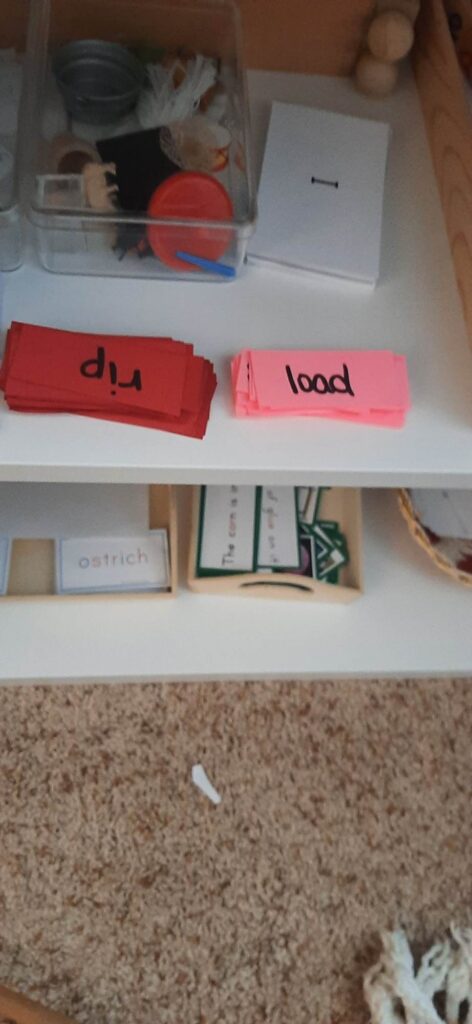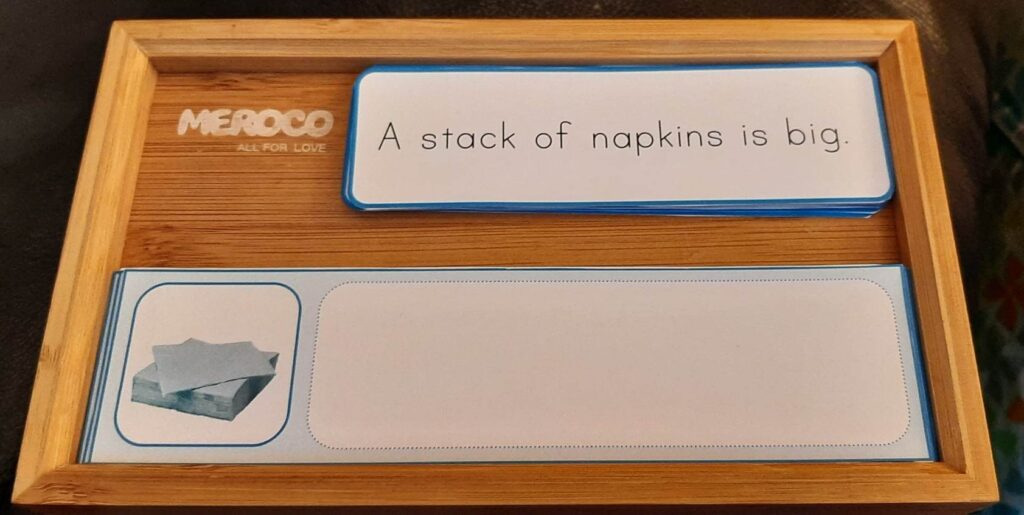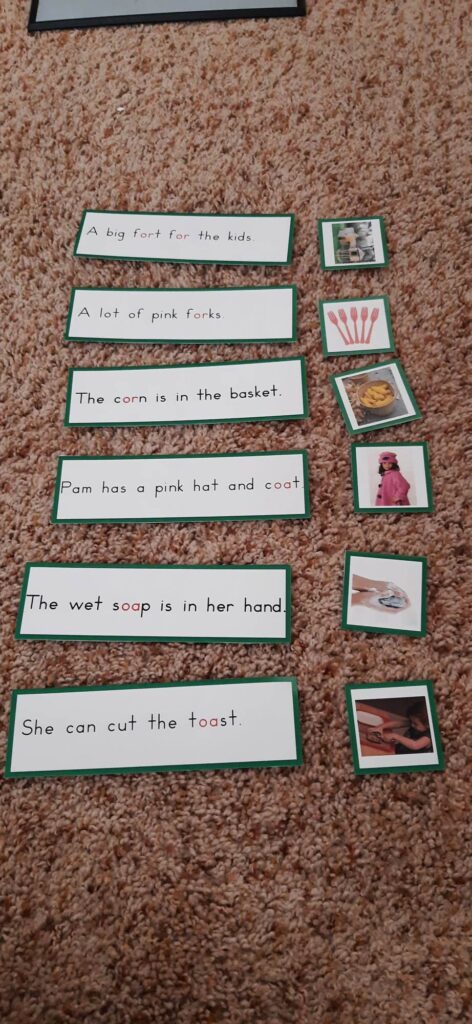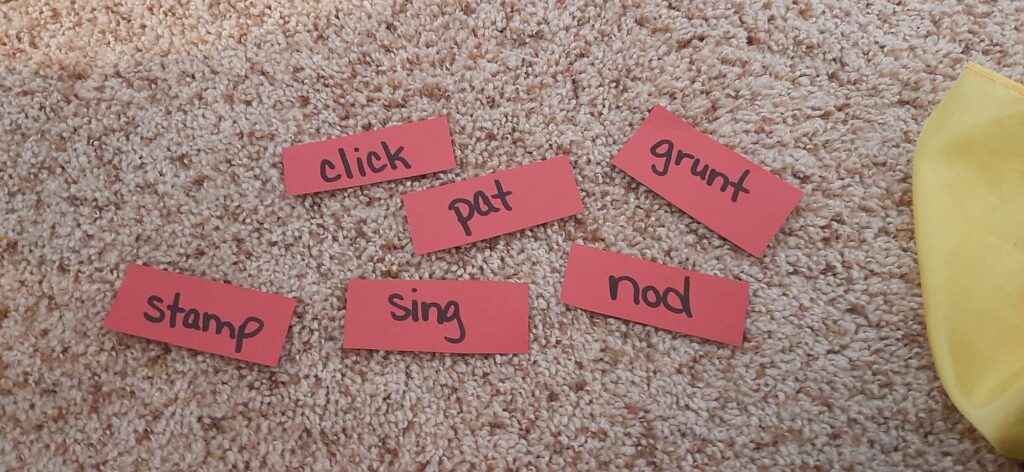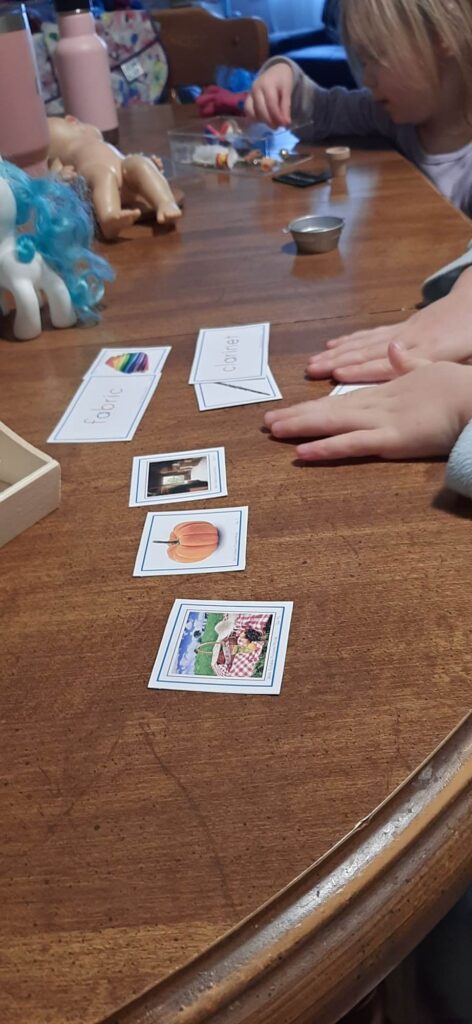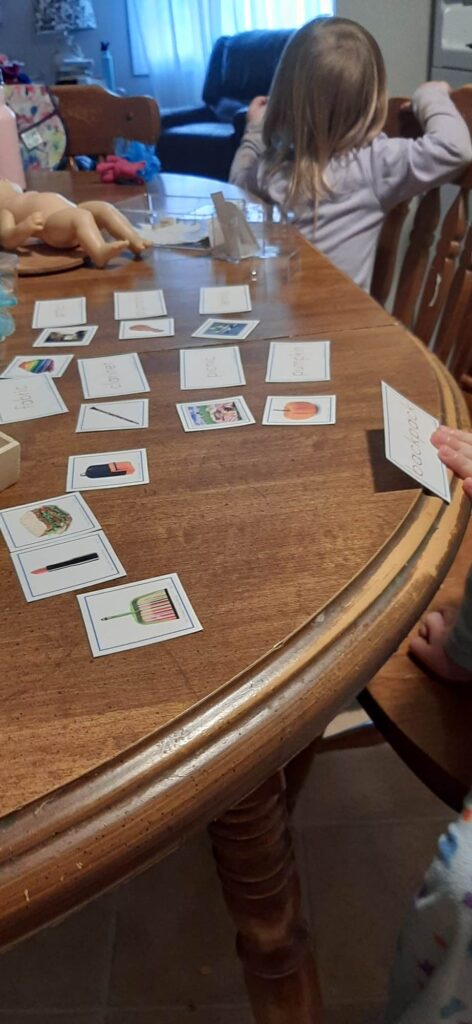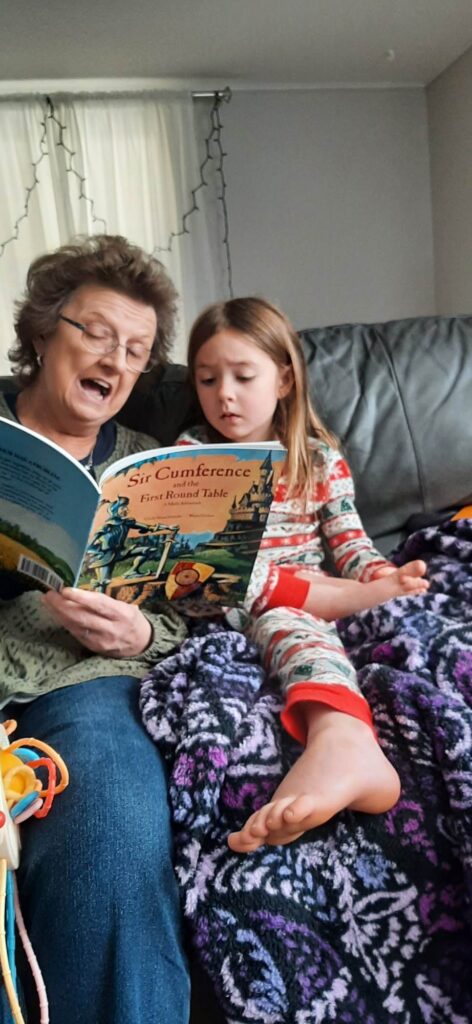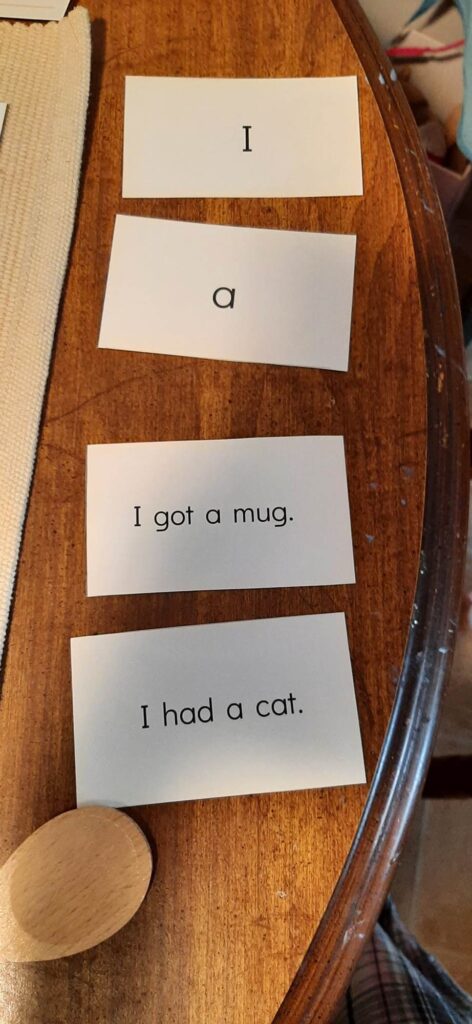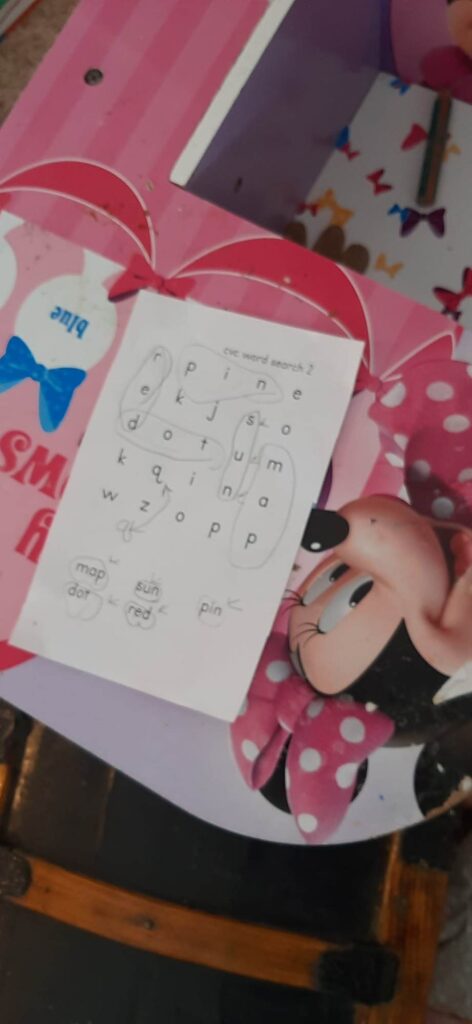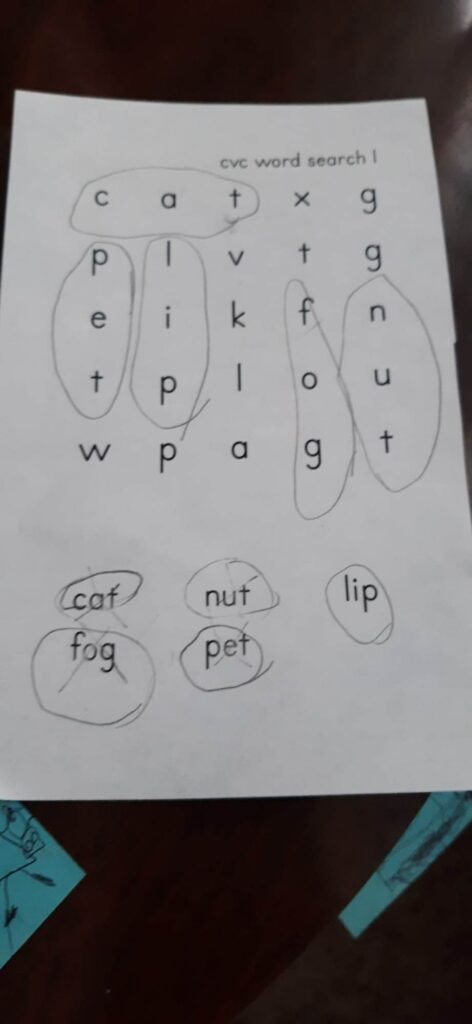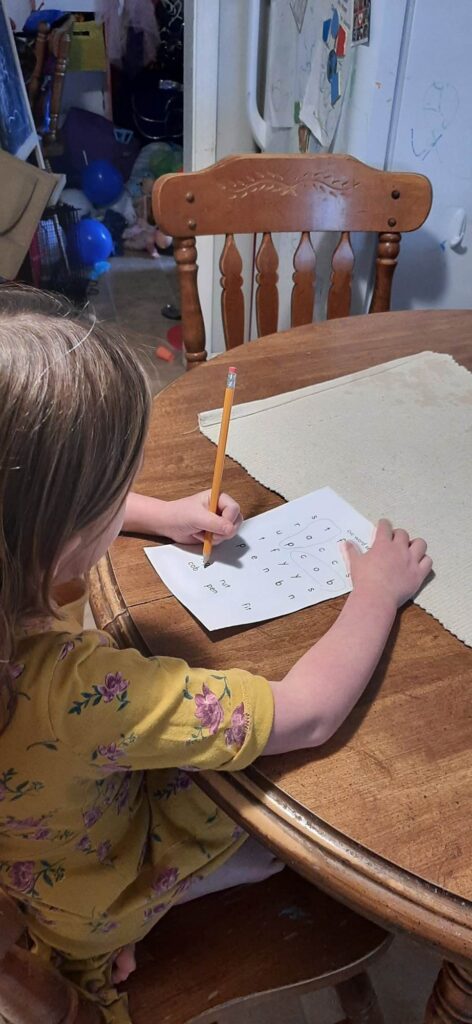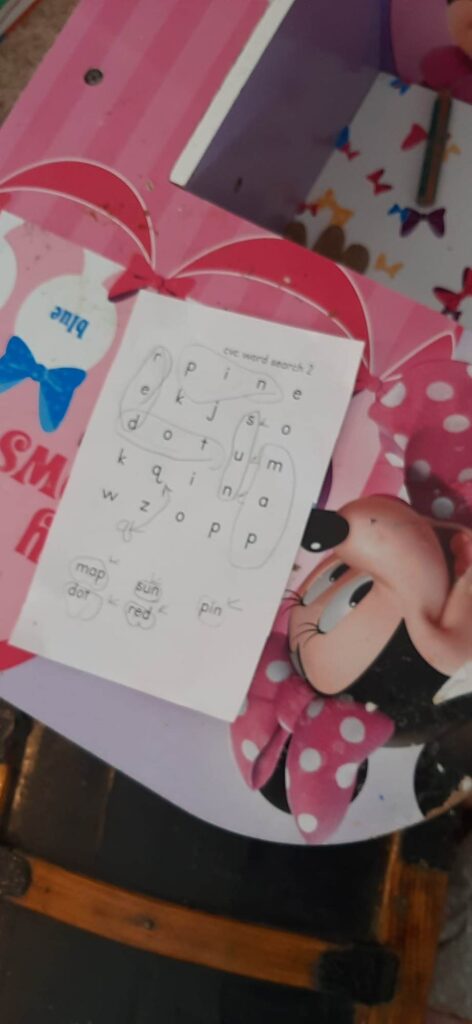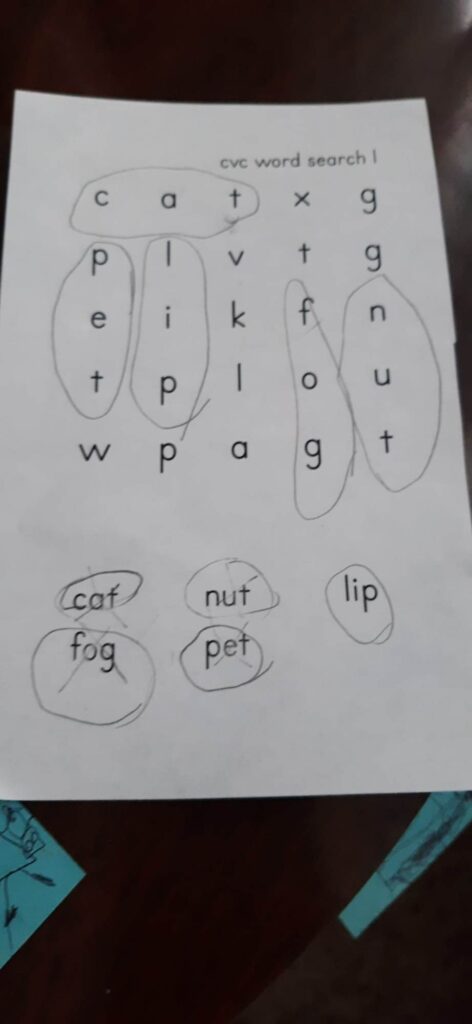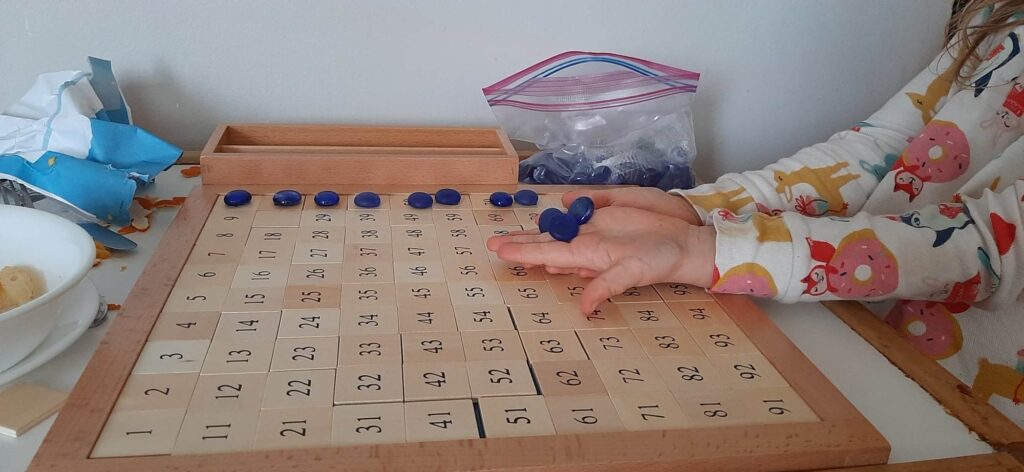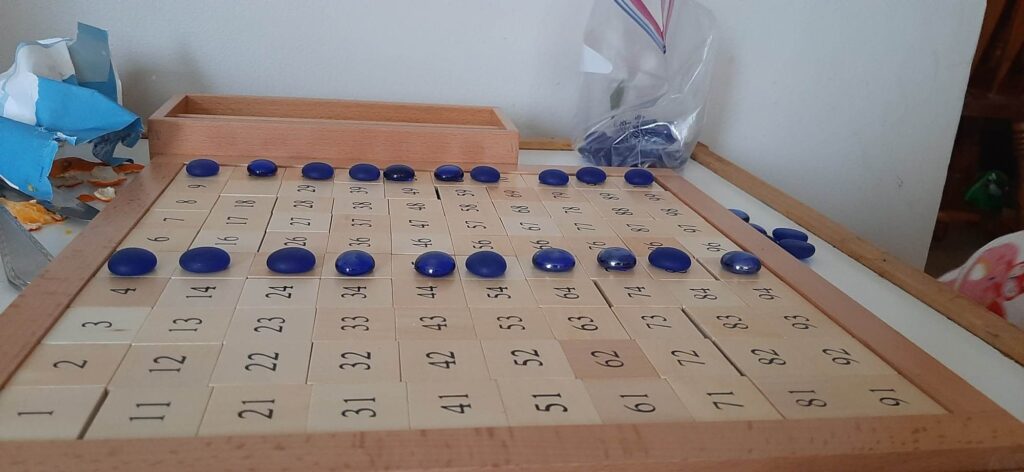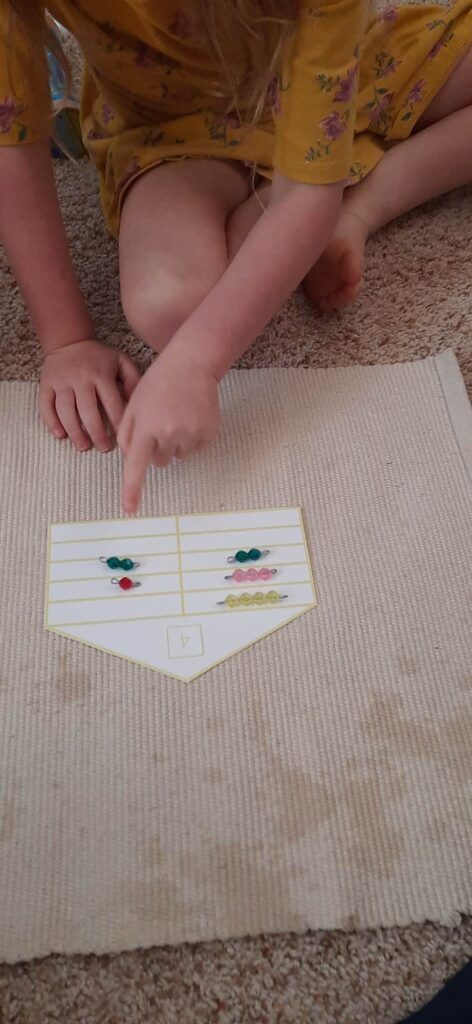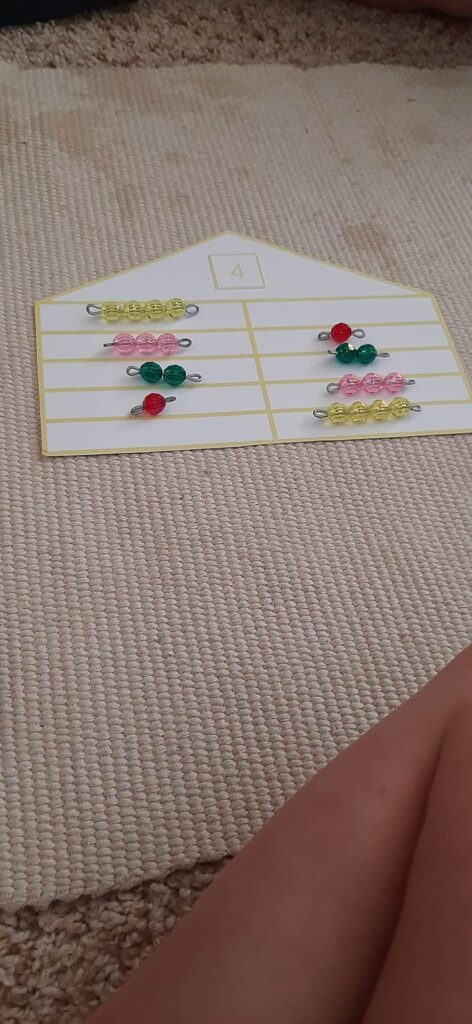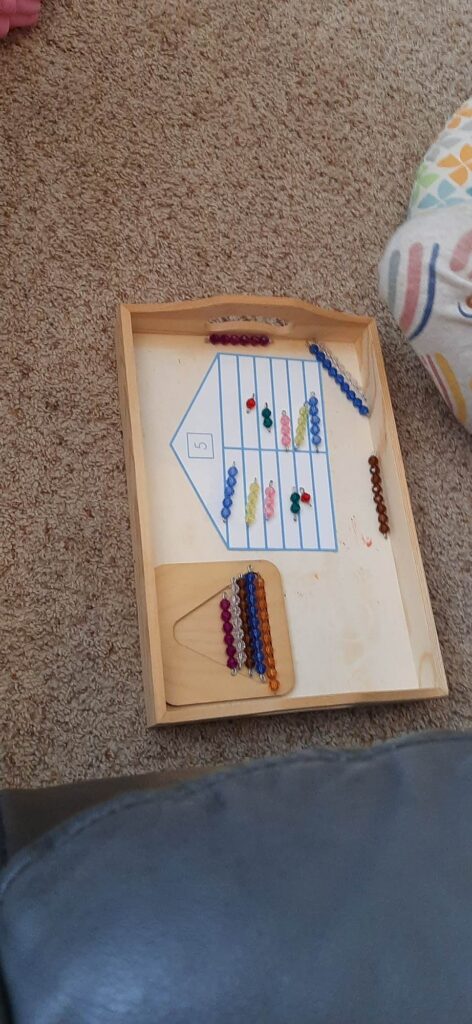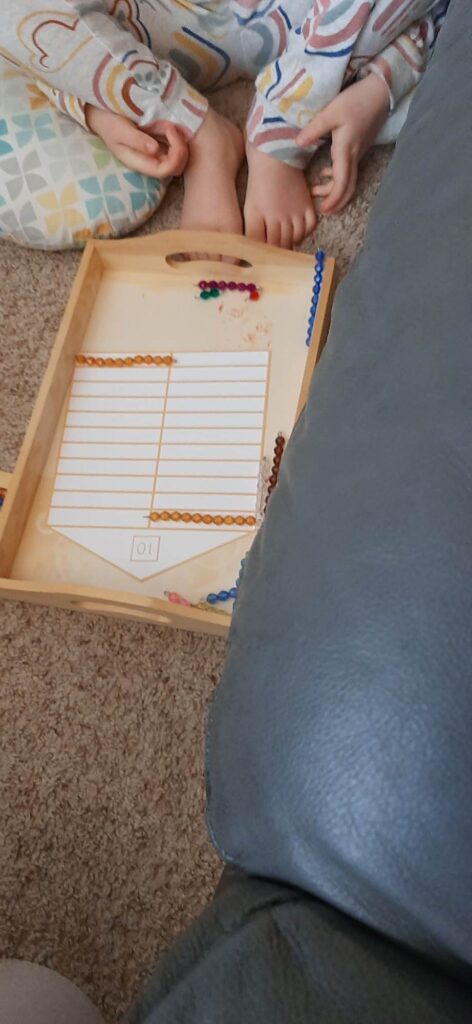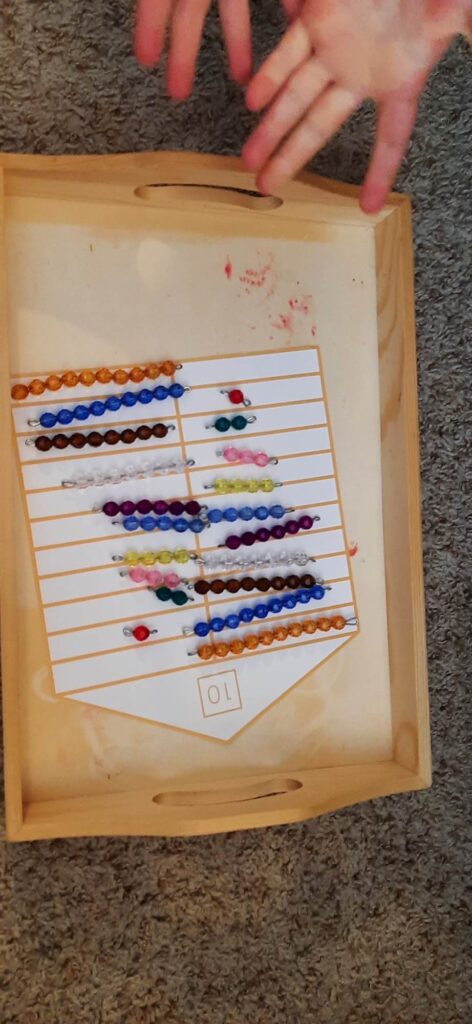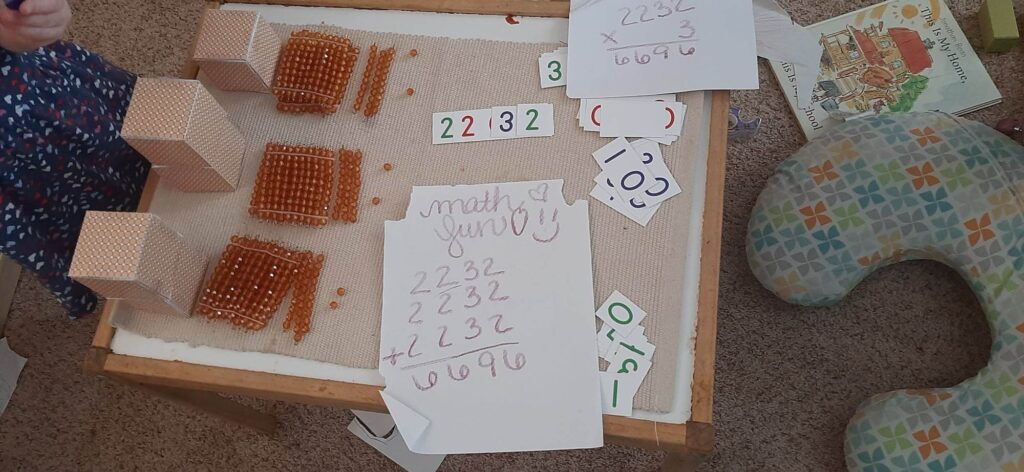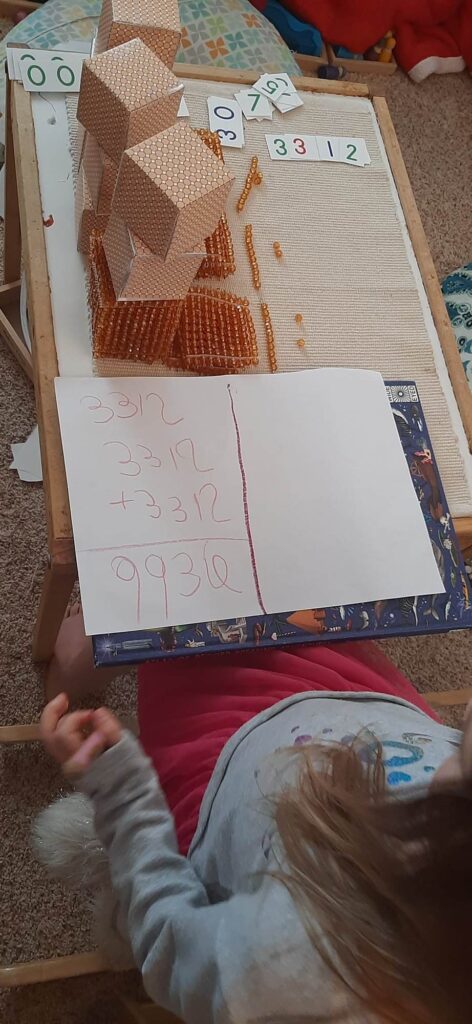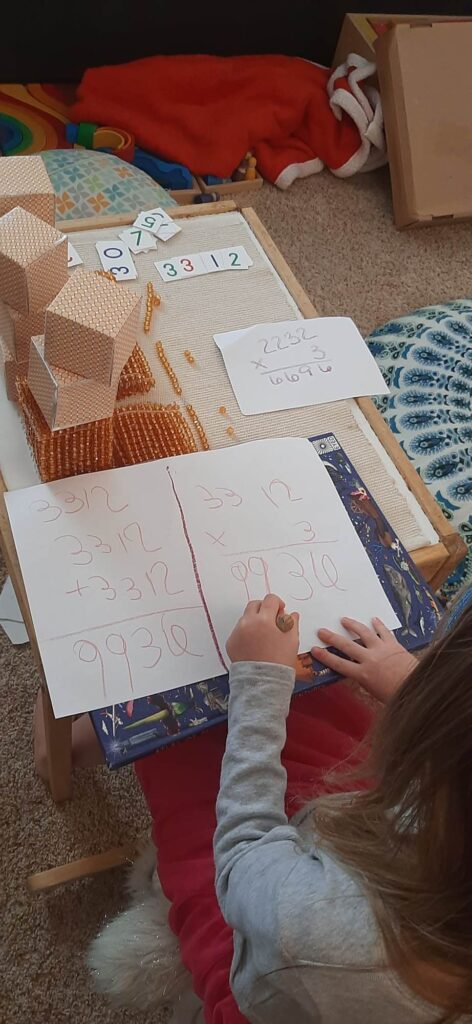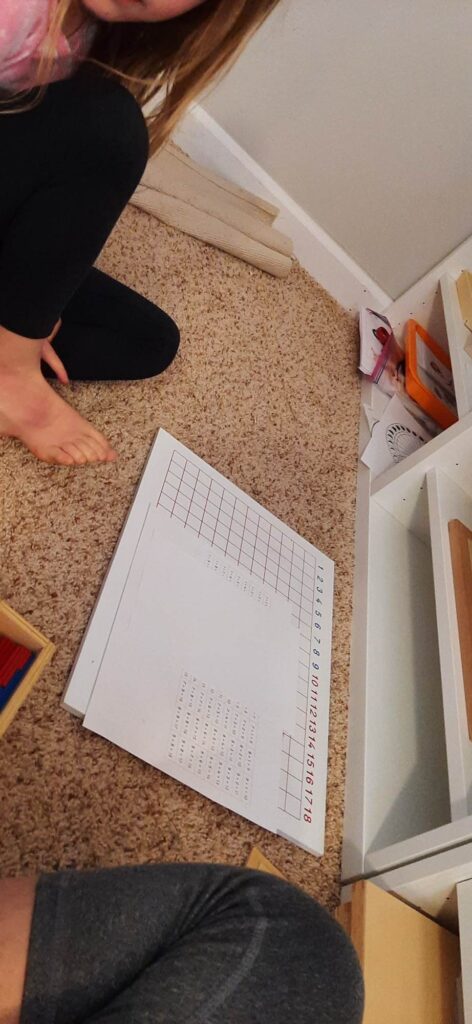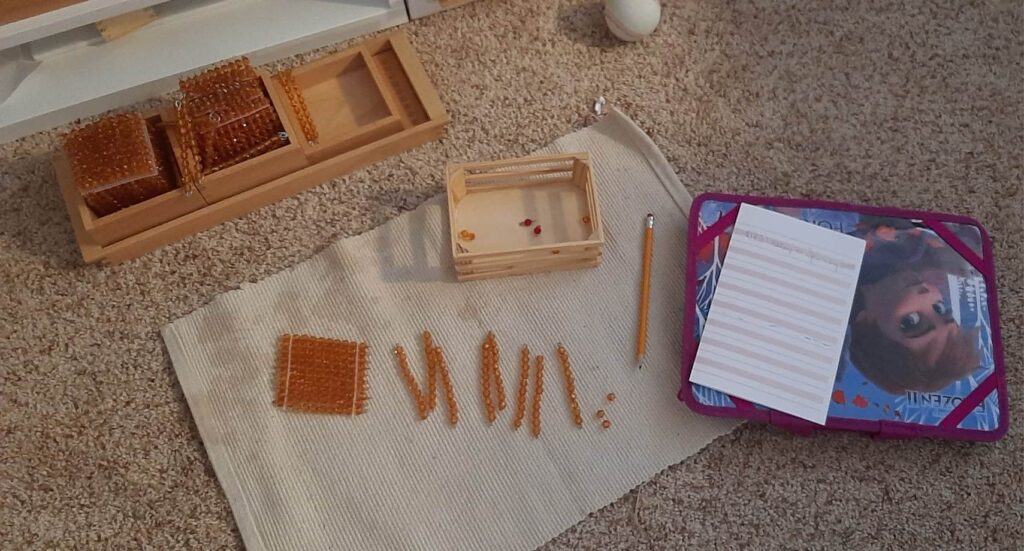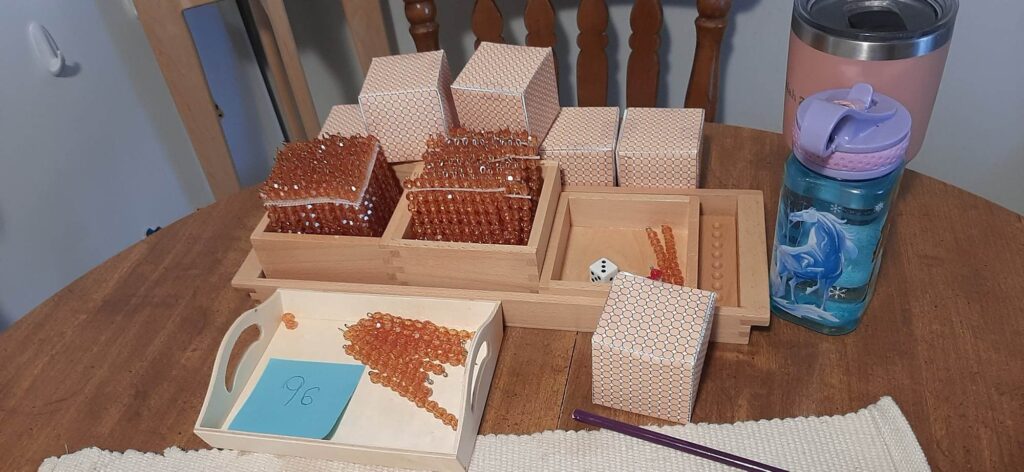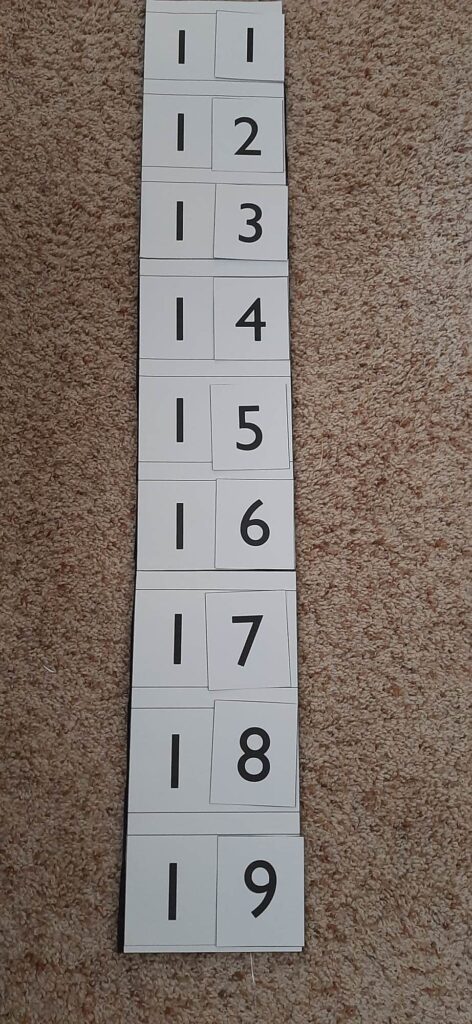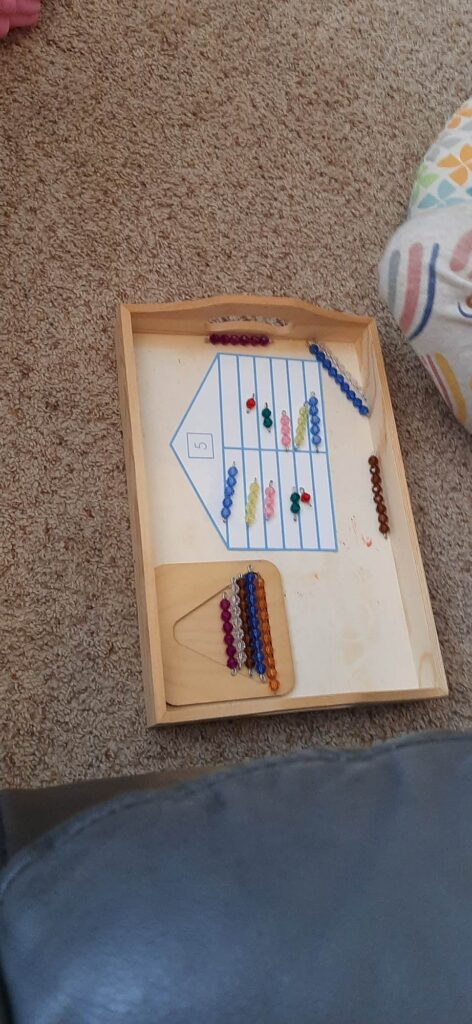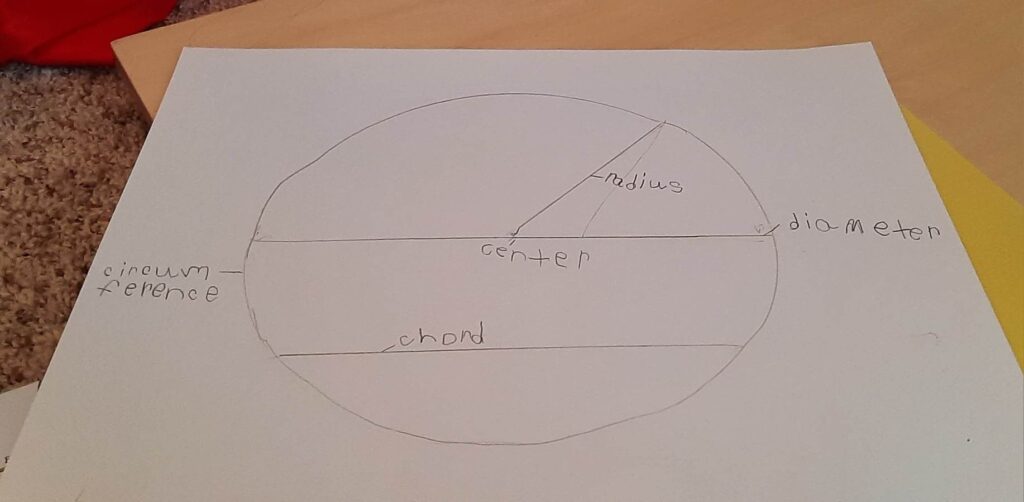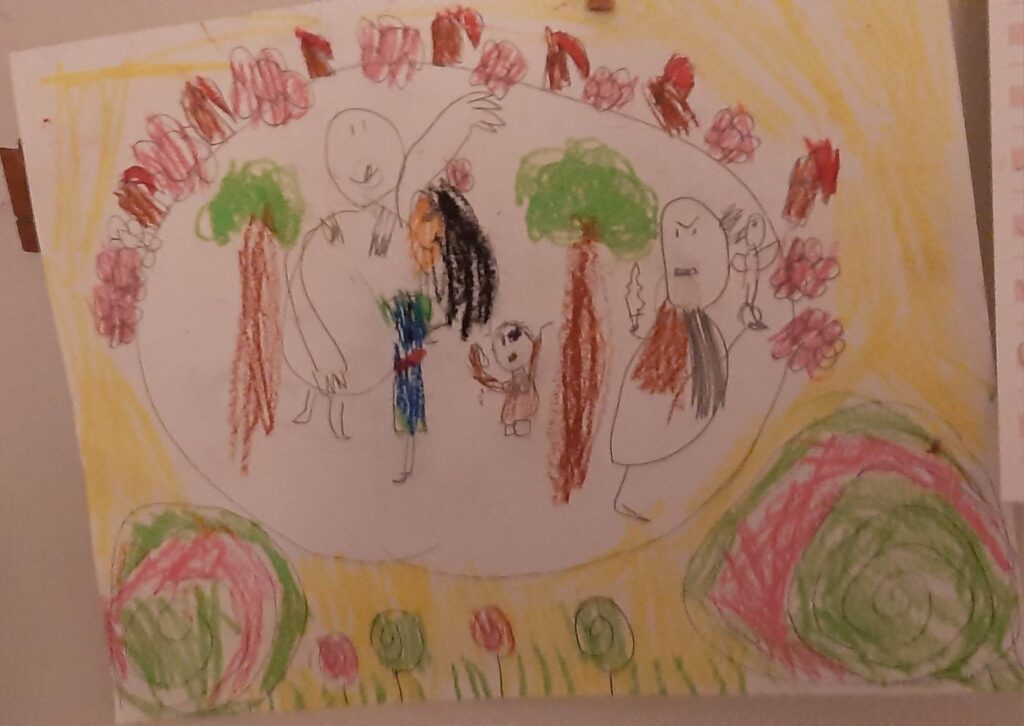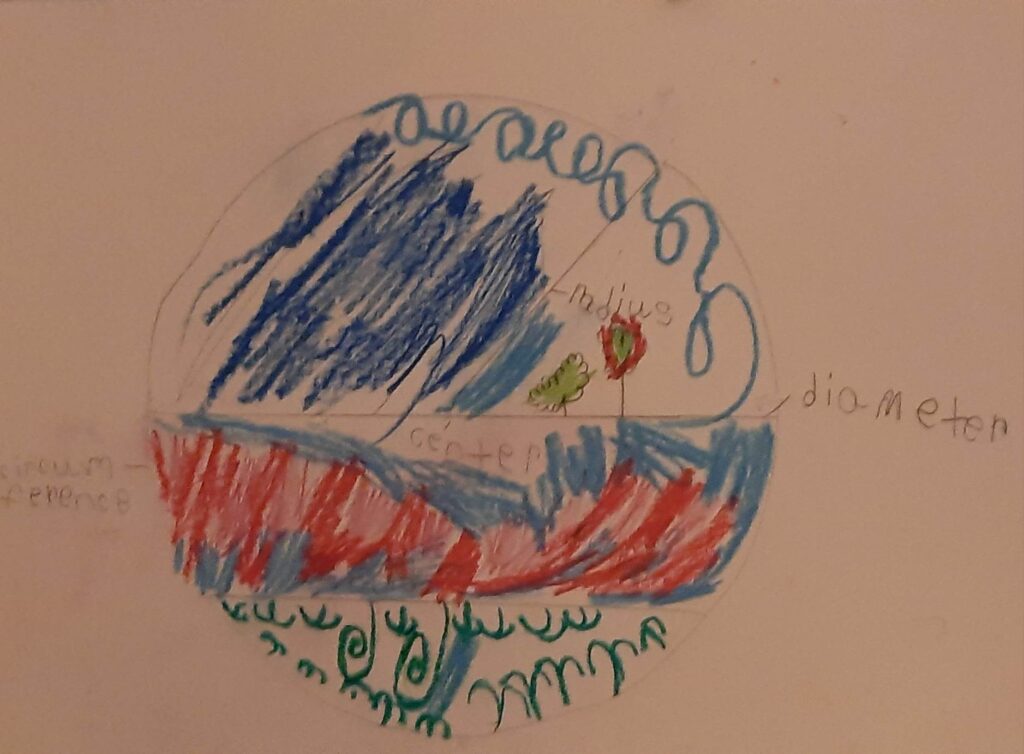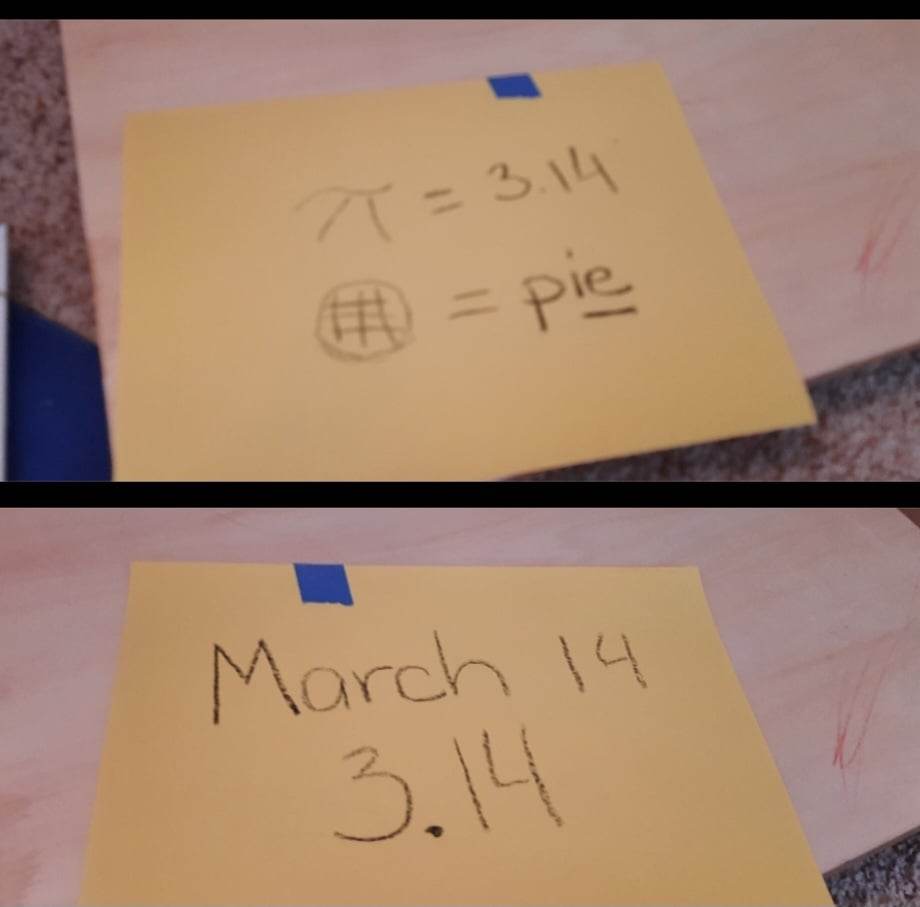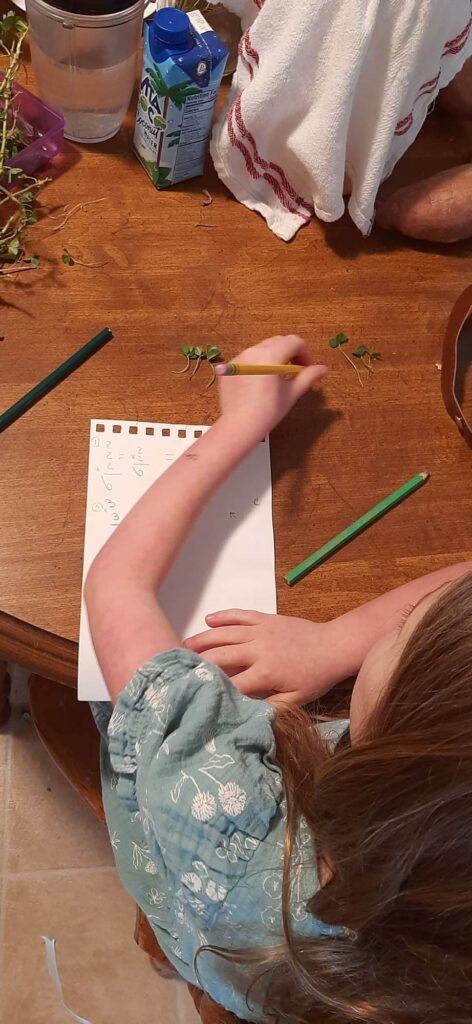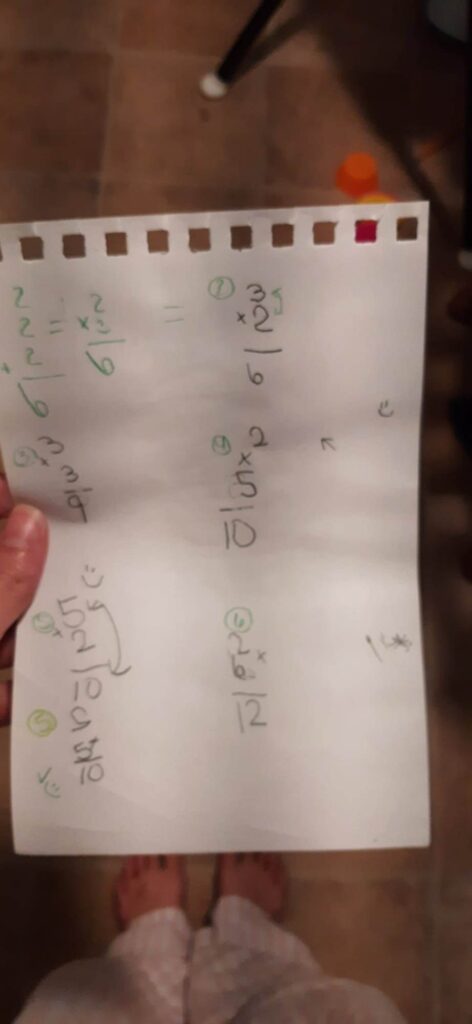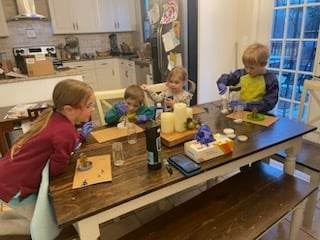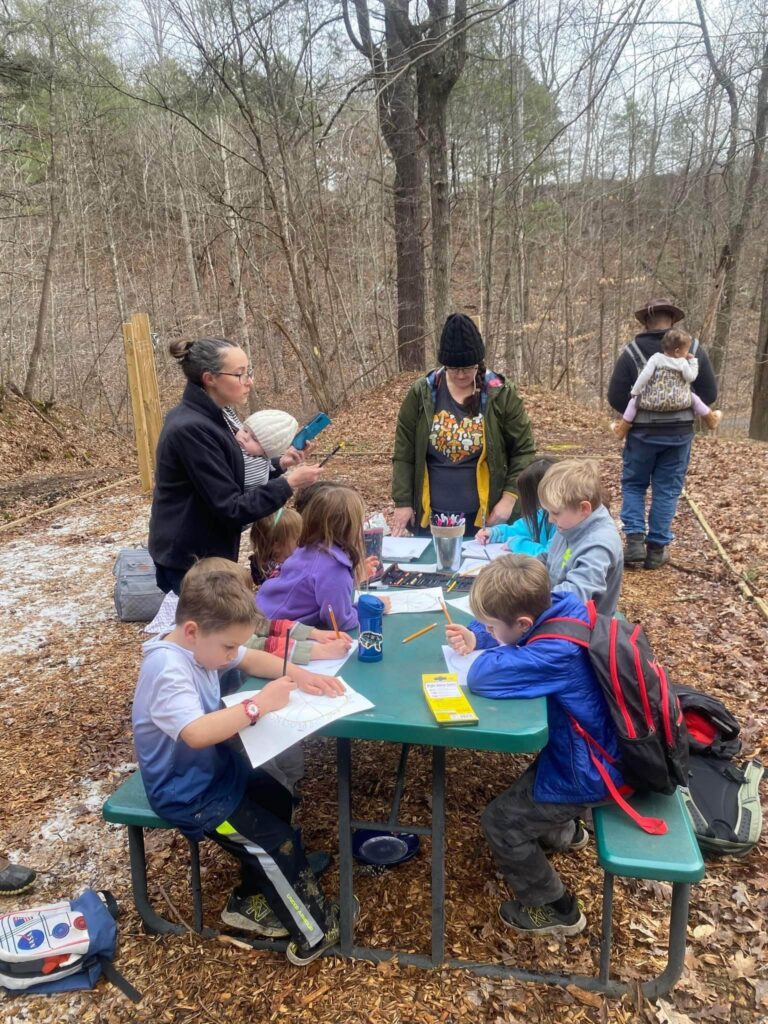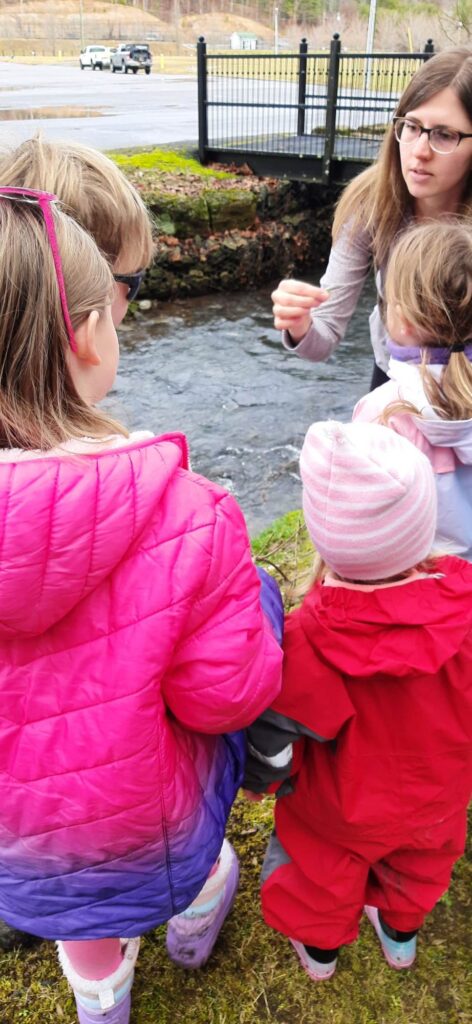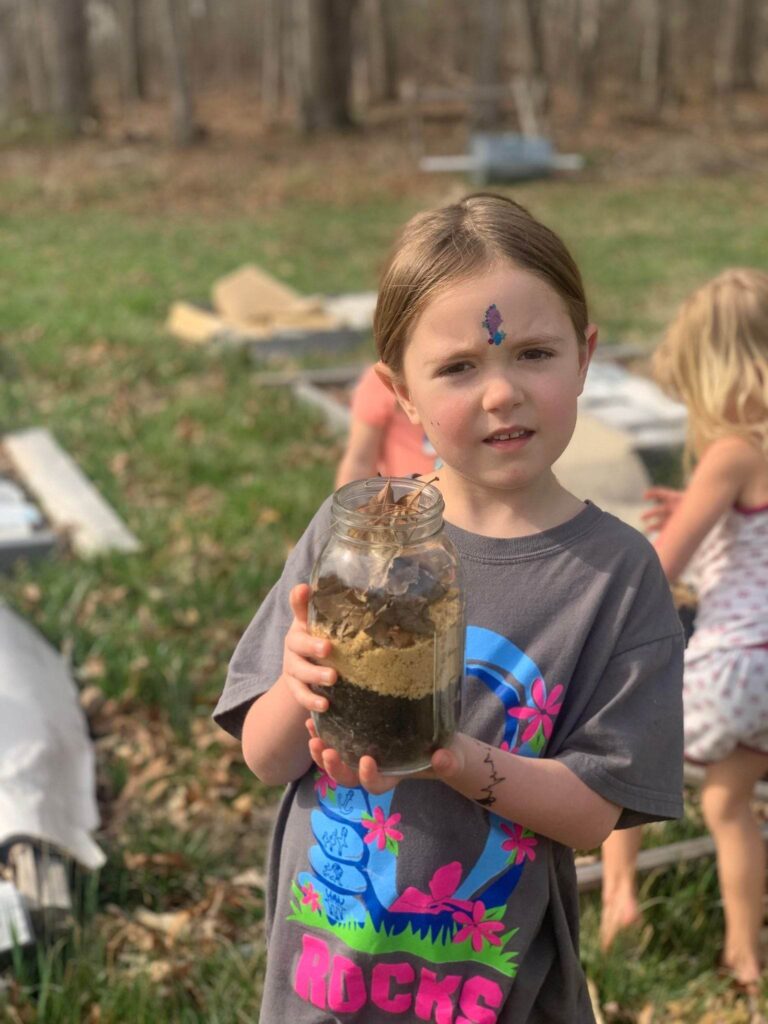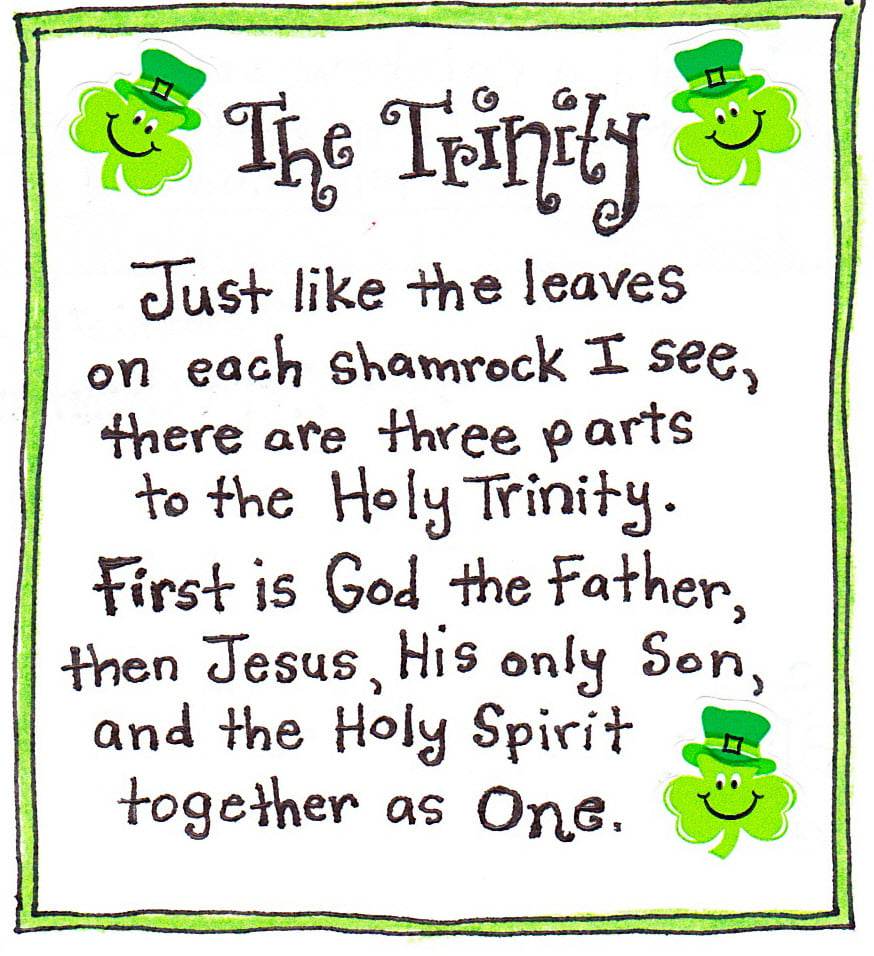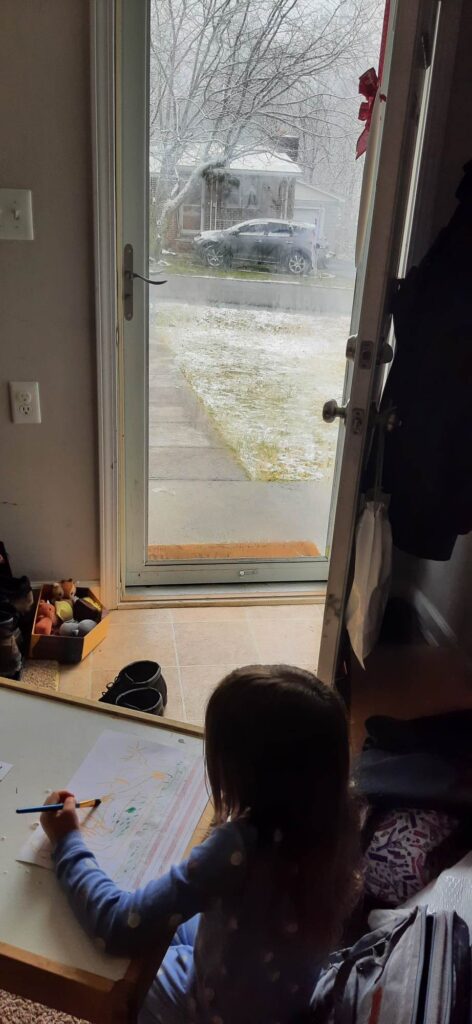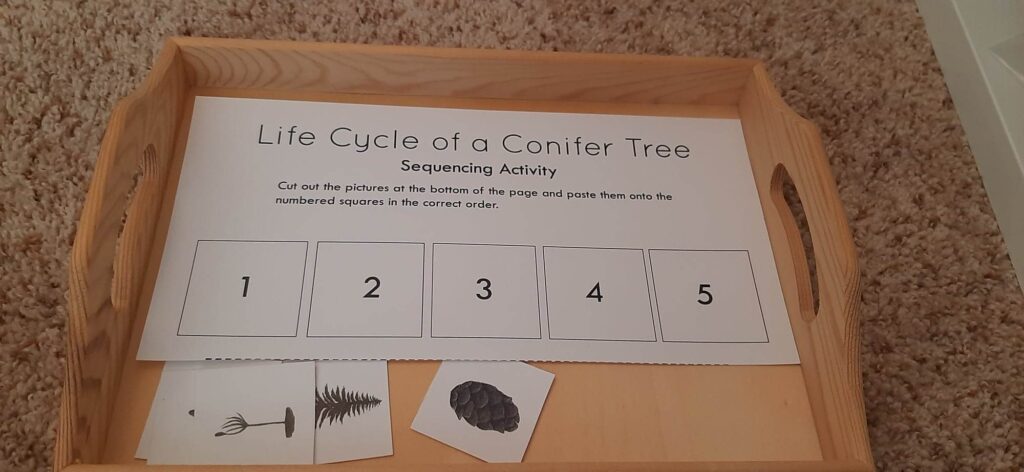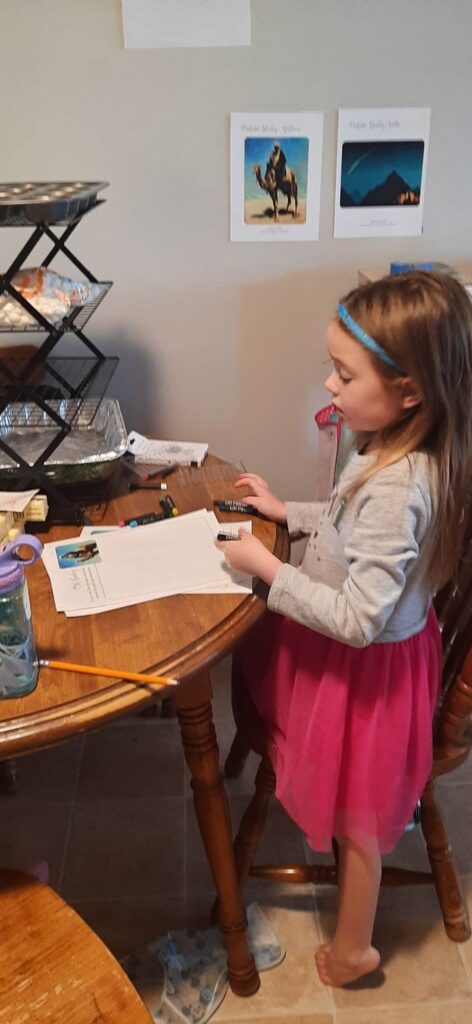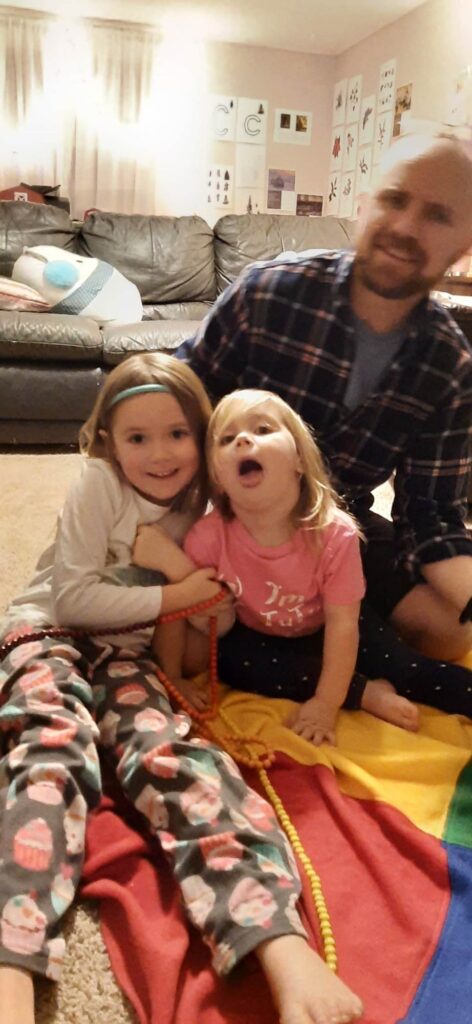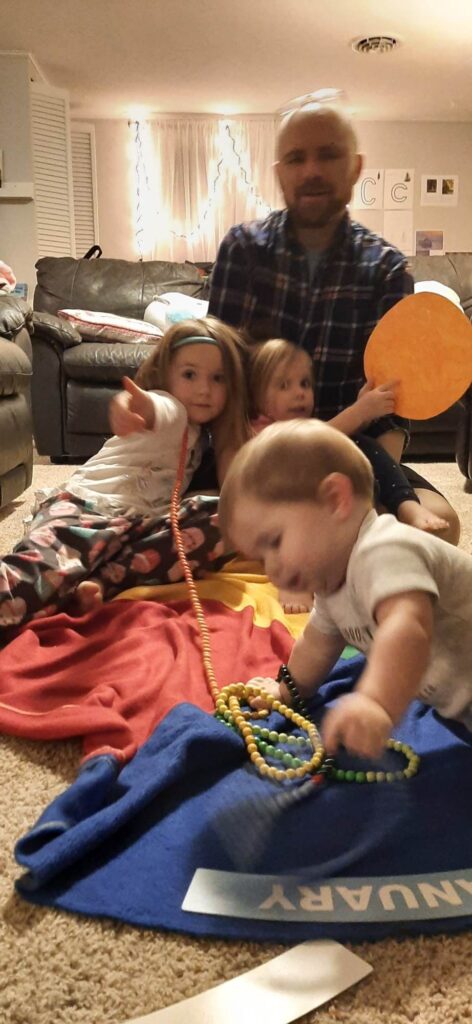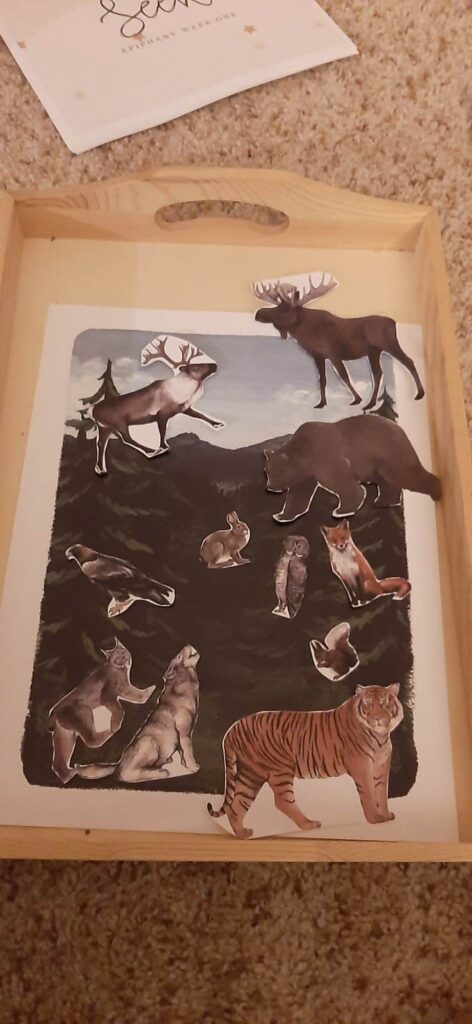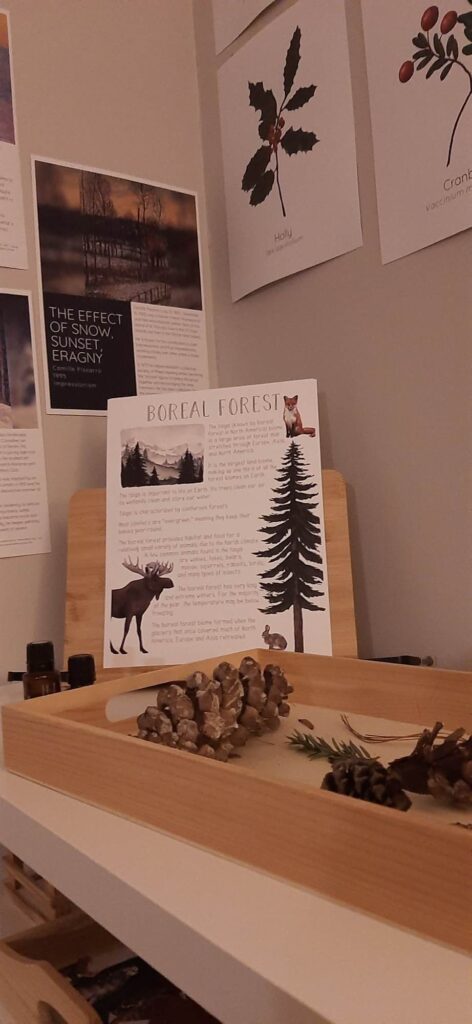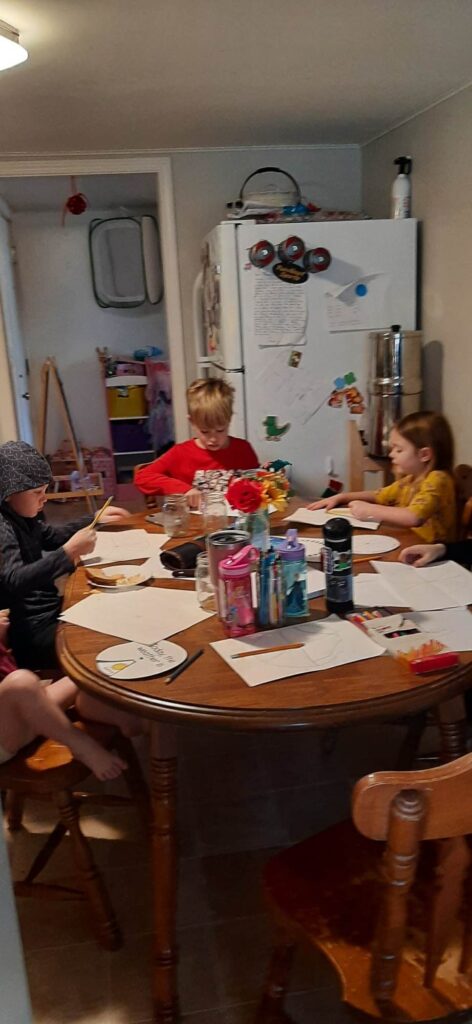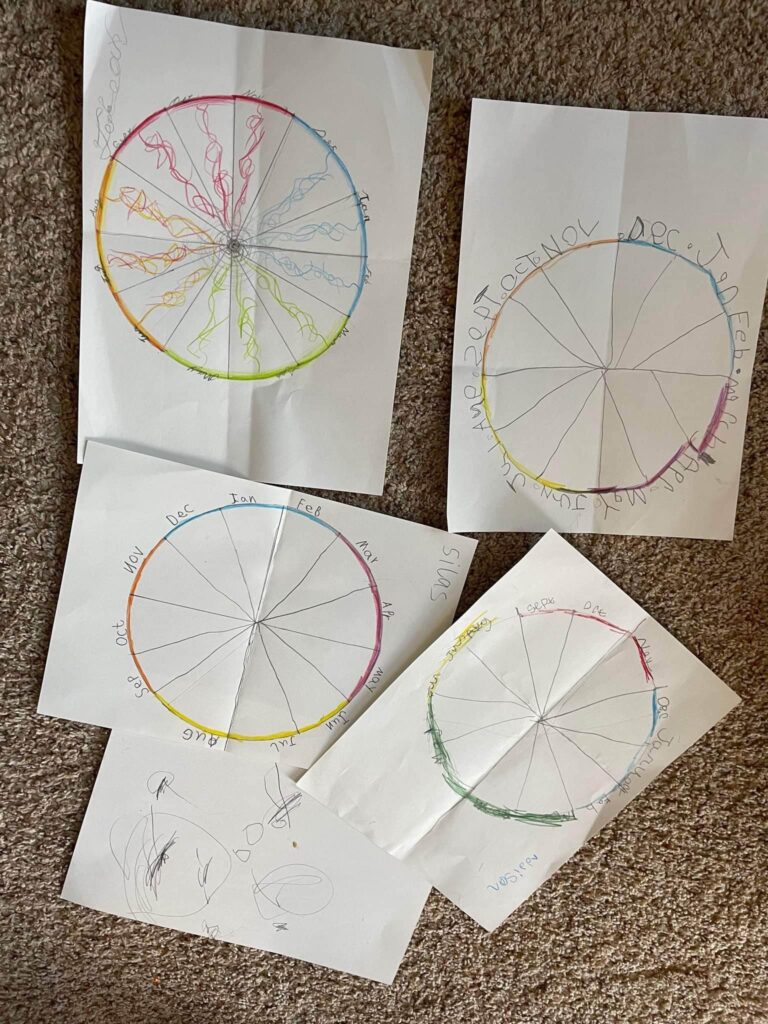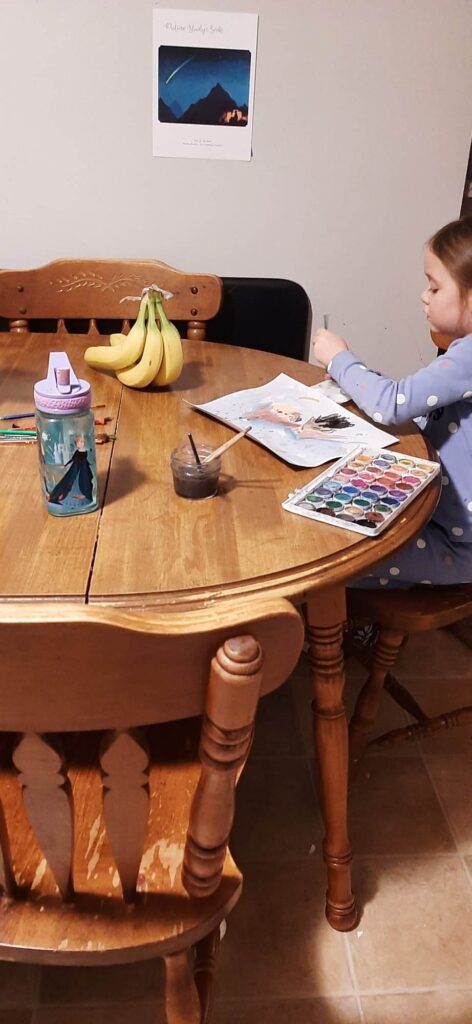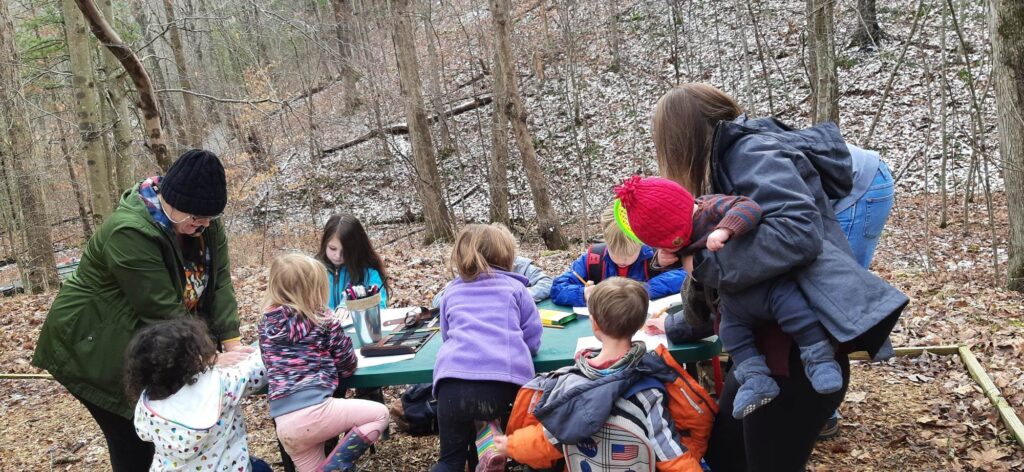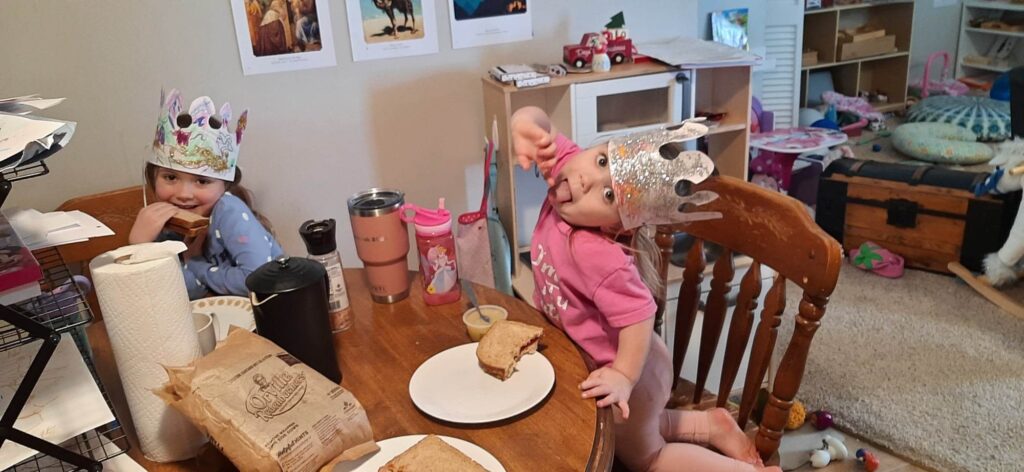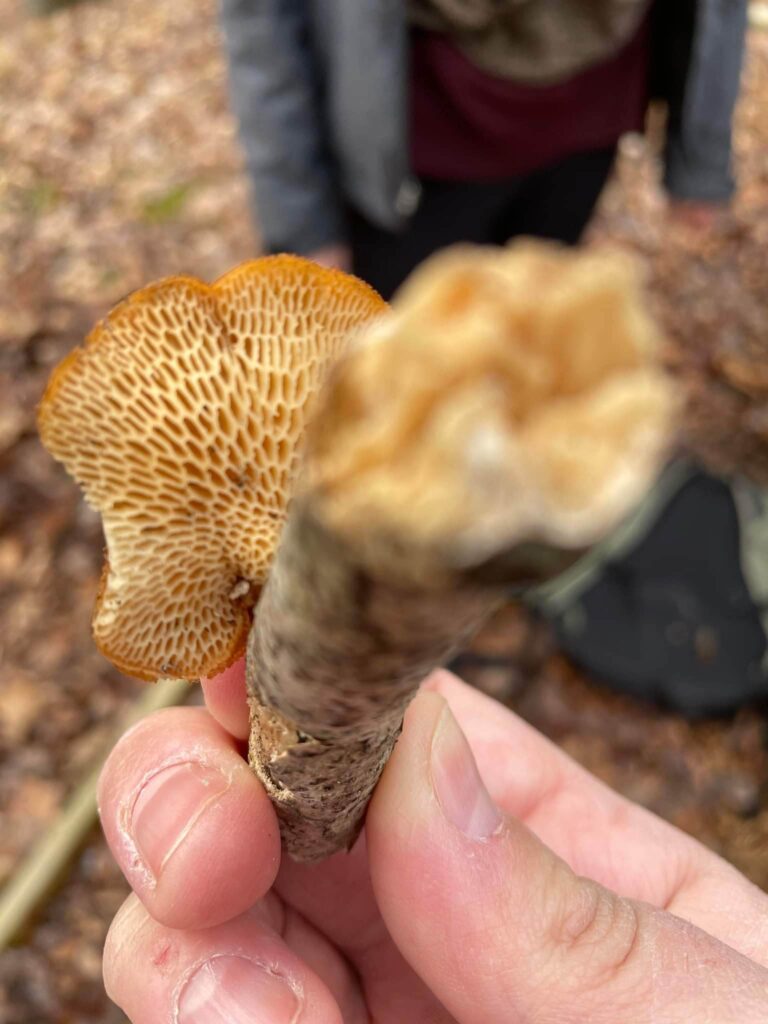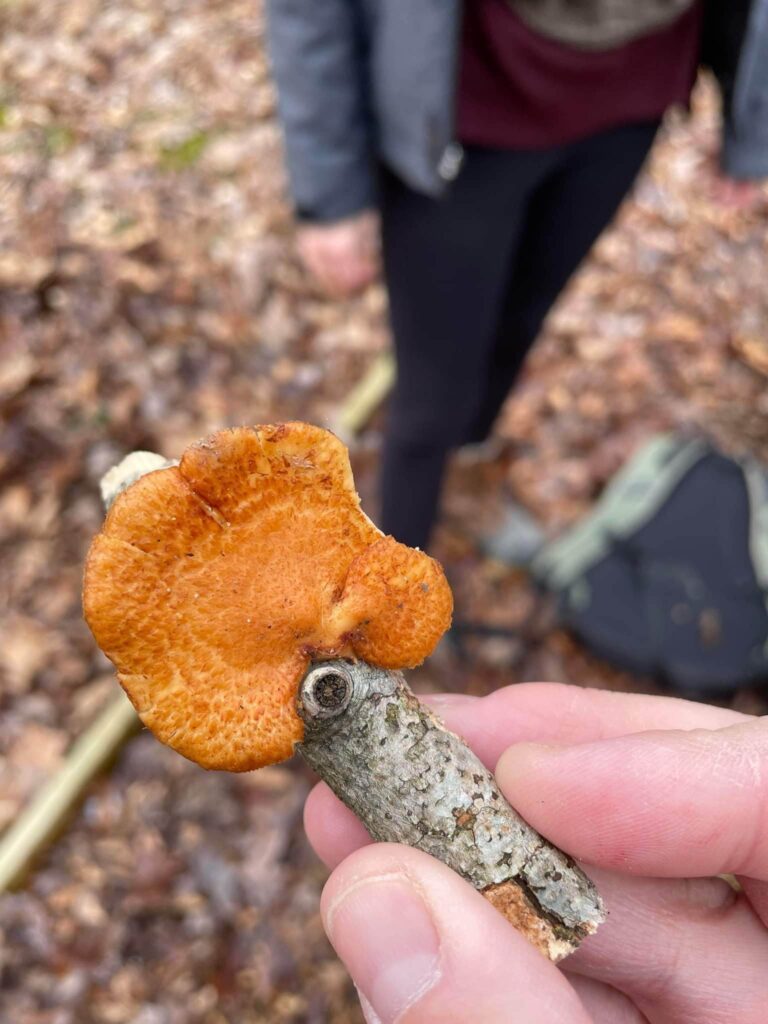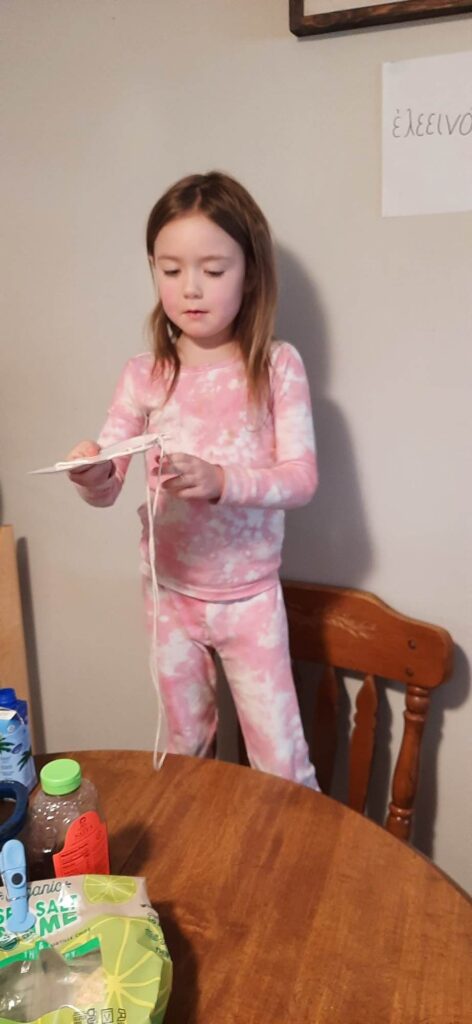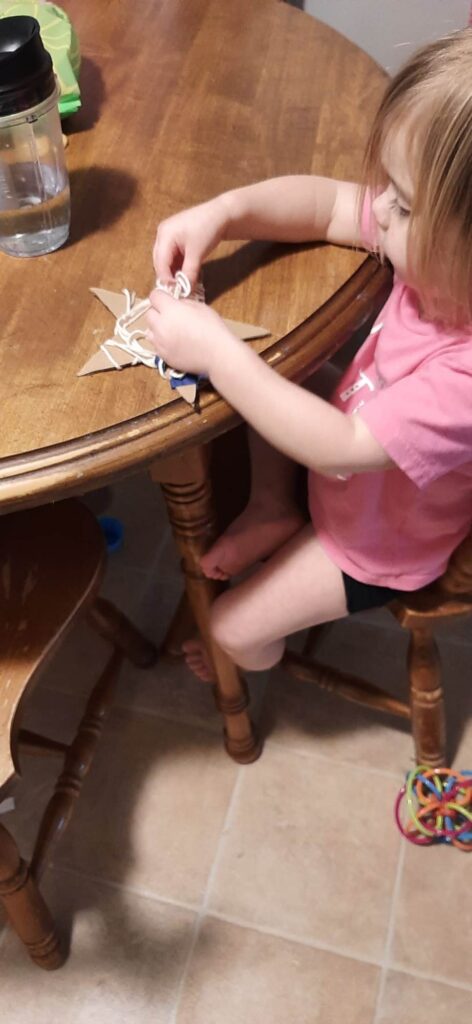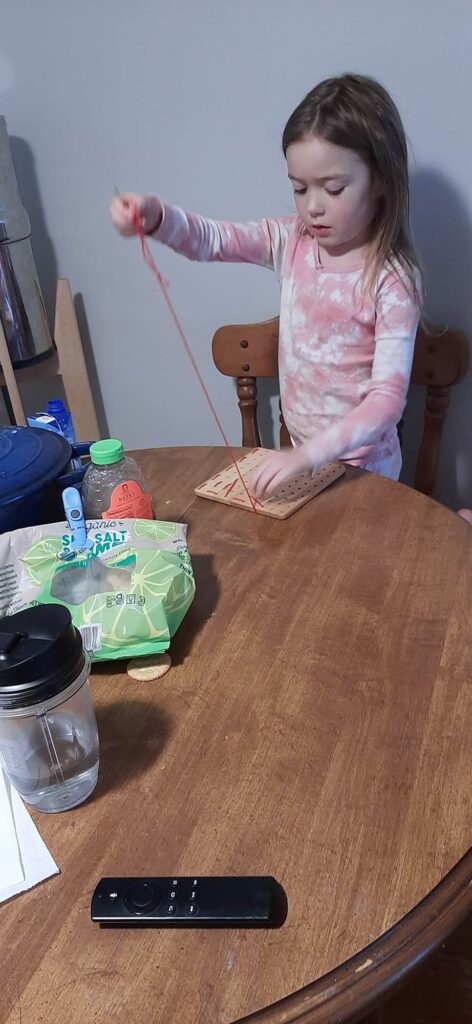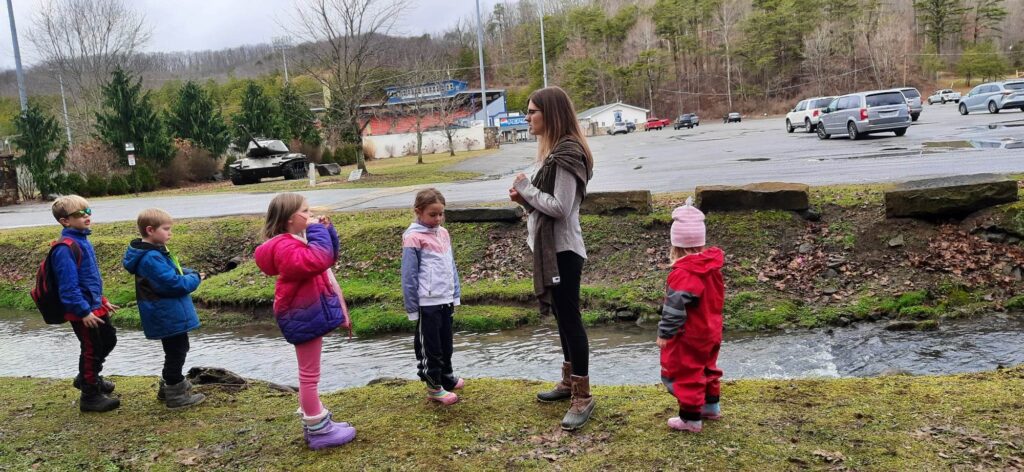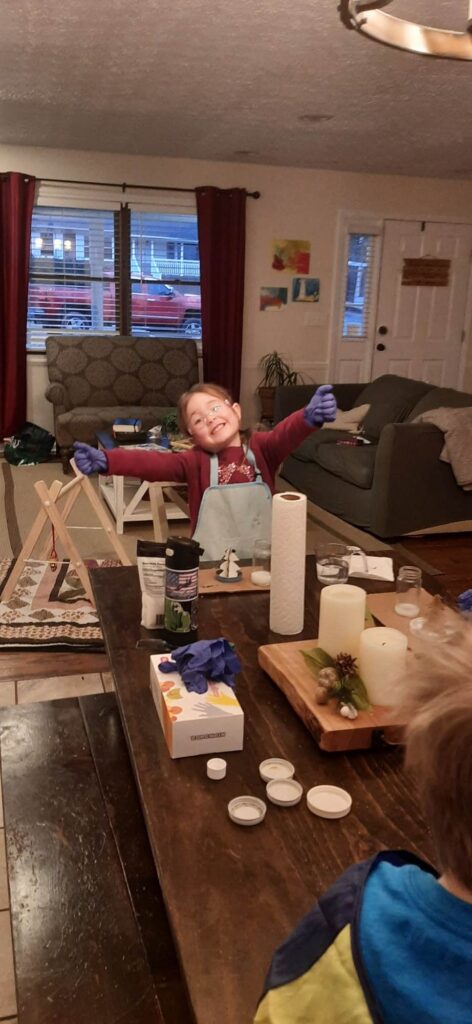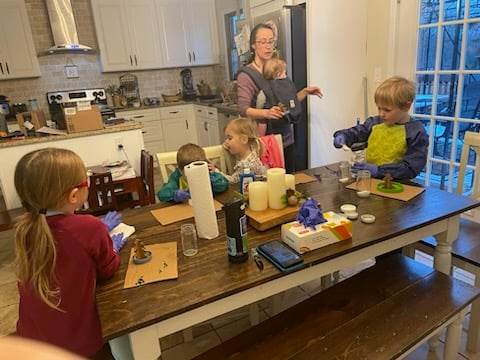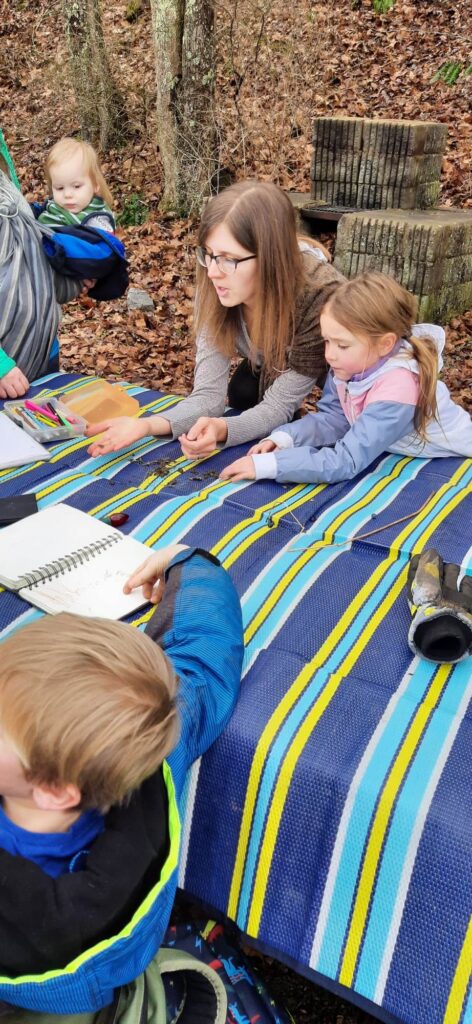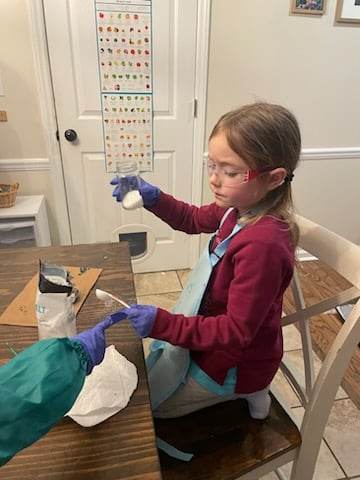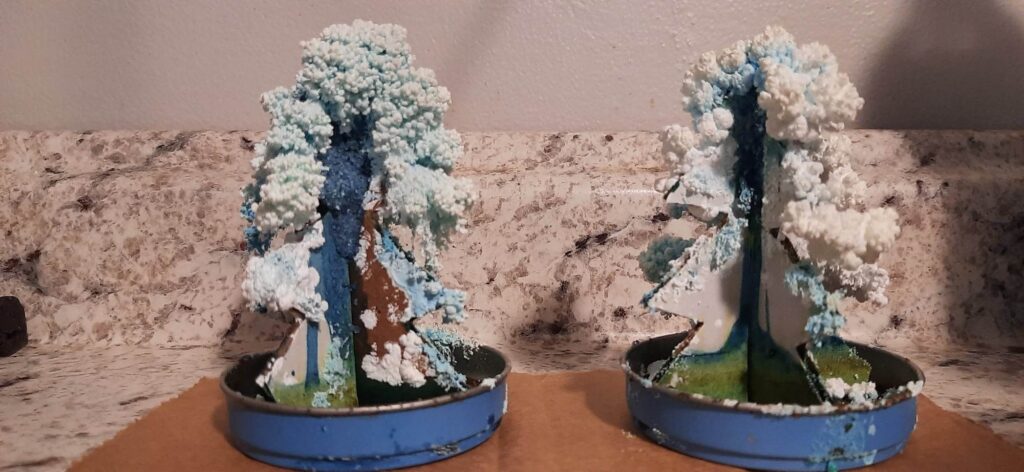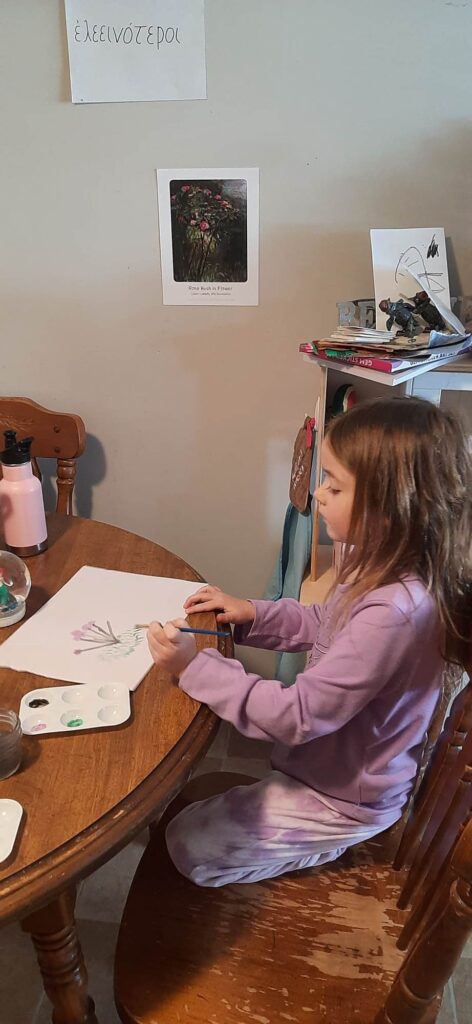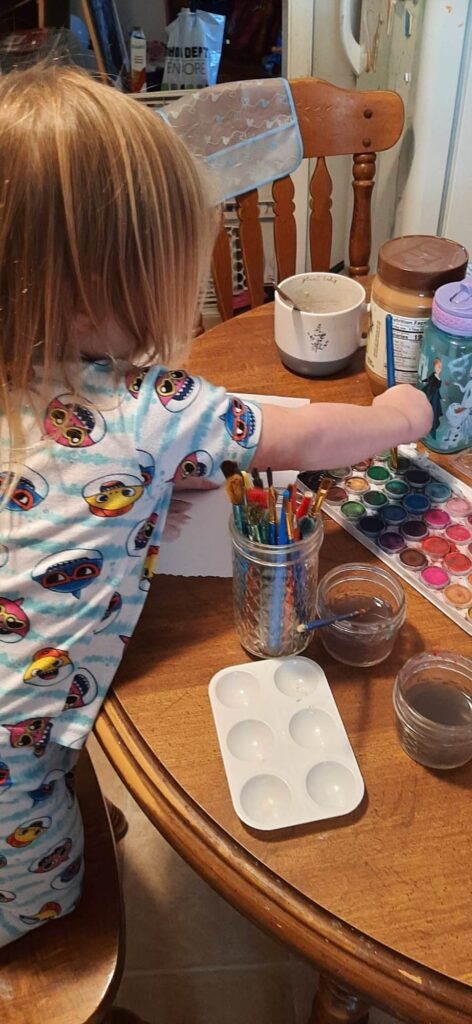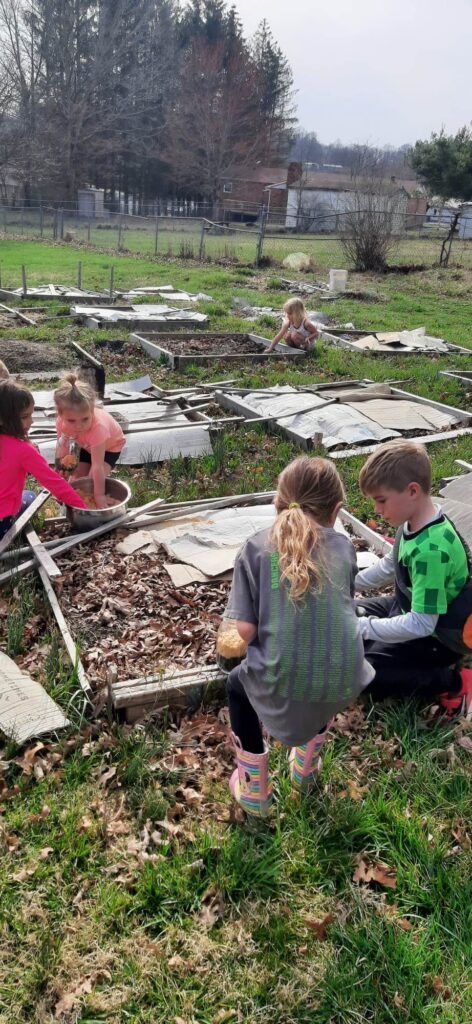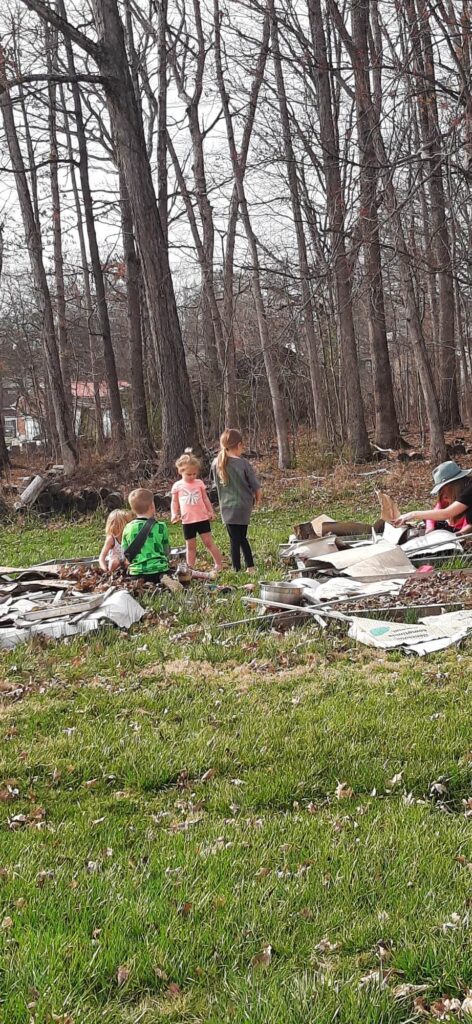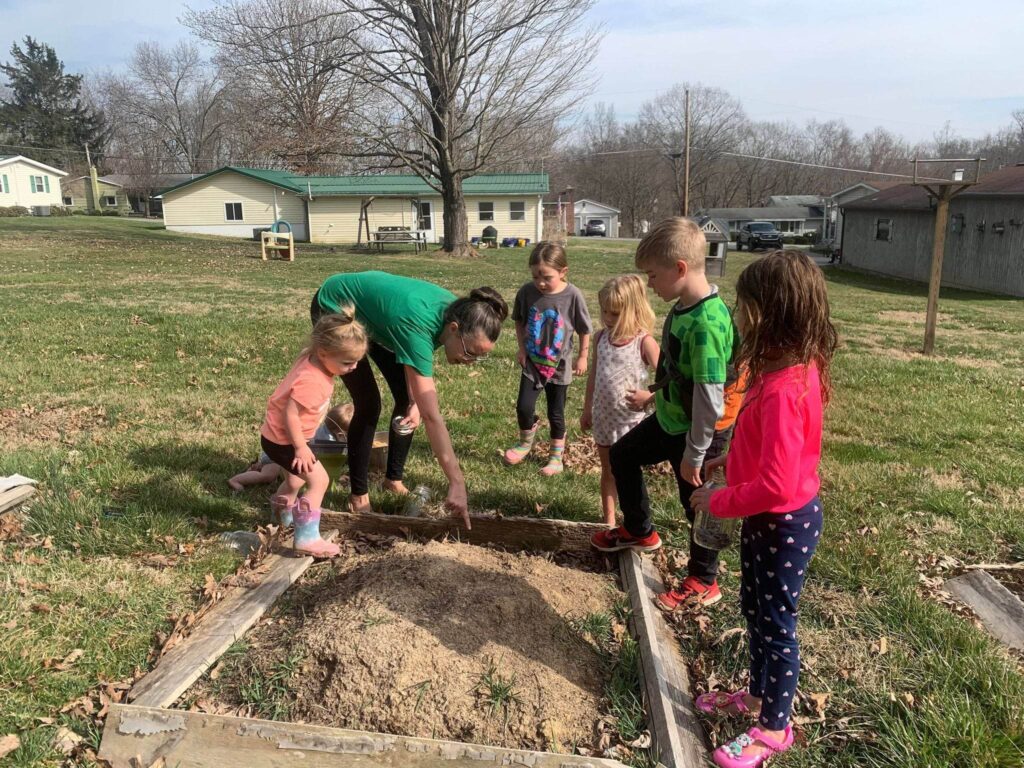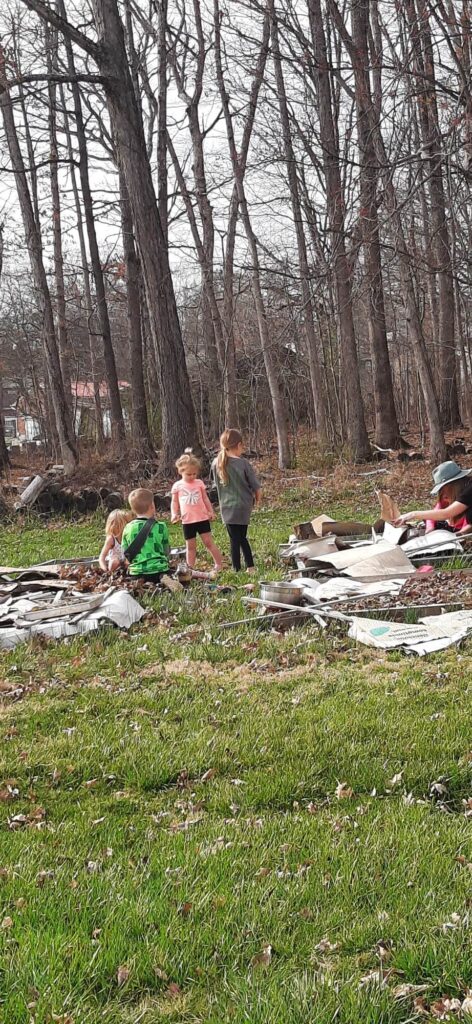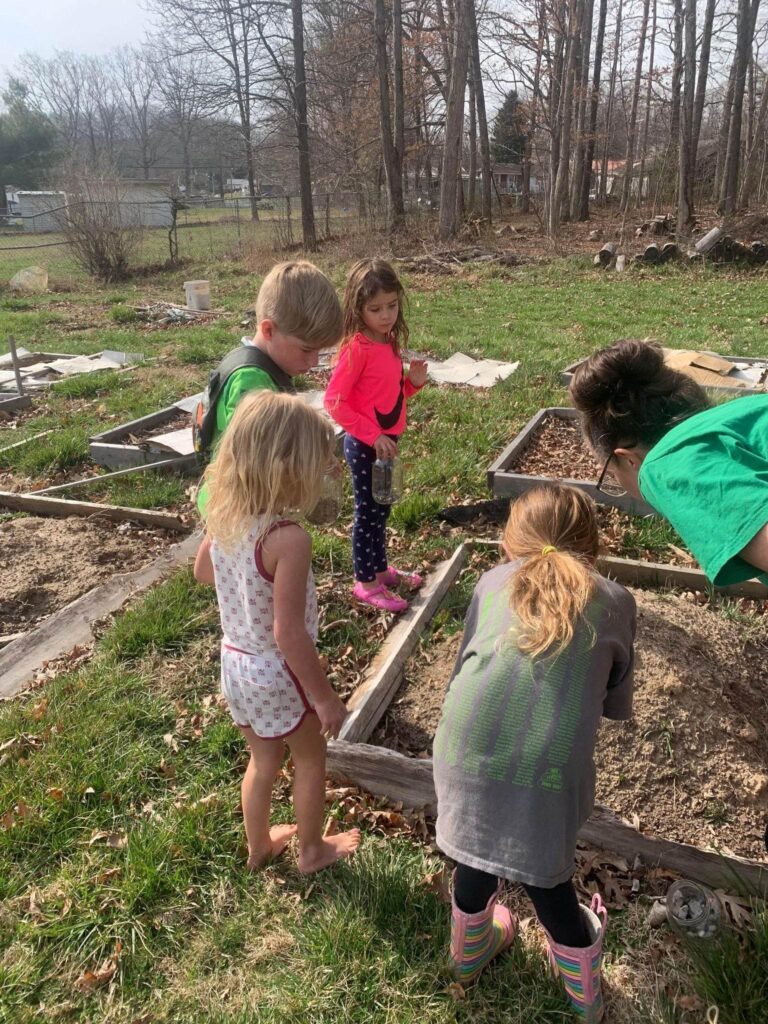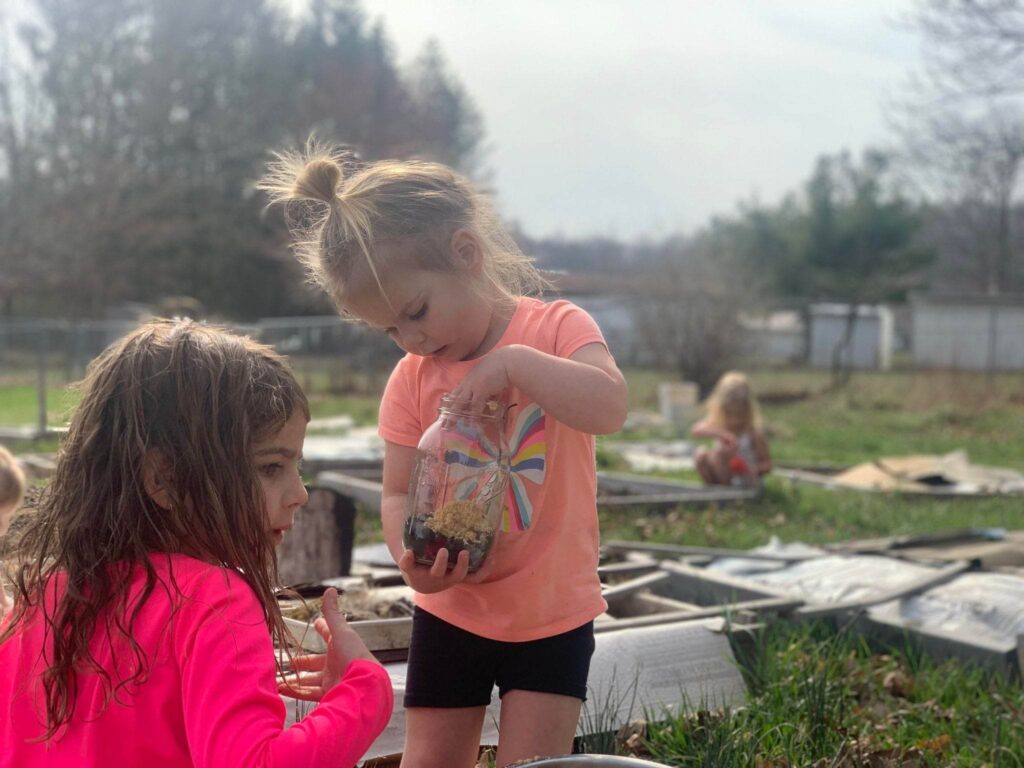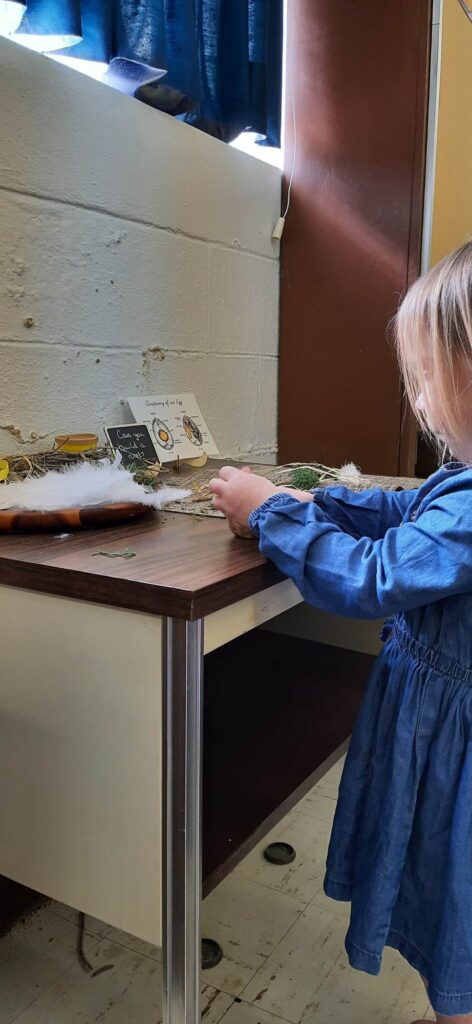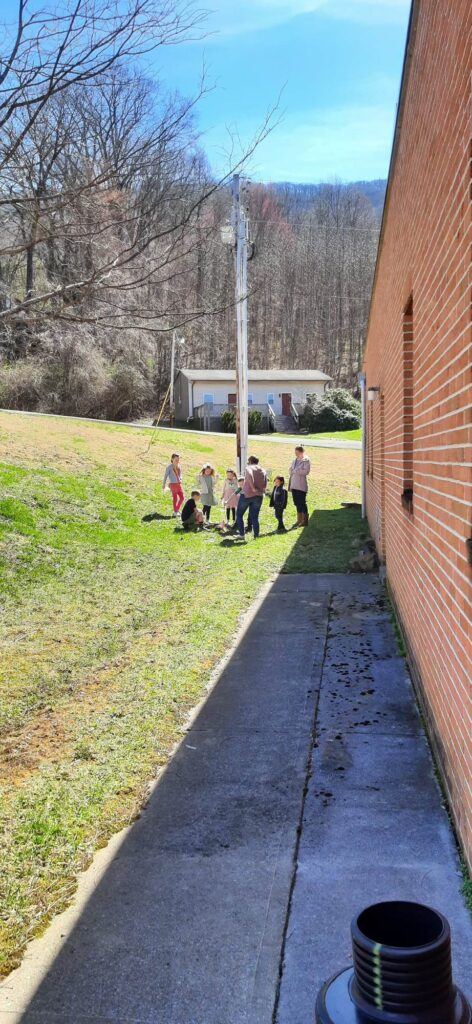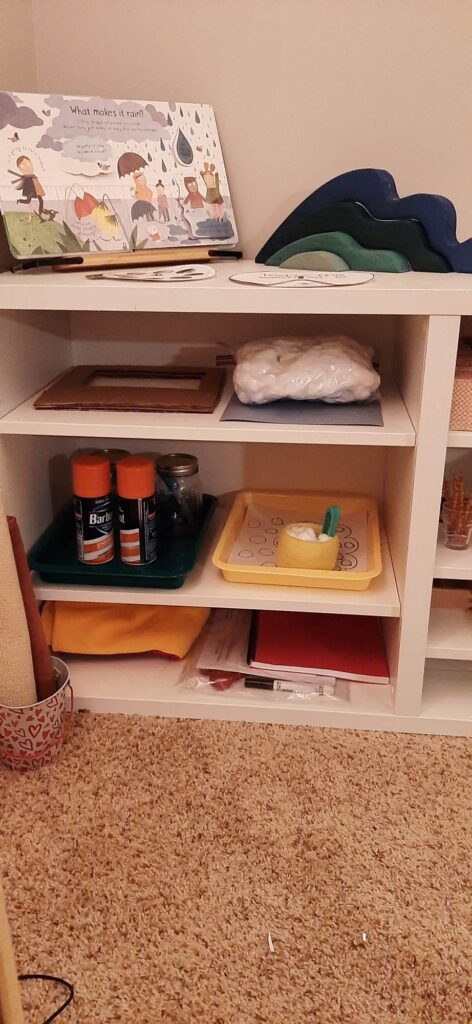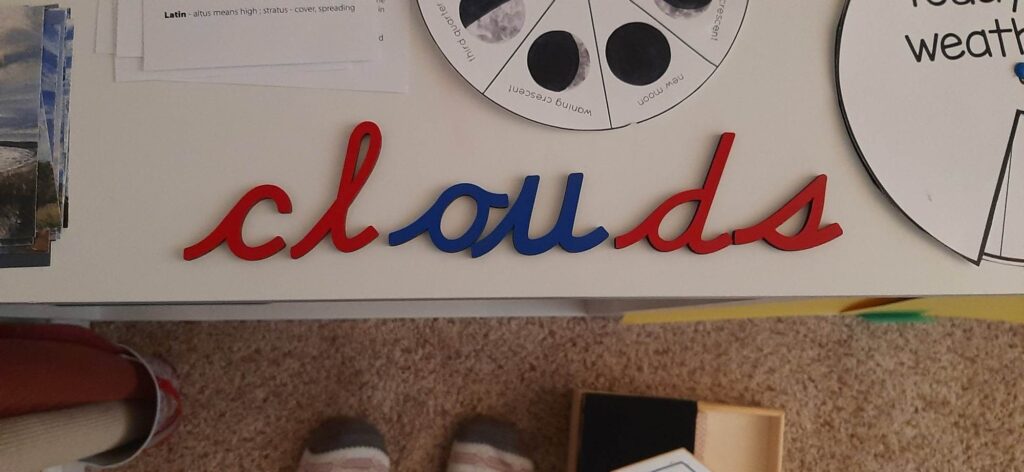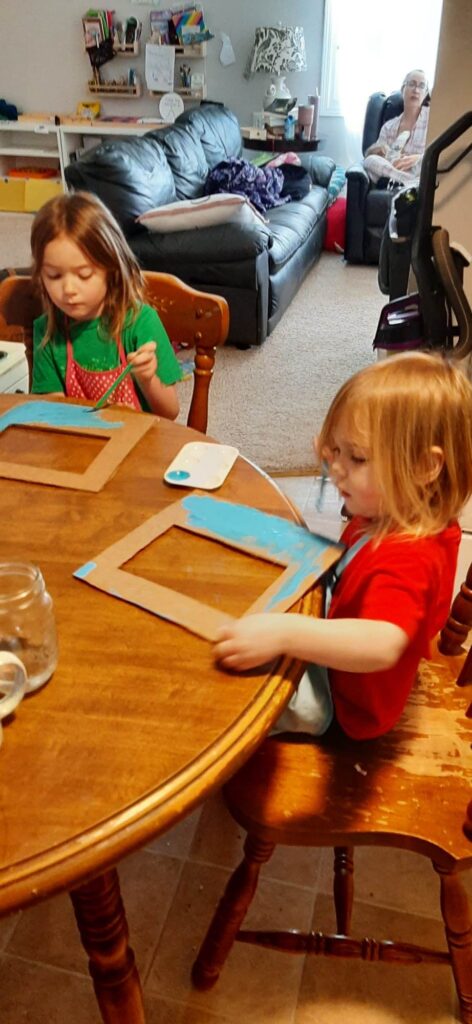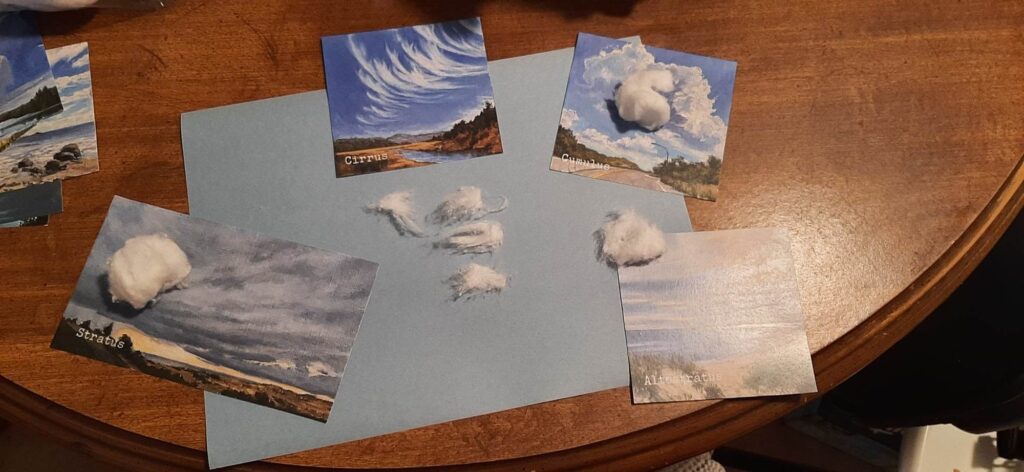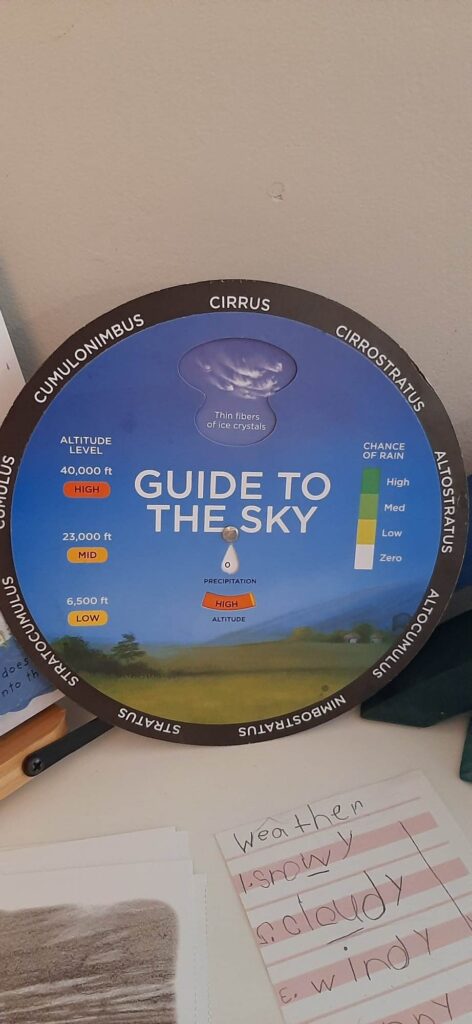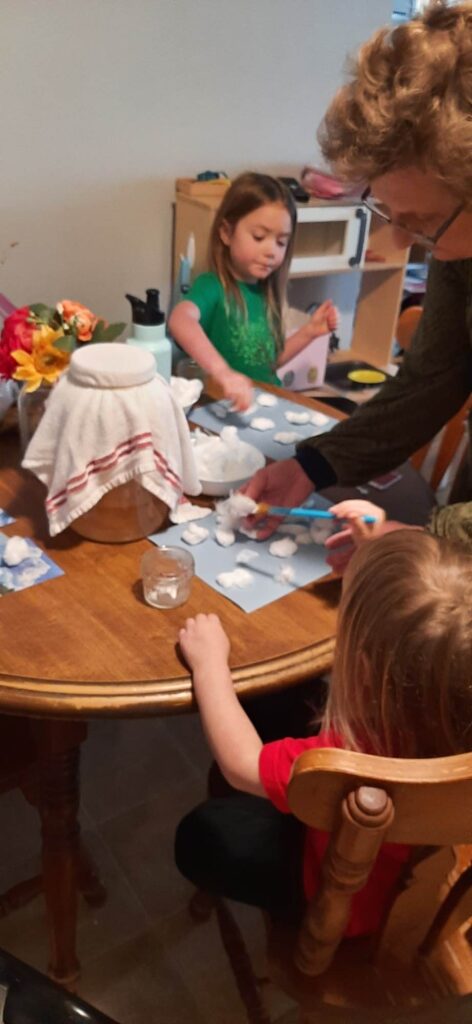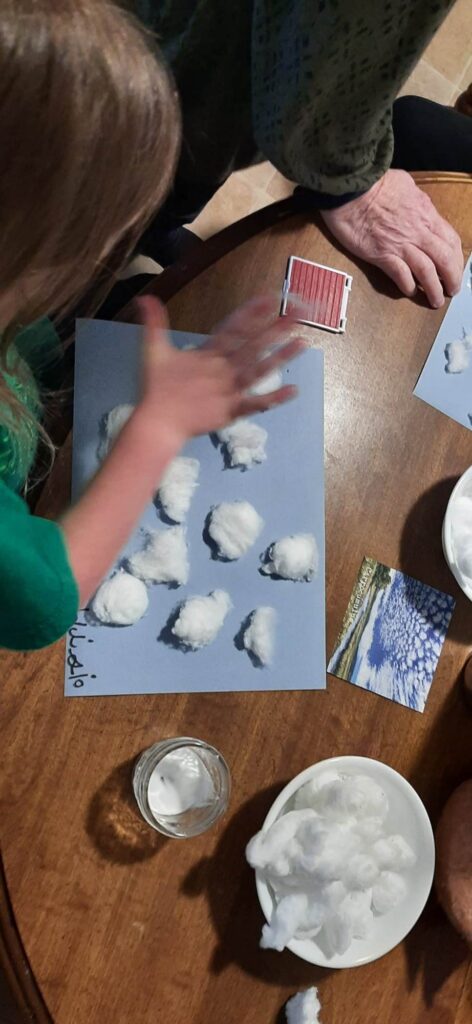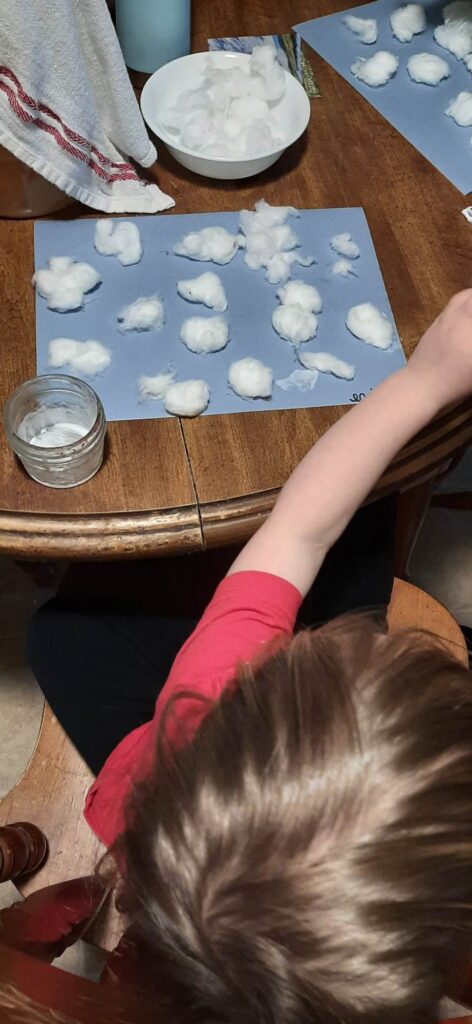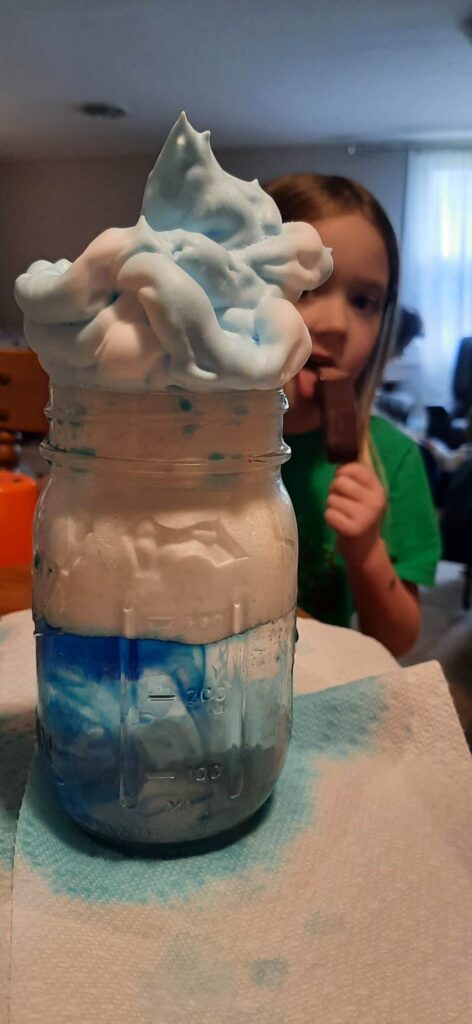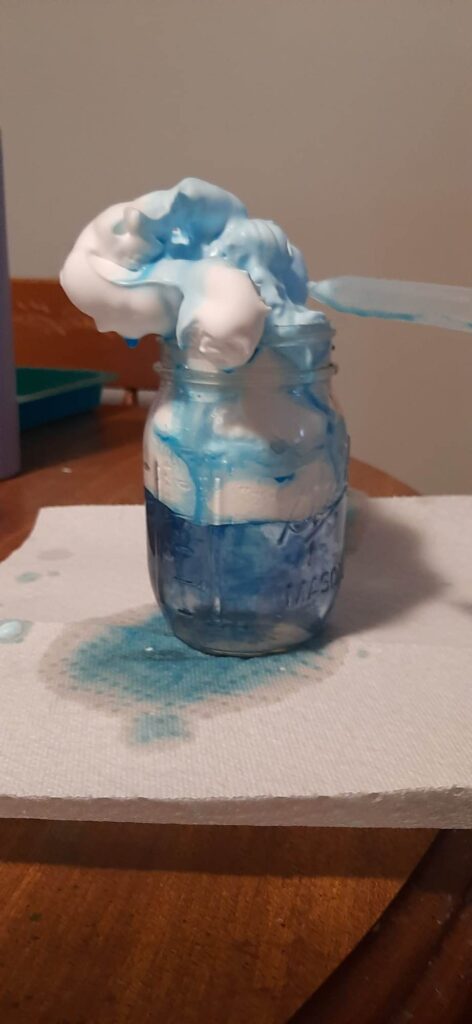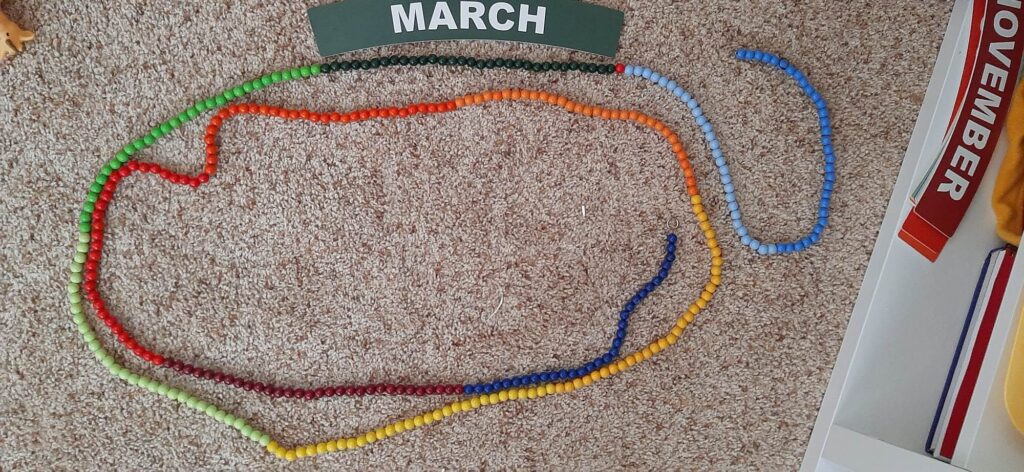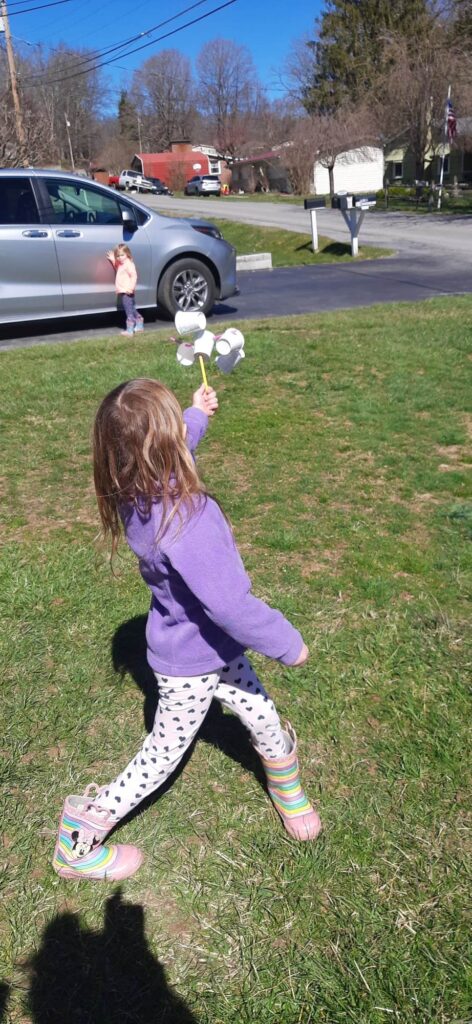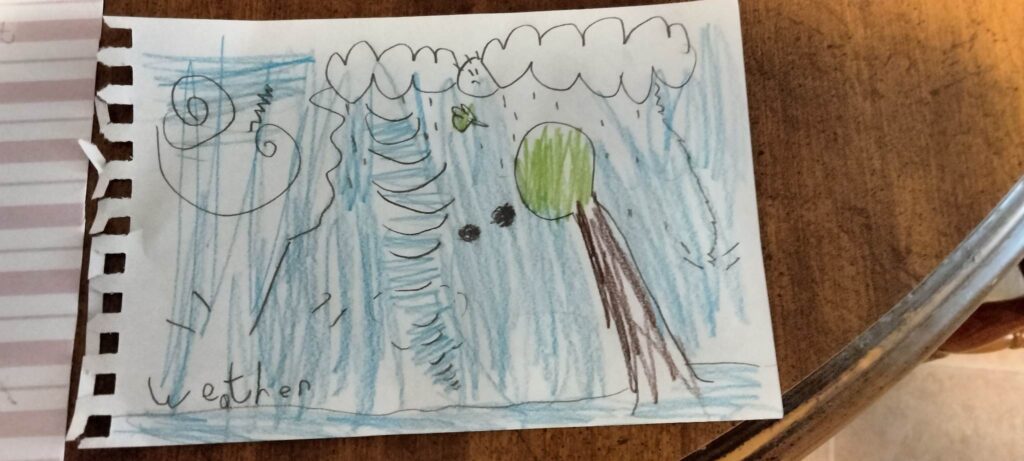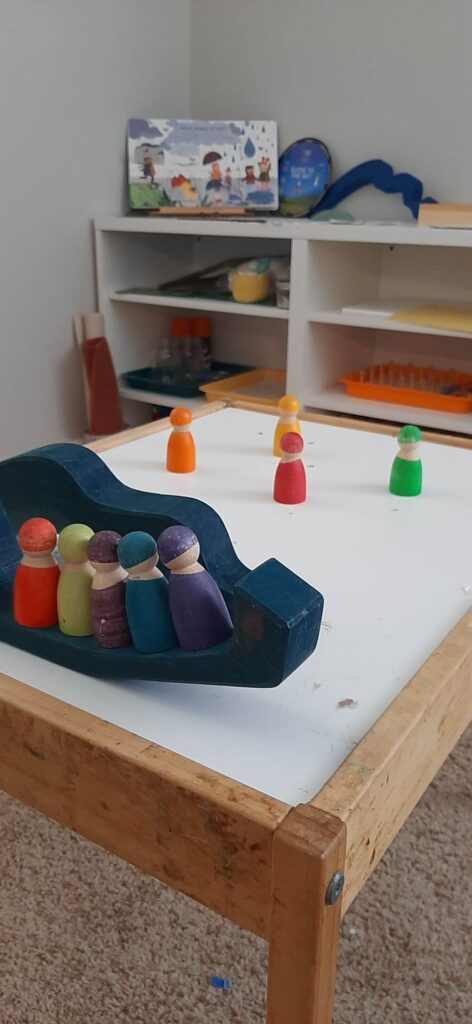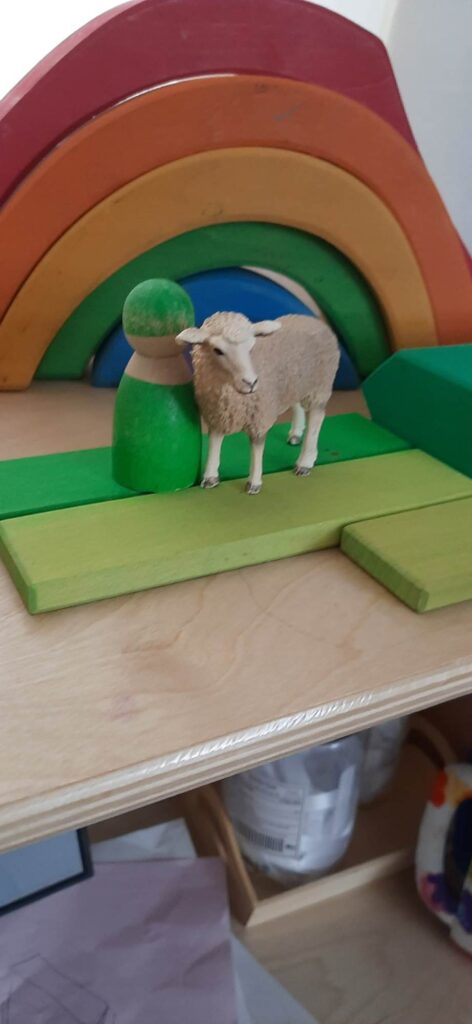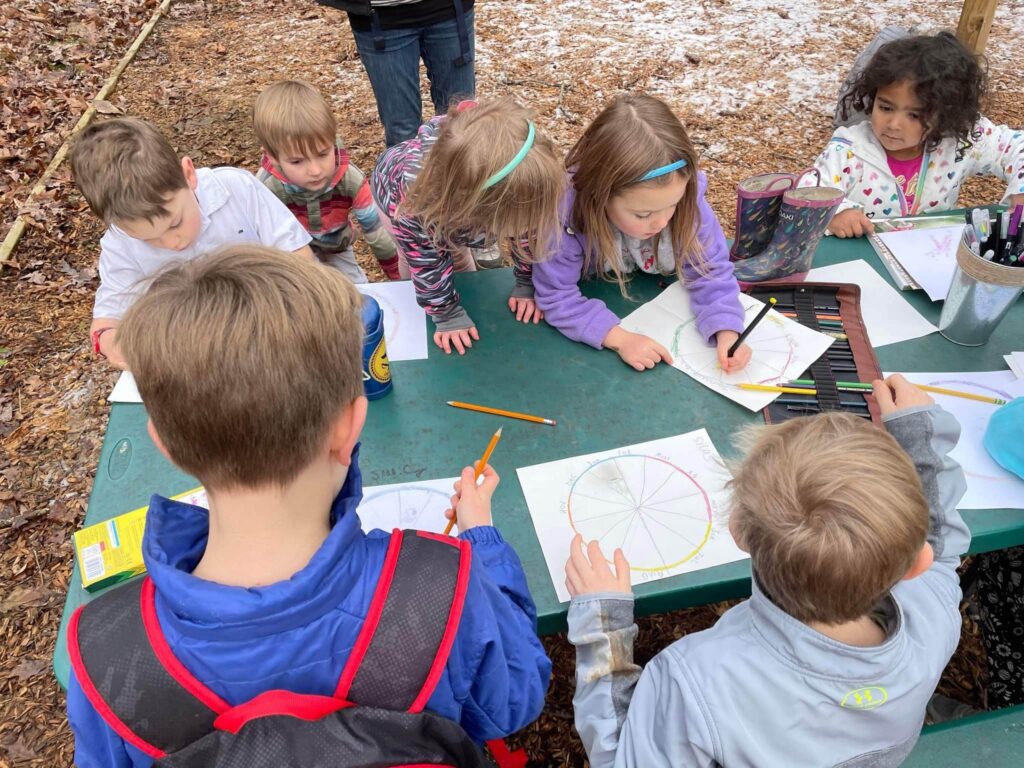Winter Recap 2022
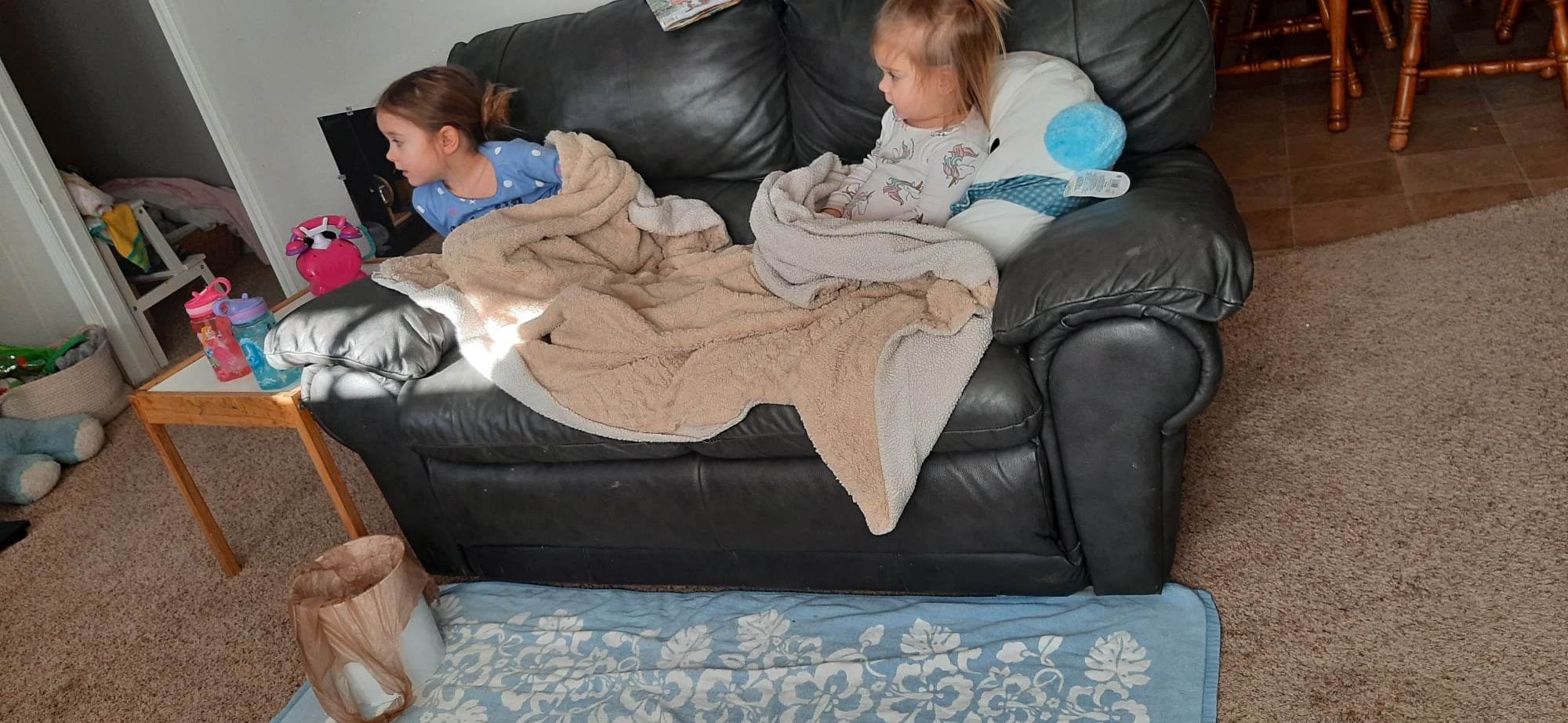
My goodness. How is it spring already? How are we almost done for this school year??? Well. Basically. We have 8-10 weeks left depending on when we get through a few goals for reading and math. Seriously though. Didn’t we just start K5? Did I mention I have TWO in Primary now? We officially started the Montessori Primary (3-6) classroom with our now 3 year old in January. And the baby is basically a toddler who is almost a year old. TIME PLEASE SLOW DOWN.
Back to the point. What have we been doing over here at the French Monti Homeschool? Little Miss 3 had her Walk around the Sun and began the sensorial materials. We’ve done LOTS of Grace and Courtesy lessons (for both girls lol!) and really leaned into reading and math with my oldest. Of course we’ve cranked out some fun cultural work as well. If you are new to Montessori, there’s a good run down of Montessori Primary in this post.
Practical Life
Both of my daughters participate in practical life. For my oldest, it looks more like baking, early sowing, vacuuming, dusting, sweeping, folding clothes and early weaving work. We began the knitting sequence as well but really have just gotten started. For my 3 year old, she LOVES transfer work. Especially liquid. Washing dishes (or anything she can wash) is a big hit. She also loves helping me put the laundry over. Some practical life activities that have been on our shelf for hand strengthening are: chunky crayons, painting, sidewalk chalk, cutting and snipping work, geoboard, single hole puncher, and a hand crank paper shredder. We also get in outside practical life work often! In our home practical life work is a mix of on the shelf and off the shelf work. Remember, Montessori recreated the home in her Primary classroom – no need to recreate it when you are home. Just make it accessible to the child. I go into more detail about the importance of practical life here.
Here’s a little look at some of our practical life moments:
Sensorial
The sensorial materials mark the official start of the 3-6 classroom and Miss 3 loves them. She has thoroughly enjoyed the knobbed cylinders. We’ve also introduced the pink tower, the color tablets, and the circles in the geometric shapes (on Pi Day!). She’s worked worked with everything but the circles multiple times.
My oldest has completed her sensorial work at this point but we still utilize them on occasion. We reference the geometric cabinet and this will continue to be a valuable resource into Elementary for Geometry. We pulled out the geometric solids to build our own this past November and we may need to pull out the binomial or trinomial cubes again but at this point in the sequence, they aren’t getting much love (and that’s totally natural).
Language
There is so much that goes on in Montessori Language. Read a-loud. Questions and answers. Vocabulary (organic and 3 part cards). Sound Games. Phonemic Awareness. Phonological Awareness. Not to mention the things that are easier to track like penmanship, writing, and grammar. I have three children in three different places in their language journeys. The baby is in the beginning of the language acquisition phase. My three year old is refining her speech, hungry to observe and add to her vocabulary (especially if it is sissy’s lesson), and my 5 year old is learning to refine her spoken and written language and has shifted from a beginning reader to an emergent reader. I am so blessed and incredibly grateful to be a part of all three of their growth journeys and absolutely LOVE this area of learning (although I am slowly falling in love with Monti math! My goodness it is fun + brilliant.)
Right now my 3 year old is:
- Sound Games (Level 1 – limited choices)
- Sequencing
- Matching Work 1:1 (pictures, colors)
Penmanship
In the Montessori handwriting progression, we have made it through capital letters and periods (number 12 on this list). She regularly practices both print and cursive at this point (although we initially started with cursive and I often require it. And I have not formally taught print.) I am prepping for transcription work soon. Here are some samples of her handwriting work this past winter:
Writing
This is not handwriting or penmanship. This is forming sentences, recording ideas, creating with words. Although there has been a little moveable alphabet work, my oldest regularly chooses to handwrite her thoughts and ideas and has begun shifting away from phonetic spelling (although it is still present). She regularly asks how to spell things and I encourage her to listen to the word (as she would before) and give her the spelling rule if it is different (which she currently loves). She will really enjoy the phonological folders this spring.
Reading
At the end of the fall Miss 5 was solidly a beginning reader. Reading CVC words, working through multisyllabic words, continuing to practice blending (especially multisyllabic words and 4+ sounds). She mastered the second language object box and worked through the first and second sets of action words this winter. She began reading sentences with phonogram sounds and multisyllabic words (although this is still challenging work for her – she doesn’t always choose it). She also began her first set of puzzle words. By the end of the season, she went from beginning reader to emergent reader. Here’s a little look at her reading work this past winter:
Grammar Farm
The function of words. Just before the first day of spring I gave the first formal grammar lesson in the Montessori Primary Grammar sequence. The function of words lessons are very hands on and fun. I have enjoyed this time with my daughter sharing these grammar lessons and observing her discoveries. This first lesson was fun and light (as the rest have been so far) and is accompanied by a story called “The Multitude of Names Story”. After I told this story, we pulled out our barn, set it up and began labeling. Again, very fun work. My three year old was testing boundaries this day so it was a bit broken up but still fun. Isn’t that homeschool life though?

Math
As I have shared before, Math in Montessori doesn’t begin until around 4/4.5 and, while it varies by child, it does not come until after the red rods lesson has been given and mastered by the child in the sensorial sequence. My middle child is not there yet nor is she ready so my 5 year old is the only one working on formal math work. Prior to this math is organic.
This winter my 5 year old worked with:
- Addition with Golden Beads
- The Exchange Game
- Addition Strip Board
- The Bead Houses
- Multiplication with the Golden Beads
- Multiplication with Clovers
- Adding Fractions with like denominators (just once and because she was interested)
In non-Montessori Language that list means she has done:
- Static addition with four digit numbers
- Exchange game: to make the child aware that ten units can be changed into a ten-bar, ten ten-bars can be changed into a hundred square, and ten hundred squares can be changed into a thousand cube. This sensorially prepares the child and lays the foundation for dynamic addition (where you need to carry the number).
- Addition Math Facts (Huge focus 0-10)
- Number bonds
- Static Multiplication with Four Digits
- 2 Week Focus on Multiplying Numbers 0-9 (clover addition and golden beads used as counters)
- Adding Fractions with like denominators (just once and because she was interested)
Here’s a little look at her work:
Cultural
We did several FUN areas of study that fall under the umbrella of cultural studies. This is technically a part of the language curriculum but it encompasses quite a bit so I prefer to give it it’s own category. The cultural category includes: art, dance, music, Geography, History, Science (Physical, Biology, Zoology, Botany), Peace Curriculum and Spanish. Our cultural studies often include multiple subjects and when we do units (which we love to do) it often language, art, practical life, and when we can even sensorial. This winter we studied Advent, Christmas plants, Coniferous Trees, the Taiga Biome, and did a month long unit on Epiphany. We did a special Valentine’s Mini Unit, had a day to focus on oral health in February, and even made “Chemis-Trees” to wrap up our coniferous tree study. We made a wormery with friends, started phonological wheels, discovered signs of early spring, and started a weather unit (cloud study complete 🙌). We tied in lots of art, music, penmanship practice, writing prompts, and vocabulary to our studies. When we can, we tie in all areas of study to our cultural units. Here is a look at some of what we did:
Bible
This winter we continued to work our way through “Everything a Child Should Know about God” but we took a long break to focus on the season of Epiphany. I found a lovely unit from Green Urban Creative that tied in art, writing work, penmanship, and Botany quite well. We did a Noah’s Ark focus (that is still on the shelves and that we will discuss at least 2 more times with our extreme weather study and rainbow/light study). We have been studying how we are to be in a world that is counter cultural to our faith as we study of the prophets during the exile (Ezekiel, Daniel, and Jeremiah) as well. We started this after our big focus on Noah’s Ark (about a week long?). We did a two day focus on St. Patrick and the Trinity on St. Patrick’s day and the Saturday that followed. I talk more about that here. We also began to focus on Miss 5’s person of interest for her homeschool event called, Hall of Heroes. She will research, put together a poster, a costume and be “in character” while people ask questions to try and guess who she is. We are about a month out from this.
This winter we tried to slow down, be present together, have lots of time to read-a-loud, embrace the slower pace that multiple illnesses brought (nothing crazy, just building those little immune systems!) and still make time to be active in God’s creation. We made space for some winter hiking and pushed ourselves outside of our comfort zones a bit. I can honestly say I don’t regret the time I have spent making memories with these tiny humans. I love being their guide.
If you liked this post, you’ll love these:
